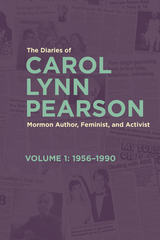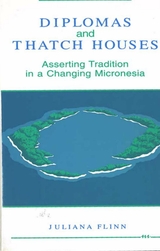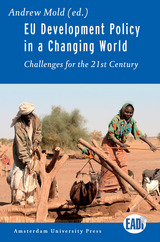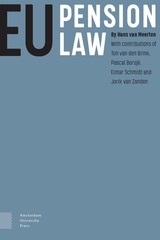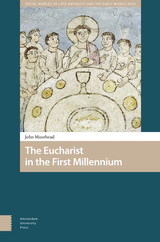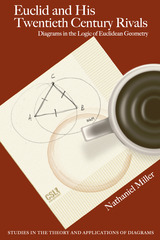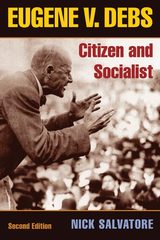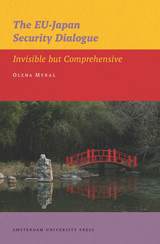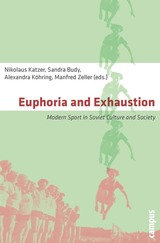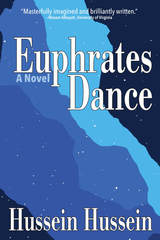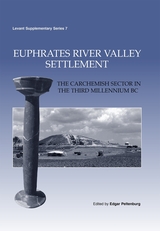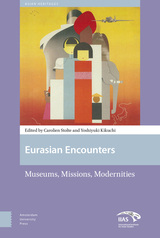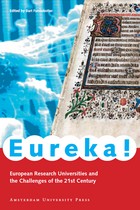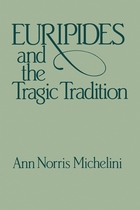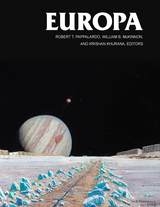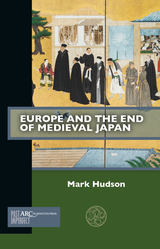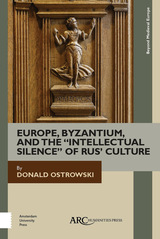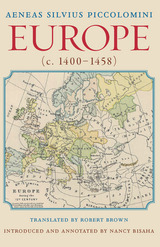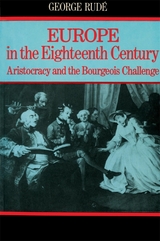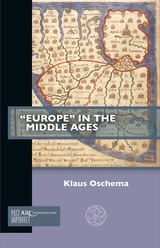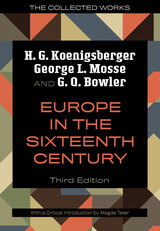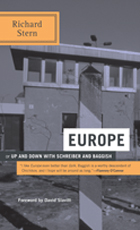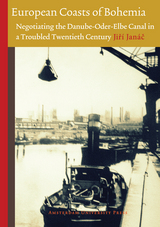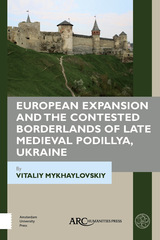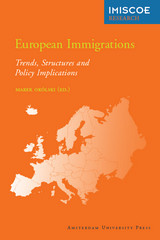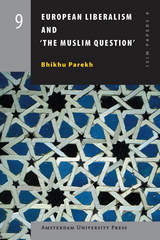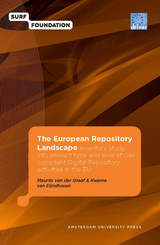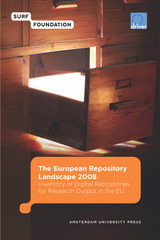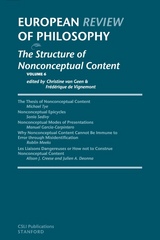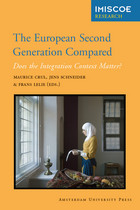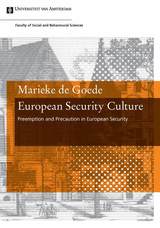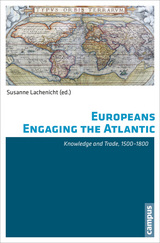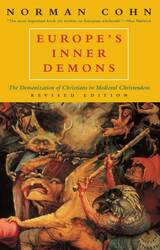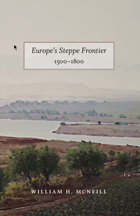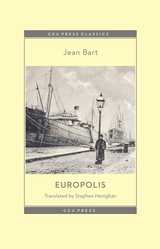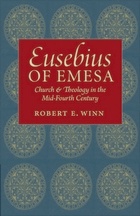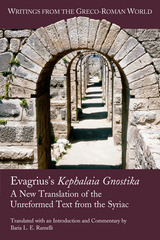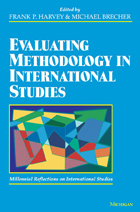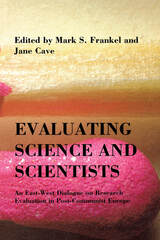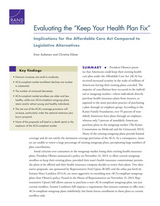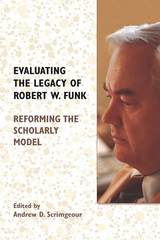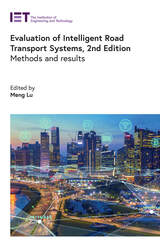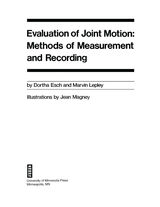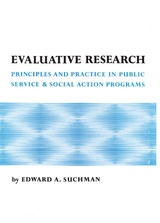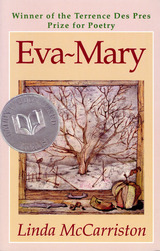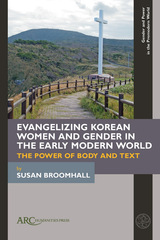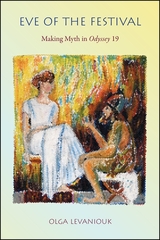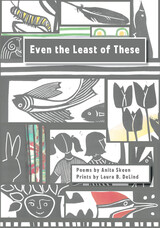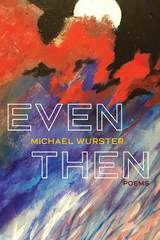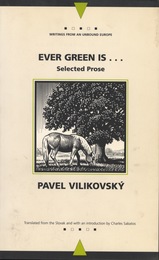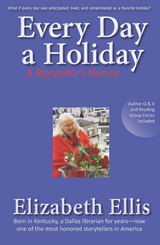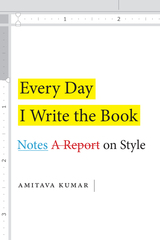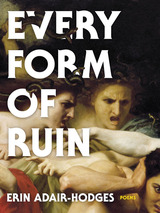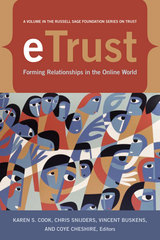 eTrust: Forming Relationships in the Online World
Karen S. Cook
Russell Sage Foundation, 2009 There is one thing that moves online consumers to click "add to cart," that allows sellers to accept certain forms of online payment, and that makes online product reviews meaningful: trust. Without trust, online interactions can't advance. But how is trust among strangers established on the Internet? What role does reputation play in the formation of online trust? In eTrust, editors Karen Cook, Chris Snijders, Vincent Buskens, and Coye Cheshire explore the unmapped territory where trust, reputation, and online relationships intersect, with major implications for online commerce and social networking. eTrust uses experimental studies and field research to examine how trust in anonymous online exchanges can create or diminish cooperation between people. The first part of the volume looks at how feedback affects online auctions using trust experiments. Gary Bolton and Axel Ockenfels find that the availability of feedback leads to more trust among one-time buyers, while Davide Barrera and Vincent Buskens demonstrate that, in investment transactions, the buyer's own experience guides decision making about future transactions with sellers. The field studies in Part II of the book examine the degree to which reputation facilitates trust in online exchanges. Andreas Diekmann, Ben Jann, and David Wyder identify a "reputation premium" in mobile phone auctions, which not only drives future transactions between buyers and sellers but also payment modes and starting bids. Chris Snijders and Jeroen Weesie shift focus to the market for online programmers, where tough competition among programmers allows buyers to shop around. The book's third section reveals how the quality and quantity of available information influences actual marketplace participants. Sonja Utz finds that even when unforeseen accidents hinder transactions—lost packages, computer crashes—the seller is still less likely to overcome repercussions from the negative feedback of dissatisfied buyers. So much of our lives are becoming enmeshed with the Internet, where ordinary social cues and reputational networks that support trust in the real world simply don't apply. eTrust breaks new ground by articulating the conditions under which trust can evolve and grow online, providing both theoretical and practical insights for anyone interested in how online relationships influence our decisions. A Volume in the Russell Sage Foundation Series on Trust
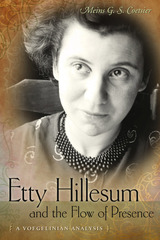 Etty Hillesum and the Flow of Presence: A Voegelinian Analysis
Meins G. S. Coetsier
University of Missouri Press, 2008 Although she died cruelly at Auschwitz at the age of twenty-nine, Etty Hillesum left a lasting legacy of mystical thought in her letters and diaries. Hillesum was a complex and powerful witness to the openness of the human spirit to the call of God, even under the most harrowing circumstances. Her life was as much shaped by Hitler’s regime as was that of philosopher Eric Voegelin, and as Meins Coetsier reveals, her thought lends itself to interpretation from a uniquely Voegelinian perspective. Etty Hillesum and the Flow of Presence analyzes the life and writings of Hillesum from the standpoint of Voegelin’s views on consciousness—especially his philosophy of luminous participation in the transcendent ground of being. Through a careful reading of her letters and diaries, Coetsier reveals the inner development of Hillesum’s mystically grounded resistance to Nazism as he guides readers through the symbolism of her spiritual journey, making effective use of Voegelin’s analytics of experience and symbolization to trace her path to spiritual truth. Intertwining the lives, works, and visions of these two mystical thinkers, Coetsier demonstrates his mastery of both Voegelin’s philosophy and Hillesum’s Dutch-language materials. He shows how mystical attunement to the “flow of presence”—Voegelin’s designation for human responsiveness to the divine—is the key to the development of Hillesum’s life and writings. He displays a special affinity for the suffering and grace-filled transformation that she underwent as she approached the end of her life and gained insight into the ultimate purpose of each individual’s contribution to the well-being and maintenance of the human spirit. Retrieving one of the lesser-known but most compelling figures of the Holocaust, Etty Hillesum and the Flow of Presence is an original contribution to both Voegelin and Hillesum scholarship that reflects these writers’ strong valuation of the human person. It presents Hillesum’s life and work in an original and provocative context, shedding new light on her experiences and their symbolizations while further broadening the application of Voegelin’s thought
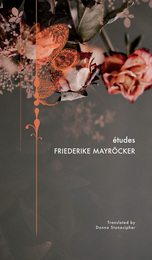 études
Friederike Mayröcker
Seagull Books, 2019 A diary-like sequence of poems from one of Austria’s best-known contemporary voices.
Exploring longing, lust for life, aging, mortality, grief, and flowers in her inimitable late style, études is a diary-like sequence of poems by one of the greatest living Austrian poets. Friederike Mayröcker’s almost daily entries give us a unique view into the interplay between desire and her motivation for writing. In Mayröcker’s case, she writes both to keep a vanished world present and to exploit the possibilities of being present for constant experimentation.
The poems in this volume are not only studies of how the mind works, moving from fragment to fragment, but also experiments with techniques of repetition, typography, collage, and quotation. Mayröcker transforms the humble page into spaces of radical openness. After all, she says, a poem is that which “opens everything up.” Each poem is date-stamped, and each date acts as a kind of permission for Mayröcker to pour in everything from notes on doctor’s visits to gorgeously structured elegies to obsessively repeating fragments of memory that act upon the whole like bits of recurring melody.
Rarely before has the intimate process of writing been so exquisitely laid bare than in études. Traversing the boundaries of literary forms with Mayröcker’s distinctive style, this important volume strikes an admirable balance between playfulness and serious inquiry.
Etymologies
Walter Ancarrow
Omnidawn, 2023 A poetry collection that playfully questions the meanings of words.
Walter Ancarrow’s collection Etymologies considers language as a process, rather than as a singular fixed history. These poems build imaginative worlds with a variety of creative word uses. They form a playful amalgamation of linguistic interpretations that flips and questions conventional narratives about word origins—including the idea that clear origins even exist. Throughout the collection, Ancarrow questions the intent of writers who use etymology in attempts to prove a specific meaning for any word. In so doing, Etymologies pays particular attention to relationships between the cultures and conflicts, the migrations and hegemonies, that create our words, and it considers how their meanings are furthered by us as we keep them alive through speech.
Etymologies won Omnidawn’s 2021 Open Poetry Book Prize, selected by John Yau.
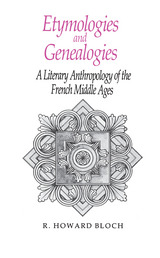 Etymologies and Genealogies: A Literary Anthropology of the French Middle Ages
R. Howard Bloch
University of Chicago Press, 1983 "Mr. Bloch has attempted to establish what he calls a 'literary anthropology.' The project is important and ambitious. It seems to me that Mr. Bloch has completely achieved this ambition." –Michel Foucault
"Bloch's Study is a genuinely interdisciplinary one, bringing together elements of history, ethnology, philology, philosophy, economics and literature, with the undoubted ambition of generating a new synthesis which will enable us to read the Middle Ages in a different light.
Stated simply, and in terms which do justice neither to the density nor the subtlety of his argument, Bloch's thesis is this: that medieval society perceived itself in terms of a vertical mode of descent from origins. This model is articulated etymologically in medieval theories of grammar and language, and is consequently reflected in historical and theological writings; it is also latent in the genealogical structure of the aristocratic family as it began to be organized in France in the twelfth century, and is made manifest in such systems of signs as heraldry and the adoption of patronymns. . . .
It is an ingenious and compelling synthesis which no medievalist, even on this side of the Atlantic, can afford to ignore." –Nicholas Mann, Times Literary Supplement
EU Development Policy in a Changing World: Challenges for the 21st Century
Edited by Andrew Mold
Amsterdam University Press, 2007
On many fronts, European Union development policy is at a critical juncture: in the face of new obstacles, the EU has been forced to rethink trade, security, and its relationship with neighbors in North Africa and the Middle East. Contentious questions have centered on the effects of EU expansion, agricultural protectionism, and development-friendly trade policy in the EU and its member nations. To answer these questions and others, this expertly edited volume draws on analysis from well-known specialists in fields such as public policy and economic development, providing a critical overview of EU development policy and the challenges it must confront in an increasingly volatile and changing world.
EU Pension Law
Hans van Meerten
Amsterdam University Press, 2019 EU pension law is a relatively new and rapidly growing field. The call for a broader practical understanding of EU pension law is growing, as pension markets are increasingly internationalized.
The handbook EU Pension Law discusses the most important financial EU legislation (IORP and PEPP) and non-financial legislation (such as the Charter of Fundamental Rights of the European Union) and its consequences for pensions. The book contains a collection of relevant articles and offers necessary basic knowledge. More importantly, it contains interesting practical cases, creating a unique bridge between theory and practice. Whether you are a student, a committed policymaker, an experienced market practitioner, or someone interested in European pension developments, EU Pension Law is designed for you.
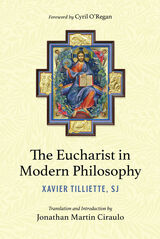 The Eucharist in Modern Philosophy
Xavier Tilliette
Catholic University of America Press, 2022 The Eucharist in Modern Philosophy is one of the last books written by the renowned Jesuit philosopher Xavier Tilliette (1921-2018), and the first to be translated into English. Jonathan Martin Ciraulo, the translator, also provides an introduction to the thought of Tilliette and the content of this book, while Cyril O’Regan provides the foreword, noting the particular intellectual characteristics of Tilliette and his analysis of eucharistic philosophies.
In addition to being known as one of the foremost experts on the German Idealist Friedrich Schelling, Tilliette wrote voluminously on the relationship between modern philosophy and theology, particularly concerning the way in which Christology is central to the development of modern philosophy. In this volume, he extends that project to look at how various philosophers, such as Descartes, Leibniz, Hegel, Blondel, and Marion, as well as poets and mystics, such as de Chardin, Simone Weil, and Paul Claudel, thought extensively about the question of the Eucharist. The result is an enormous diversity of Eucharistic thought, from Descartes’ attempt to justify transubstantiation in light of his philosophical revolution, to Feuerbach’s supposed exposure of the contradiction inherent to sacramentality, to Antonio Rosmini’s eucharistic piety and speculation, to Maurice Blondel’s recovery and expansion of Leibniz’s notion of the substantial bond. Tilliette shows that this philosophical conversation about the Eucharist is a living tradition, as the aporias and failures of one generation provide stimulus for all that follows. Much of the work is largely historical, showing in great detail the context of each particular eucharistic philosophy, but Tilliette also evaluates the relative fruitfulness of the various eucharistic theories for philosophy, theology, and the life of the Church. This book demonstrates that the Eucharist has been, and will likely continue to be, a major impetus for philosophical reflection.
 The Eucharist in Pre-Norman Ireland
Father Neil Xavier O'Donoghue
University of Notre Dame Press, 2011
A significant body of scholarship addresses pre-Norman Irish life and history, including the archaeology, art, and architecture from the time of St. Patrick (d. 493) to the arrival of the Normans in the twelfth century. While the place of the church and its organization in pre-Norman Ireland have been extensively studied, relatively little has been published on the eucharistic liturgy as celebrated in the pre-Norman church or on the attitudes of its worshippers to the Eucharist. But, as Neil Xavier O'Donoghue notes, many of Ireland's national treasures--including the Ardagh Chalice, the Book of Kells, and Cormac's Chapel--date from this time and are directly connected with the celebration of the Eucharist. Additionally, many of the textual and archaeological sources for the study of pre-Norman Ireland--saints' lives, penitentials, monastic rules, manuscripts, eucharistic vessels, church buildings, and ecclesiastical complexes--directly relate to the Eucharist. There has been no attempt to provide a useful synthesis since F. E. Warren's 1881 Liturgy and Ritual of the Celtic Church.
O'Donoghue's The Eucharist in Pre-Norman Ireland provides a necessary, updated synthesis, one that incorporates advances made in liturgical studies and liturgical theology since the early twentieth century. In addition to reassessing and supplementing the texts discussed by Warren, O'Donoghue considers the social dimension of the Eucharist, its treatment in art and architecture, and its treatment as reflected by the spirituality of the time, placing this new analysis within a better understood Western European cultural and liturgical context. Most importantly, O'Donoghue shows that pre-Norman Ireland was very much a part of the Western (Gallican) liturgical tradition; he argues that what we know of the Eucharist in Ireland must be integrated into what we know of it in Britain and Gaul in order to understand the central role of the Eucharist in the Christianization of the West.
"O'Donoghue's the Eucharist in Pre-Norman Ireland fills an important gap in liturgical history and theology within the little known and studied Celtic liturgical tradition, a gap not addressed for at least one hundred years. This is a superb work of great value to scholars and students within the various disciplines of liturgical studies, medieval studies, and Irish studies. --Maxwell E. Johnson, University of Notre Dame
“In this groundbreaking study, Neil Xavier O’Donoghue sheds light on a little known area of liturgical history. This work is a valuable contribution to the study of the early Medieval liturgy and should be of great help to scholars and students alike.” —John F. Baldovin, S.J., Boston College
The Eucharist in the First Millennium
John Moorhead
Amsterdam University Press, 2025 Whether measured by the period during which it has been celebrated, the frequency with which it has been held, or the cumulatively vast numbers of people who have participated in it, the Eucharist has been central to Western life. The book explains how it developed during the first thousand years, from the time of its inauguration by Christ at the Last Supper to the beginning of the great schism between the Orthodox and Catholic Churches. The Eucharist was a central part of society in late antiquity and the Middle Ages, and it throws unexpected light on the lives and attitudes of the countless men and women who attended it and took communion.
Eucharist: Theology and Spirituality of the Eucharistic Prayer
Louis Bouyer
University of Notre Dame Press, 1968 The author traces the origin of the Eucharist back to the Jewish meal prayers, orberakoth, for it is here that he sees its ancestry. This daring but well-documented thesis is proposed here for the first time in English.
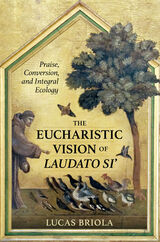 The Eucharistic Vision of Laudato Si: Praise, Conversion, and Integral Ecology
Lucas Briola
Catholic University of America Press, 2022 No other encyclical has generated as much conversation—both Catholic and non-Catholic—as Laudato si’. Often forgotten in these conversations is the theological heart and eucharistic vision of the encyclical and its integral ecology. Even the title of Laudato si’—“Praised be!”—signals the centrality of right praise in caring for our common home. Using Bernard Lonergan’s theology of history, this book unearths the doxological, eucharistic vision that shapes the encyclical’s integral presentation of social and ecological conversion. It offers the first book-length study that recovers the eucharistic nature of Laudato si’.
In drawing out the eucharistic vision of Laudato si’, the book accomplishes several feats for the reader. It roots the eucharistic dimensions of the encyclical in the writings of Popes John Paul II and Benedict XVI, showing how Pope Francis develops their thought in notable ways. It introduces Bernard Lonergan’s theology of history, showing how his framework can capture the eucharistic contours of caring for our common home; so too, in light of Laudato si’, does the book expand his theology of history to incorporate both ecological concern and the doxological, eucharistic essence of the church. The book assembles a liturgically shaped, systematic account of the church’s social mission. It joins poles otherwise sundered in a polarized church and world: between worship and justice, between concerns for human life and concerns for the natural world. Realizing the eucharistic vision of Laudato si’ promises much for our contemporary moment.
Pope Francis recently observed that the integral ecology of Laudato si’ holds the key for the world’s recovery from the COVID-19 pandemic. The U.S. Catholic Bishops recently launched a Eucharistic Revival that aims to rekindle eucharistic devotion and praxis. The Eucharistic Vision of Laudato Si’: Praise, Conversion, and Integral Ecology supplies a timely study that helps fulfill these intertwined calls.
Euclid and His Twentieth Century Rivals: Diagrams in the Logic of Euclidean Geometry
Nathaniel Miller
CSLI, 2007 Twentieth-century developments in logic and mathematics have led many people to view Euclid’s proofs as inherently informal, especially due to the use of diagrams in proofs. In Euclid and His Twentieth-Century Rivals, Nathaniel Miller discusses the history of diagrams in Euclidean Geometry, develops a formal system for working with them, and concludes that they can indeed be used rigorously. Miller also introduces a diagrammatic computer proof system, based on this formal system. This volume will be of interest to mathematicians, computer scientists, and anyone interested in the use of diagrams in geometry.
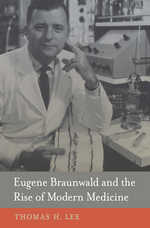 Eugene Braunwald and the Rise of Modern Medicine
Thomas H. Lee
Harvard University Press, 2013 Since the 1950s, the death rate from heart attacks has plunged from 35 percent to about 5 percent—and fatalistic attitudes toward this disease and many others have faded into history. Much of the improved survival and change in attitudes can be traced to the work of Eugene Braunwald, MD. In the 1960s, he proved that myocardial infarction was not a “bolt from the blue” but a dynamic process that plays out over hours and thus could be altered by treatment. By redirecting cardiology from passive, risk-averse observation to active intervention, he helped transform not just his own field but the culture of American medicine.
Braunwald’s personal story demonstrates how the forces of history affected the generation of researchers responsible for so many medical advances in the second half of the twentieth century. In 1938 Nazi occupiers forced his family to flee Vienna for Brooklyn. Because of Jewish quotas in medical schools, he was the last person admitted to his class, but went on to graduate number one. When the Doctor Draft threatened to interrupt his medical training during the Korean War, he joined the National Institutes of Health instead of the Navy, and there he began the research that made him the most influential cardiologist of his time.
In Eugene Braunwald and the Rise of Modern Medicine, Thomas H. Lee offers insights that only authoritative firsthand interviews can provide, to bring us closer to this iconic figure in modern medicine.
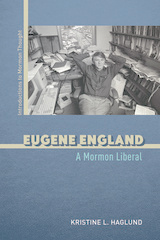 Eugene England: A Mormon Liberal
Kristine L. Haglund
University of Illinois Press, 2021 Eugene England championed an optimistic Mormon faith open to liberalizing ideas from American culture. At the same time, he remained devoted to a conservative Mormonism that he saw as a vehicle for progress even as it narrowed the range of acceptable belief. Kristine L. Haglund views England’s writing through the tensions produced by his often-opposed intellectual and spiritual commitments. Though labeled a liberal, England had a traditional Latter-day Saint background and always sought to address fundamental questions in Mormon terms. His intellectually adventurous essays sometimes put him at odds with Church authorities and fellow believers. But he also influenced a generation of thinkers and cofounded Dialogue, a Mormon academic and literary journal acclaimed for the broad range of its thought. A fascinating portrait of a Mormon intellectual and his times, Eugene England reveals a believing scholar who emerged from the lived experiences of his faith to engage with the changes roiling Mormonism in the twentieth century.
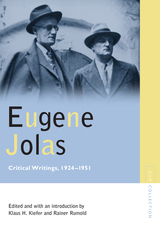 Eugene Jolas: Critical Writings, 1924-1951
Eugene Jolas
Northwestern University Press, 2009 Dividing his youth between the United States and the bilingual Alsace-Lorraine, Eugene Jolas (1894–1952) flourished in three languages. As an editor and poet, he came to know the major writers and artists of his time and enjoyed a pivotal position between the Anglo-American and Continental avant-garde. His editorship of transition, the leading avant-garde journal of Paris in the twenties and early thirties, provided a major impetus to writers from James Joyce (whose Finnegans Wake was serialized in transition) to Gertrude Stein, and Samuel Beckett, with first translations of André Breton, and Franz Kafka, among others. Jolas’s critical work, collected in this volume, includes introductions to anthologies, manifestoes like the famous Vertical, essays, some published here for the first time, on writers as various as Novalis, Trakl, the major Surrealists, Heidegger, and other philosophers. An acute observer of the literary scene as well as of the roiling politics of the time, Jolas emerges here in his role at the very center of avant-garde activity between the wars. Accordingly, this book is of signal importance to anyone with an interest in modernism, avant-garde, multilingualism, and the culture of Western Europe in the first half of the twentieth century.
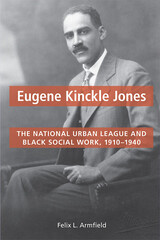 Eugene Kinckle Jones: The National Urban League and Black Social Work, 1910-1940
Felix L. Armfield
University of Illinois Press, 2014 A leading African American intellectual, Eugene Kinckle Jones (1885–1954) was instrumental in professionalizing black social work in America. Jones used his position was executive secretary of the National Urban League to work with social reformers advocating on behalf of African Americans and against racial discrimination. He also led the Urban League's efforts at campaigning for equal hiring practices and the inclusion of black workers in labor unions, and promoted the importance of vocational training and social work.
Drawing on interviews with Jones's colleagues and associates, as well as recently opened family and Urban League archives, Felix L. Armfield blends biography with an in-depth discussion of the roles of black institutions and organizations. The result is a work that offers new details on the growth of African American communities, the evolution of African American life, and the role of black social workers in the years before the civil rights era.
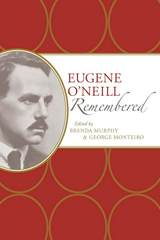 Eugene O'Neill Remembered
Edited by Brenda Murphy and George Monteiro
University of Alabama Press, 2017 Eugene O’Neill Remembered offers new views into the playwright’s life by capturing the direct memories of those who were close to him through interviews, memoirs, and other recollections. These sixty-two remembrances create an unprecedented image of O’Neill.
Known principally as the author of some of the most significant plays in the American dramatic canon and as one of America’s Nobel Laureates in literature, O'Neill rarely gave interviews and offered few details about himself. As a consequence, his life has long been shrouded in myth. He also abetted some of the misconceptions about his youth by, for example, advocating the story that he was expelled from Princeton for throwing a rock through Woodrow Wilson's window or by exaggerating the amount of time he had spent at sea. The legend of the hard-drinking, tormented playwright with a grim view of life was further reinforced when Long Day's Journey into Night was produced in 1956, three years after his death instead of the twenty-five years he had insisted on.
The portrayal of O’Neill as a tragic figure has been solidified in a number of biographies. The purpose of this collection, however, is to present O'Neill as others saw him and described him in their first-person accounts. In the course of these reminiscences, many of the vast and various narrators conflict with and contradict each other. Unlike other accounts of O’Neill’s life, much of the focus is on impressions instead of facts. The result is a revealing composite portrait of a key figure in twentieth-century American literary history.
This extensive collection offers insights unavailable in any other book and will hold massive appeal for scholars and students interested in American literature, Eugene O’Neill, and theater history, as well as anyone keen to uncover intimate details of the life of one of America’s greatest writers.
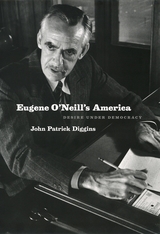 Eugene O'Neill's America: Desire Under Democracy
John Patrick Diggins
University of Chicago Press, 2007 In the face of seemingly relentless American optimism, Eugene O’Neill's plays reveal an America many would like to ignore, a place of seething resentments, aching desires, and family tragedy, where failure and disappointment are the norm and the American dream a chimera. Though derided by critics during his lifetime, his works resonated with audiences, won him the Nobel Prize and four Pulitzer, and continue to grip theatergoers today. Now noted historian John Patrick Diggins offers a masterly biography that both traces O’Neill’s tumultuous life and explains the forceful ideas that form the heart of his unflinching works.
Diggins paints a richly detailed portrait of the playwright’s life, from his Irish roots and his early years at sea to his relationships with his troubled mother and brother. Here we see O’Neill as a young Greenwich Village radical, a ravenous autodidact who attempted to understand the disjunction between the sunny public face of American life and the rage that he knew was simmering beneath. According to Diggins, O’Neill mined this disjunction like no other American writer. His characters burn with longing for an idealized future composed of equal parts material success and individual freedom, but repeatedly they fall back to earth, pulled by the tendrils of family and the insatiability of desire. Drawing on thinkers from Emerson to Nietzsche, O’Neill viewed this endlessly frustrated desire as the problematic core of American democracy, simultaneously driving and undermining American ideals of progress, success, and individual freedom.
Melding a penetrating assessment of O’Neill’s works and thought with a sensitive re-creation of his life, Eugene O’Neill’s America offers a striking new view of America’s greatest playwright—and a new picture of American democracy itself.
Eugene V. Debs: Citizen and Socialist
Nick Salvatore
University of Illinois Press, 2007 Eugene Debs (1855-1926) is regarded by many as American history's premier labor advocate. He was the leader of the Socialist party, five-time Socialist candidate for president, outspoken on the rights of all workers, and a persistent defender of America's democratic traditions. Nick Salvatore's acclaimed biography offers a major reevaluation of Debs, the movements he launched, and his belief in American Socialism as an extension of the nation's democratic traditions. He also shows the relationship between Debs's public image and his private life as child, sibling, husband, and lover. Salvatore's Debs--weaknesses intact--emerges as a complex man, frustrated and angered by the glaring inequities of a new economic order, and willing to risk his freedom to preserve the essence of democratic society.
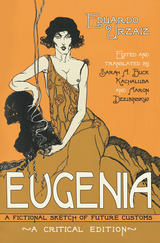 Eugenia: A Fictional Sketch of Future Customs
Eduardo Urzaiz, Edited and translated by Sarah A. Buck Kachaluba and Aaron Dziubinskyj
University of Wisconsin Press, 2016 A little-known gem of utopian/dystopian fiction published in 1919 tells
the story of a eugenically engineered society of the future.
It is the year 2218. In "Villautopia," the capital of a Central American nation, the
state selects young, biologically desirable citizens to act as breeders. Embryos
are implanted in males to increase a flagging population rate, and the offspring
are raised in state facilities until old enough to choose their own, nonnuclear
families. Sterilization of children with mental or physical abnormalities further
ensures the purity of the gene pool.
Written two years before Yevgeny Zamyatin's We and twelve years before
Aldous Huxley's Brave New World, Eugenia recounts the story of Ernesto, who at age twenty-three is selected as a breeder. Celiana, his thirty-eight-year-old lover
and an accomplished scholar, is deemed unfit for reproduction. To cope with
her feelings of guilt and hopelessness, she increasingly turns to marijuana, and
her scholarly productivity declines. Meanwhile Ernesto falls in love with a fellow
breeder, a young woman named Eugenia—but the life they ultimately choose is
not quite what the state had envisioned.
Taking up important challenges of modern society—population growth,
reproductive behavior and technologies, experimentation with gender roles,
and changes in family dynamics—Eugenia is published here in English for the
first time. Sarah A. Buck Kachaluba and Aaron Dziubinskyj provide a critical
apparatus helping readers to understand the novel's literary genesis and genealogy
as well as its historical context. Arising from its twentieth-century origins, yet
remarkably contemporary, Eugenia is a treasure of speculative fiction.
 The Eugenic Fortress: The Transylvanian Saxon Experiment in Interwar Romania
Tudor Georgescu
Central European University Press, 2016 The ever growing library on the history of eugenics and fascism focuses largely on nation states, while this monograph asks why an ethnic minority, the Transylvanian Saxons, turned to eugenics as a means of self-empowerment in interwar Romania. The Eugenic Fortress investigates and unpacks the eugenic movement that emerged in the early twentieth century, and focuses on its conceptual and methodological evolution during the interwar period. Further on, the book analyzes the gradual process of politicisation and radicalisation at the hands of a second generation of Saxon eugenicists in conjunction with the rise of an equally indigenous fascist movement. The Saxon case study offers valuable insights into why an ethnic minority would seek to re-entrench itself behind the race-hygienic walls of a 'eugenic fortress', as well as the influence host and home nations had upon its design. Georgescu's work is ground breaking in the sense that the history of this uprooted community is usually handled with sensitivity and serious (and critical) research into Transylvanian Saxon involvement with Nazism has been energetically resisted.
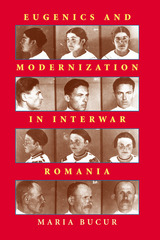 Eugenics and Modernization in Interwar Romania
Maria Bucur
University of Pittsburgh Press, 2001
Eugenics movements gained momentum throughout Eastern Europe between World Wars I and II. Maria Bucur demonstrates that the importance of the eugenics movement in Romania rests not so much in the contributions made to the study of science as in the realm of nationalist ideology and social policy making.
The notion that the quality and quantity of the human species could and should be controlled manifested itself through social engineering projects ranging from reshaping gender roles and isolating ethnic undesirables to introducing broad public health measures and educational reform. Romanian eugenicists sought to control such modernization processes as urbanization and industrialization without curbing them, yet they also embraced attitudes more typically identified with anti-modernists in Romanian politics and culture.
Bucur is the first historian to explore the role of eugenics as a response to the challenges of nation- and state-building in Eastern Europe. She presents a balanced assessment of the interwar eugenics movement’s success and failures and identifies connections and discontinuities between the movement and the post-war communist regime.
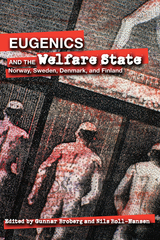 Eugenics and the Welfare State: Norway, Sweden, Denmark, and Finland
Gunnar Broberg
Michigan State University Press, 2005
In 1997 Eugenics and the Welfare State caused an uproar with international repercussions. This edition contains a new introduction by Broberg and Roll-Hansen, addressing events that occurred following the original publication. The four essays in this book stand as a chilling indictment of mass sterilization practices, not only in Scandinavia but in other European countries and the United States--eugenics practices that remained largely hidden from the public view until recently. Eugenics and the Welfare State also provides an in-depth, critical examination of the history, politics, science, and economics that led to mass sterilization programs in Norway, Sweden, Denmark, and Finland; programs put in place for the "betterment of society" and based largely on the "junk science" of eugenics that was popular before the rise of Nazism in Germany. When the results of Broberg's and Roll-Hansen's book were widely publicized in August 1997, the London Observer reported, "Yesterday Margot Wallstrom, the Swedish Minister for Social Policy, issued a belated reaction to the revelations. She said: 'What went on is barbaric and a national disgrace.' She pledged to create a law ensuring that involuntary sterilisation would never again be used in Sweden, and promised compensation to victims." Ultimately, the Swedish government not only apologized to the many thousands who had been sterilized without their knowledge or against their will, but also put in place a program for the payment of reparations to these unfortunate victims.
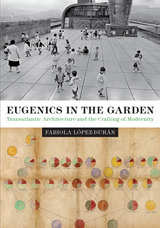 Eugenics in the Garden: Transatlantic Architecture and the Crafting of Modernity
By Fabiola López-Durán
University of Texas Press, 2018 Winner, Robert Motherwell Book Award, Outstanding Book on Modernism in the Arts, The Dedalus Foundation, 2019 As Latin American elites strove to modernize their cities at the turn of the twentieth century, they eagerly adopted the eugenic theory that improvements to the physical environment would lead to improvements in the human race. Based on Jean-Baptiste Lamarck’s theory of the “inheritance of acquired characteristics,” this strain of eugenics empowered a utopian project that made race, gender, class, and the built environment the critical instruments of modernity and progress. Through a transnational and interdisciplinary lens, Eugenics in the Garden reveals how eugenics, fueled by a fear of social degeneration in France, spread from the realms of medical science to architecture and urban planning, becoming a critical instrument in the crafting of modernity in the new Latin world. Journeying back and forth between France, Brazil, and Argentina, Fabiola López-Durán uncovers the complicity of physicians and architects on both sides of the Atlantic, who participated in a global strategy of social engineering, legitimized by the authority of science. In doing so, she reveals the ideological trajectory of one of the most celebrated architects of the twentieth century, Le Corbusier, who deployed architecture in what he saw as the perfecting and whitening of man. The first in-depth interrogation of eugenics’ influence on the construction of the modern built environment, Eugenics in the Garden convincingly demonstrates that race was the main tool in the geopolitics of space, and that racism was, and remains, an ideology of progress.
Eugenio Montale: Poet on the Edge
Rebecca J. West
Harvard University Press, 1981 Here is a comprehensive study of one of the giants among contemporary European poets. Rebecca West analyzes the dominant themes and underlying poetics of Eugenio Montale's verse, offering insight into individual poems and into his work as a whole. West finds that Montale's poetic voice frequently speaks in terms of marginality: geographic edge spaces, psychological margins, potentiality and emergence. Her reading of his work emphasizes both its organic unity and the stylistic and thematic innovations from collection to collection. Examining his generally understated language, she explores the implications of the shift, in verse published in the past decade, toward poetry of a more quotidian nature, a more conversational tone. Her clear commentary will guide everyone reading Montale, whether in Italian or in translation.
The EU-Japan Security Dialogue: Invisible but Comprehensive
Olena Mykal
Amsterdam University Press, 2011
This volume examines the security dialogue between Japan and the European Union since the establishment of the official European Community-Japan cooperation efforts in the late 1950s. Olena Mykal investigates how international events—particularly the terrorist attacks in New York on 9/11 and the EU’s proposal to lift its arms embargo on China—have strengthened the dialogue over the past decade.
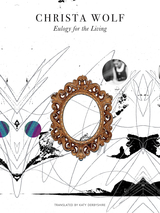 Eulogy for the Living: Taking Flight
Christa Wolf
Seagull Books, 2018 A fragmentary work that stands as a testament to Wolf's skill as a thinker, storyteller, and memorializer of humanity’s greatest struggles.
Christa Wolf tried for years to find a way to write about her childhood in Nazi Germany. In her 1976 book Patterns of Childhood, she explained why it was so difficult: “Gradually, over a period of months, the dilemma has emerged: to remain speechless or to live in the third person, these seem to be the options. One is impossible, the other sinister.” During 1971 and 1972 she made thirty-three attempts to start the novel, abandoning each manuscript only pages in. Eulogy for the Living, written over the course of four weeks, is the longest of those fragments. In its pages, Wolf recalls with crystalline precision the everyday details of her life as a middle-class grocer’s daughter, and the struggles within the family—struggles common to most families, but exacerbated by the rise of Nazism. And as Nazism fell, the Wolfs fled west, trying to stay ahead of the rampaging Red Army.
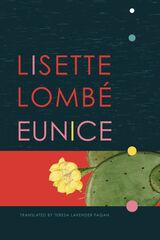 Eunice
Lisette Lombé
Seagull Books, 2026 A fierce, tender novel about grief, memory, and the powerful bond between mothers and daughters.
Nineteen-year-old Eunice’s life is suddenly interrupted when she learns that her mother, Jane, is dead, found drowned in a river after leaving a nightclub. The police rule it an accident, but Eunice isn’t so sure. A red notebook, discovered in a hair salon, suggests there’s more to her mother’s story—cryptic initials, clues, fragments of a life Eunice never fully knew. As she begins to unravel the mystery, she’s forced to confront long-buried family secrets and the painful gaps in her own understanding of who her mother was.
Eunice is a novel about the fierce bond of sisterhood, complex legacies passed down through generations, and the transformative power of forgiveness. It poignantly touches on the power of awakening to tenderness and the hard-won grace of letting go, written in rhythmic, lyrical prose that bears the mark of author Lisette Lombé’s background in slam poetry.
Euphoria and Exhaustion: Modern Sport in Soviet Culture and Society
Edited by Nikolaus Katzer, Sandra Budy, Alexandra Köhring, and Manfred Zeller
Campus Verlag, 2010 The architects of the Soviet Union intended not merely to remake their society—they also had an ambitious plan to remake the citizenry physically, with the goal of perfecting the socialist ideal of man. As Euphoria and Exhaustionshows, the Soviet leadership used sport as one of the primary arenas in which to deploy and test their efforts to mechanize and perfect the human body, drawing on knowledge from physiology, biology, medicine, and hygiene. At the same time, however, such efforts, like any form of social control, could easily lead to discontent—and thus, the editors show, a study of changes in public attitude towards sport can offer insight into overall levels of integration, dissatisfaction, and social exhaustion in the Soviet Union.
Euphrates Dance: A Novel
Hussein Hussein
Parkhurst Brothers, Inc., 2017 Hussein’s Euphrates Dance is a masterfully imagined and brilliantly written story of the universal struggle to seek light in the shadow of dominant horror and tragedy
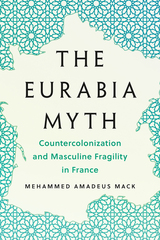 The Eurabia Myth: Countercolonization and Masculine Fragility in France
Mehammed Amadeus Mack
University of Minnesota Press, 2025 The roots—and reach—of “Great Replacement” theory in France and beyond
The Eurabia Myth delves into the origins and evolution of far-right anxieties about the future of a Europe that welcomes postcolonial migration, racial and ethnic diversity, and tolerance of Islam. Nationalists deploy the specter of “Eurabia”—an Arabized and Islamized Europe—as a doomsday scenario of demographic replacement that only they can avert. Mehammed Amadeus Mack traces this dark vision to a sociopolitical conspiracy theory that began in France, spread throughout Europe, and has become especially virulent in the United States: Great Replacement Theory. Examining how the Eurabia narrative gained traction, Mack analyzes dystopian fiction that envisions how this Replacement will take place, the contemporary politicization of medieval history, and ecofascist rhetoric depicting immigrants as an “invasive” species. He also interviews prominent French activists of color about how they subvert being portrayed as Replacers and destroyers of European civilization, and he explores the American echoes of the Great Replacement Theory. Innovatively deploying gender and sexuality theory to the concept of Eurabia, Mack demonstrates that the demographic and racial anxieties underlying Great Replacement Theory are intertwined with a more fundamental crisis of masculinity, evident in the far right’s accusations that feminists and the LGBT community are responsible for the decline in white birth rates. As it uncovers the deeper roots of this pervasive theory, The Eurabia Myth shows its insidious relevance to a rising tide of nativist fear, hatred, and violence. Retail e-book files for this title are screen-reader friendly with images accompanied by short alt text and/or extended descriptions.
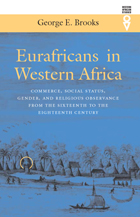 Eurafricans in Western Africa: Commerce, Social Status, Gender, and Religious Observance from the Sixteenth to the Eighteenth Century
George E. Brooks
Ohio University Press, 2003 Eurafricans in Western Africa traces the rich social and commercial history of western Africa. The most comprehensive study to date, it begins prior to the sixteenth century when huge profits made by middlemen on trade in North African slaves, salt, gold, pepper, and numerous other commodities prompted Portuguese reconnaissance voyages along the coast of western Africa. From Senegal to Sierra Leone, Portuguese, including “New Christians” who reverted to Judaism while living in western Africa, thrived where riverine and caravan networks linked many African groups. Portuguese and their Luso-African descendants contended with French, Dutch, and English rivals for trade in gold, ivory, slaves, cotton textiles, iron bars, cowhides, and other African products. As the Atlantic slave trade increased, French and Franco-Africans and English and Anglo-Africans supplanted Portuguese and Luso-Africans in many African places of trade. Eurafricans in Western Africa follows the changes that took root in the eighteenth century when French and British colonial officials introduced European legal codes, and concludes with the onset of the French Revolution and Napoleonic Wars, when suppression of the slave trade and expanding commerce in forest and agricultural commodities again transformed circumstances in western Africa. Professor George E. Brooks’s outstanding history of these vital aspects of western Africa is enriched by his discussion of the roles of the women who married or cohabited with European traders. Through accounts of incidents and personal histories, which are integrated into the narrative, the lives of these women and their children are accorded a prominent place in Professor Brooks’s fascinating discussion of this dynamic region of Africa.
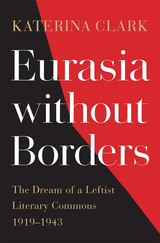 Eurasia without Borders: The Dream of a Leftist Literary Commons, 1919–1943
Katerina Clark
Harvard University Press, 2021 A long-awaited corrective to the controversial idea of world literature, from a major voice in the field.
Katerina Clark charts interwar efforts by Soviet, European, and Asian leftist writers to create a Eurasian commons: a single cultural space that would overcome national, cultural, and linguistic differences in the name of an anticapitalist, anti-imperialist, and later antifascist aesthetic. At the heart of this story stands the literary arm of the Communist International, or Comintern, anchored in Moscow but reaching Baku, Beijing, London, and parts in between. Its mission attracted diverse networks of writers who hailed from Turkey, Iran, India, and China, as well as the Soviet Union and Europe. Between 1919 and 1943, they sought to establish a new world literature to rival the capitalist republic of Western letters.
Eurasia without Borders revises standard accounts of global twentieth-century literary movements. The Eurocentric discourse of world literature focuses on transatlantic interactions, largely omitting the international left and its Asian members. Meanwhile, postcolonial studies have overlooked the socialist-aligned world in favor of the clash between Western European imperialism and subaltern resistance. Clark provides the missing pieces, illuminating a distinctive literature that sought to fuse European and vernacular Asian traditions in the name of a post-imperialist culture.
Socialist literary internationalism was not without serious problems, and at times it succumbed to an orientalist aesthetic that rivaled any coming from Europe. Its history is marked by both promise and tragedy. With clear-eyed honesty, Clark traces the limits, compromises, and achievements of an ambitious cultural collaboration whose resonances in later movements can no longer be ignored.
Eurasian Encounters: Museums, Missions, Modernities
Edited by Carolien Stolte and Yoshiyuki Kikuchi
Amsterdam University Press, 2017 The essays in this volume explore crucial intellectual and cultural exchanges between Asia and Europe in the first half of the twentieth century. Examining the increased mobility of people and information, scientific advances, global crises, and the unravelling of empires, Eurasian Encounters demonstrates that this time period saw an unprecedented increase in a transnational flow of politically and socially influential ideas. Together, the contributors show how the two ends of Eurasia interacted in artistic, academic, and religious spheres using new international and cosmopolitan approaches.
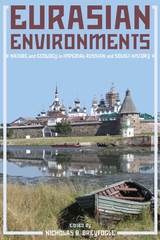 Eurasian Environments: Nature and Ecology in Imperial Russian and Soviet History
NIcholas B. Breyfogle
University of Pittsburgh Press, 2018 Through a series of essays, Eurasian Environments prompts us to rethink our understanding of tsarist and Soviet history by placing the human experience within the larger environmental context of flora, fauna, geology, and climate. This book is a broad look at the environmental history of Eurasia, specifically examining steppe environments, hydraulic engineering, soil and forestry, water pollution, fishing, and the interaction of the environment and disease vectors. Throughout, the authors place the history of Imperial Russia and the Soviet Union in a trans-chronological, comparative context, seamlessly linking the local and the global. The chapters are rooted in the ecological and geological specificities of place and community while unveiling the broad patterns of human-nature relationships across the planet. Eurasian Environments brings together an international group scholars working on issues of tsarist/Soviet environmental history in an effort to showcase the wave of fascinating and field-changing research currently being written.
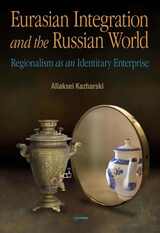 Eurasian Integration and the Russian World: Regionalism as an Identitiary Enterprise
Aliaksei Kazharski
Central European University Press, 2019 This volume examines Russian discourses of regionalism as a source of identity construction practices for the country's political and intellectual establishment. The overall purpose of the monograph is to demonstrate that, contrary to some assumptions, the transition trajectory of post-Soviet Russia has not been towards a liberal democratic nation state that is set to emulate Western political and normative standards. Instead, its foreign policy discourses have been constructing Russia as a supranational community which transcends Russia's current legally established borders. The study undertakes a systematic and comprehensive survey of Russian official (authorities) and semi-official (establishment affiliated think tanks) discourse for a period of seven years between 2007 and 2013. This exercise demonstrates how Russia is being constructed as a supranational entity through its discourses of cultural and economic regionalism. These discourses associate closely with the political project of Eurasian economic integration and the "Russian world" and "Russian civilization" doctrines. Both ideologies, the geoeconomic and culturalist, have gained prominence in the post-Crimean environment. The analysis tracks down how these identitary concepts crystallized in Russia's foreign policies discourses beginning from Vladimir Putin's second term in power.
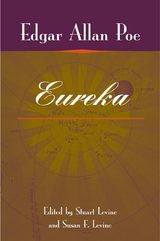 Eureka
Edgar Allan Poe
University of Illinois Press, 2004 Originally published in 1848, Eureka is Poe's book on how the universe was formed, how it functions, and what its future might be. Poe provides a physical, scientific explanation for the interconnectedness of all things--an idea at the heart of much of nineteenth-century romanticism and American Transcendentalism in particular.
This user-friendly edition puts Eureka in context, explaining Poe's excellent grasp of then-new developments in astronomy, his often-prescient projections from what was known to what might come next (Poe is especially good on space-time), and the close connections between Eureka and the thought and attitudes of his era.
Through extensive annotations this edition of Eureka demonstrates intimate connections with Poe's poetry, fiction, and criticism, with his career and aspirations, his humor and satire, and his love of grand literary effects.
It also presents a carefully edited text, including Poe's own emendations from several copies which he marked for the revised reprinting that he hoped would follow, and related documents
Eureka!: European Research Universities and the Challenges of the 21st Century
Edited by Bart Funnekotter
Amsterdam University Press, 2005 European universities currently face a dire financial crunch: governments throughout Europe are slashing their budgets for higher education, and fund-raising organizations are far less developed in European universities than in their American counterparts. €ureka! examines how European universities are rapidly adjusting to the situation, drawing on interviews with professionals and students from institutions in the League of European Research Universities. The contributors discuss ways in which European universities can raise funds and whether they will continue scholarly research or transform into research laboratories. €ureka! is a fascinating look at the state of higher education in a global context.
 Euripides and the Full Circle of Myth
Cedric H. Whitman
Harvard University Press, 1974 In this book Cedric Whitman turns from the heroic poets of Greece to the world of Euripides, less than heroic but still archetypal in its adherence to myth. In a four-part essay he analyzes the three “romances,” Iphigenia in Tauris, Helen, and Ion, placing them in the poet’s work as a whole.
The keynote is myth, not as a collection of outmoded stories to be rejected or rationalized by the “philosopher of the stage,” but as a fulfilling pattern of personal redemption, never completed in the other extant plays. In this reading, the controversial gods of Euripides are seen as characters in a greater scheme, the myth, rather than as parodies of religion or objects of atheistical satire. The theme of purity, or spiritual wholeness, wrought into the poetic texture, appears as a recurrent symbol of what redemption means to the struggling protagonists. This is an elegant piece of criticism, both in its conception and in its style.
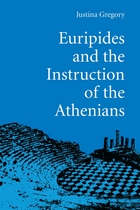 Euripides and the Instruction of the Athenians
Justina Gregory
University of Michigan Press, 1997 Political by its very nature, Greek tragedy reflects on how life should be lived in the polis, and especially the polis that was democratic Athens. Instructional as well, drama frequently concerns itself with the audience's moral education. Euripides and the Instruction of the Athenians draws on these political and didactic functions of tragedy for a close analysis of five plays: Alcestis, Hippolytus, Hecuba, Heracles, and Trojan Women. Clearly written and persuasively argued, this volume addresses itself to all who are interested in Greek tragedy. Nonspecialists and scholars alike will deepen their understanding of this complex writer and the tumultuous period in which he lived.
". . . a lucid presentation of the positive side of Euripidean tragedy, and a thoughtful reminder of the political implications of Greek tragedy." --American Journal of Philology
". . . the principal defect of [this] otherwise excellent study is that it is too short." --Erich Segal, Classical Review
". . . a most stimulating book throughout . . . ." --Greece and Rome
Justina Gregory is Professor of Classics, Smith College, where she is head of the department. She has been the recipient of Fulbright and Woodrow Wilson fellowships.
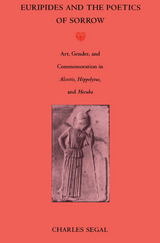 Euripides and the Poetics of Sorrow: Art, Gender, and Commemoration in Alcestis, Hippolytus, and Hecuba
Charles Segal
Duke University Press, 1993 Where is the pleasure in tragedy? This question, how suffering and sorrow become the stuff of aesthetic delight, is at the center of Charles Segal's new book, which collects and expands his recent explorations of Euripides' art.
Alcestis, Hippolytus, and Hecuba, the three early plays interpreted here, are linked by common themes of violence, death, lamentation and mourning, and by their implicit definitions of male and female roles. Segal shows how these plays draw on ancient traditions of poetic and ritual commemoration, particularly epic song, and at the same time refashion these traditions into new forms. In place of the epic muse of martial glory, Euripides, Segal argues, evokes a muse of sorrows who transforms the suffering of individuals into a "common grief for all the citizens," a community of shared feeling in the theater.
Like his predecessors in tragedy, Euripides believes death, more than any other event, exposes the deepest truth of human nature. Segal examines the revealing final moments in Alcestis, Hippolytus, and Hecuba, and discusses the playwright's use of these deaths--especially those of women--to question traditional values and the familiar definitions of male heroism. Focusing on gender, the affective dimension of tragedy, and ritual mourning and commemoration, Segal develops and extends his earlier work on Greek drama. The result deepens our understanding of Euripides' art and of tragedy itself.
Euripides and the Tragic Tradition
Ann Norris Michelini
University of Wisconsin Press, 2006 “The most extensive scholarship to appear on this Greek dramatist in many years, Michelini’s work will be important to specialists and students of classical literature, literary theory, and both English and comparative literature.”—Modern Greek Studies
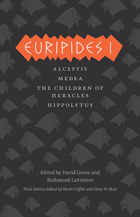 Euripides I: Alcestis, Medea, The Children of Heracles, Hippolytus
Edited and Translated by Mark Griffith, Glenn W. Most, David Grene, and Richmond Lattimore
University of Chicago Press, 2013 Euripides I contains the plays “Alcestis,” translated by Richmond Lattimore; “Medea,” translated by Oliver Taplin; “The Children of Heracles,” translated by Mark Griffith; and “Hippolytus,” translated by David Grene. Many years ago, the University of Chicago Press undertook a momentous project: a new translation of the Greek tragedies that would be the ultimate resource for teachers, students, and readers. They succeeded. Under the expert management of eminent classicists David Grene and Richmond Lattimore, those translations combined accuracy, poetic immediacy, and clarity of presentation to render the surviving masterpieces of Aeschylus, Sophocles, and Euripides in an English so lively and compelling that they remain the standard translations. The updated third editions of these classic works were designed to ensure that our Greek tragedies remain the leading English-language versions throughout the twenty-first century. In this highly anticipated third edition, Mark Griffith and Glenn W. Most have carefully updated the translations to bring them even closer to the ancient Greek while retaining the vibrancy for which our English versions are famous. This edition also includes brand-new translations of Euripides’ Medea, The Children of Heracles, Andromache, and Iphigenia among the Taurians, fragments of lost plays by Aeschylus, and the surviving portion of Sophocles’s satyr-drama The Trackers. New introductions for each play offer essential information about its first production, plot, and reception in antiquity and beyond. In addition, each volume includes an introduction to the life and work of its tragedian, as well as notes addressing textual uncertainties and a glossary of names and places mentioned in the plays. In addition to the new content, the volumes have been reorganized both within and between volumes to reflect the most up-to-date scholarship on the order in which the plays were originally written. The result is a set of handsome paperbacks destined to introduce new generations of readers to these foundational works of Western drama, art, and life.
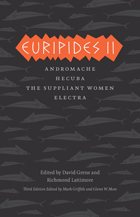 Euripides II: Andromache, Hecuba, The Suppliant Women, Electra
Edited and Translated by Mark Griffith, Glenn W. Most, David Grene, and Richmond Lattimore
University of Chicago Press, 2013 Euripides II contains the plays “Andromache,” translated by Deborah Roberts; “Hecuba,” translated by William Arrowsmith; “The Suppliant Women,” translated by Frank William Jones; and “Electra,” translated by Emily Townsend Vermeule. Many years ago, the University of Chicago Press undertook a momentous project: a new translation of the Greek tragedies that would be the ultimate resource for teachers, students, and readers. They succeeded. Under the expert management of eminent classicists David Grene and Richmond Lattimore, those translations combined accuracy, poetic immediacy, and clarity of presentation to render the surviving masterpieces of Aeschylus, Sophocles, and Euripides in an English so lively and compelling that they remain the standard translations. The updated third editions of these classic works were designed to ensure that our Greek tragedies remain the leading English-language versions throughout the twenty-first century. In this highly anticipated third edition, Mark Griffith and Glenn W. Most have carefully updated the translations to bring them even closer to the ancient Greek while retaining the vibrancy for which our English versions are famous. This edition also includes brand-new translations of Euripides’ Medea, The Children of Heracles, Andromache, and Iphigenia among the Taurians, fragments of lost plays by Aeschylus, and the surviving portion of Sophocles’s satyr-drama The Trackers. New introductions for each play offer essential information about its first production, plot, and reception in antiquity and beyond. In addition, each volume includes an introduction to the life and work of its tragedian, as well as notes addressing textual uncertainties and a glossary of names and places mentioned in the plays. In addition to the new content, the volumes have been reorganized both within and between volumes to reflect the most up-to-date scholarship on the order in which the plays were originally written. The result is a set of handsome paperbacks destined to introduce new generations of readers to these foundational works of Western drama, art, and life.
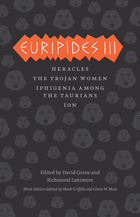 Euripides III: Heracles, The Trojan Women, Iphigenia among the Taurians, Ion
Edited and Translated by Mark Griffith, Glenn W. Most, David Grene, and Richmond Lattimore
University of Chicago Press, 2013 Euripides III contains the plays “Heracles,” translated by William Arrowsmith; “The Trojan Women,” translated by Richmond Lattimore; “Iphigenia among the Taurians,” translated by Anne Carson; and “Ion,” translated by Ronald Frederick Willetts. Many years ago, the University of Chicago Press undertook a momentous project: a new translation of the Greek tragedies that would be the ultimate resource for teachers, students, and readers. They succeeded. Under the expert management of eminent classicists David Grene and Richmond Lattimore, those translations combined accuracy, poetic immediacy, and clarity of presentation to render the surviving masterpieces of Aeschylus, Sophocles, and Euripides in an English so lively and compelling that they remain the standard translations. The updated third editions of these classic works were designed to ensure that our Greek tragedies remain the leading English-language versions throughout the twenty-first century. In this highly anticipated third edition, Mark Griffith and Glenn W. Most have carefully updated the translations to bring them even closer to the ancient Greek while retaining the vibrancy for which our English versions are famous. This edition also includes brand-new translations of Euripides’ Medea, The Children of Heracles, Andromache, and Iphigenia among the Taurians, fragments of lost plays by Aeschylus, and the surviving portion of Sophocles’s satyr-drama The Trackers. New introductions for each play offer essential information about its first production, plot, and reception in antiquity and beyond. In addition, each volume includes an introduction to the life and work of its tragedian, as well as notes addressing textual uncertainties and a glossary of names and places mentioned in the plays. In addition to the new content, the volumes have been reorganized both within and between volumes to reflect the most up-to-date scholarship on the order in which the plays were originally written. The result is a set of handsome paperbacks destined to introduce new generations of readers to these foundational works of Western drama, art, and life.
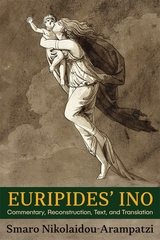 Euripides’ Ino: Commentary, Reconstruction, Text, and Translation
Smaro Nikolaidou-Arampatzi
Harvard University Press, 2022 In this groundbreaking study, Smaro Nikolaidou-Arampatzi analyzes the direct and indirect evidence of Euripides’ fragmentary play, the Ino, and reexamines matters of reconstruction and interpretation. This work is a full-scale commentary on Euripides’ Ino, with a new arrangement of the fragments, an English translation in prose, and an extensive bibliography. Nikolaidou-Arampatzi argues that the axial point in the play is Ino’s filicide. Hyginus’ Fabula 4, entitled Ino Euripidis, recounts how, after her forced return from Cithaeron, Euripides’ Ino—in a state of Dionysiac madness—participates in the plotting of the jealous Themisto against her own children without being able to recognize them. Ino was the sister of Dionysus’ mother Semele, and she was also the primordial nurse of the god, a role that infuriated Hera. In his Medea, Euripides refers to Ino as a filicidal woman who, driven mad by Hera, murdered her own children. Nikolaidou-Arampatzi contends, then, that the filicide of Euripides’ Ino in a state of mania can be considered as a dramatic prototype by which his filicide Medea would be judged.
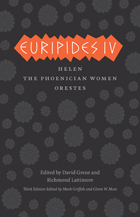 Euripides IV: Helen, The Phoenician Women, Orestes
Edited and Translated by Mark Griffith, Glenn W. Most, David Grene, and Richmond Lattimore
University of Chicago Press, 2013 Euripides IV contains the plays “Helen,” translated by Richmond Lattimore; “The Phoenician Women,” translated by Elizabeth Wyckoff; and “Orestes,” translated by William Arrowsmith. Many years ago, the University of Chicago Press undertook a momentous project: a new translation of the Greek tragedies that would be the ultimate resource for teachers, students, and readers. They succeeded. Under the expert management of eminent classicists David Grene and Richmond Lattimore, those translations combined accuracy, poetic immediacy, and clarity of presentation to render the surviving masterpieces of Aeschylus, Sophocles, and Euripides in an English so lively and compelling that they remain the standard translations. The updated third editions of these classic works were designed to ensure that our Greek tragedies remain the leading English-language versions throughout the twenty-first century. In this highly anticipated third edition, Mark Griffith and Glenn W. Most have carefully updated the translations to bring them even closer to the ancient Greek while retaining the vibrancy for which our English versions are famous. This edition also includes brand-new translations of Euripides’ Medea, The Children of Heracles, Andromache, and Iphigenia among the Taurians, fragments of lost plays by Aeschylus, and the surviving portion of Sophocles’s satyr-drama The Trackers. New introductions for each play offer essential information about its first production, plot, and reception in antiquity and beyond. In addition, each volume includes an introduction to the life and work of its tragedian, as well as notes addressing textual uncertainties and a glossary of names and places mentioned in the plays. In addition to the new content, the volumes have been reorganized both within and between volumes to reflect the most up-to-date scholarship on the order in which the plays were originally written. The result is a set of handsome paperbacks destined to introduce new generations of readers to these foundational works of Western drama, art, and life.
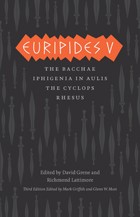 Euripides V: Bacchae, Iphigenia in Aulis, The Cyclops, Rhesus
Edited and Translated by Mark Griffith, Glenn W. Most, David Grene, and Richmond Lattimore
University of Chicago Press, 2013 Euripides V includes the plays “The Bacchae,” translated by William Arrowsmith; “Iphigenia in Aulis,” translated by Charles R. Walker; “The Cyclops,” translated by William Arrowsmith; and “Rhesus,” translated by Richmond Lattimore. Many years ago, the University of Chicago Press undertook a momentous project: a new translation of the Greek tragedies that would be the ultimate resource for teachers, students, and readers. They succeeded. Under the expert management of eminent classicists David Grene and Richmond Lattimore, those translations combined accuracy, poetic immediacy, and clarity of presentation to render the surviving masterpieces of Aeschylus, Sophocles, and Euripides in an English so lively and compelling that they remain the standard translations. The updated third editions of these classic works were designed to ensure that our Greek tragedies remain the leading English-language versions throughout the twenty-first century. In this highly anticipated third edition, Mark Griffith and Glenn W. Most have carefully updated the translations to bring them even closer to the ancient Greek while retaining the vibrancy for which our English versions are famous. This edition also includes brand-new translations of Euripides’ Medea, The Children of Heracles, Andromache, and Iphigenia among the Taurians, fragments of lost plays by Aeschylus, and the surviving portion of Sophocles’s satyr-drama The Trackers. New introductions for each play offer essential information about its first production, plot, and reception in antiquity and beyond. In addition, each volume includes an introduction to the life and work of its tragedian, as well as notes addressing textual uncertainties and a glossary of names and places mentioned in the plays. In addition to the new content, the volumes have been reorganized both within and between volumes to reflect the most up-to-date scholarship on the order in which the plays were originally written. The result is a set of handsome paperbacks destined to introduce new generations of readers to these foundational works of Western drama, art, and life.
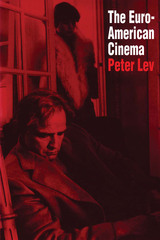 The Euro-American Cinema
By Peter Lev
University of Texas Press, 1993 With McDonalds in Moscow and Disneyland in Paris and Tokyo, American popular culture is spreading around the globe. Regional, national, and ethnic cultures are being powerfully affected by competition from American values and American popular forms. This literate and lively study explores the spread of American culture into international cinema as reflected by the collision and partial merger of two important styles of filmmaking: the Hollywood style of stars, genres, and action, and the European art film style of ambiguity, authorial commentary, and borrowings from other arts. Peter Lev departs from the traditional approach of national cinema histories and discusses some of the blends, overlaps, and hegemonies that are typical of the world film industry of recent years. In Part One, he gives a historical and theoretical overview of what he terms the "Euro-American art film," which is characterized by prominent use of the English language, a European art film director, cast and crew from at least two countries, and a stylistic mixing of European art film and American entertainment. The second part of Lev’s study examines in detail five examples of the Euro-American art film: Contempt (1963), Blow-Up (1966), The Canterbury Tales (1972), Paris, Texas (1983), and The Last Emperor (1987). These case studies reveal that the European art film has had a strong influence on world cinema and that many Euro-American films are truly cultural blends rather than abject takeovers by Hollywood cinema.
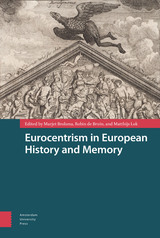 Eurocentrism in European History and Memory
Marjet Brolsma
Amsterdam University Press, 2020 Eurocentrism means seeing the world in Europe’s terms and through European eyes. This may not be unreasonable for Europeans, but there are unforeseen consequences. Eurocentric history implies that a scientific modernity has diffused out from Europe to benefit the rest of the world, through colonies and development aid. It involves the imposition of European norms on places and times where they are often quite inappropriate. In Eurocentrism in European History and Memory, well-known scholars explore and critically analyse manifestations of Eurocentrism in representations of the European past from different disciplines — history, literature, art, memory and cultural policy — as well as from different geographical perspectives. The book investigates the role imaginings of the European past since the eighteenth century played in the construction of a Europeanist worldview and the ways in which ‘Europe’ was constructed in literature and art.
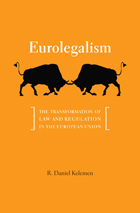 Eurolegalism: The Transformation of Law and Regulation in the European Union
R. Daniel Kelemen
Harvard University Press, 2011 Despite western Europe's traditional disdain for the United States' "adversarial legalism," the European Union is shifting toward a very similar approach to the law, according to Daniel Kelemen. Coining the term "eurolegalism" to describe the hybrid that is now developing in Europe, he shows how the political and organizational realities of the EU make this shift inevitable.
The model of regulatory law that had long predominated in western Europe was more informal and cooperative than its American counterpart. It relied less on lawyers, courts, and private enforcement, and more on opaque networks of bureaucrats and other interests that developed and implemented regulatory policies in concert. European regulators chose flexible, informal means of achieving their objectives, and counted on the courts to challenge their decisions only rarely. Regulation through litigation-central to the U.S. model-was largely absent in Europe.
But that changed with the advent of the European Union. Kelemen argues that the EU's fragmented institutional structure and the priority it has put on market integration have generated political incentives and functional pressures that have moved EU policymakers to enact detailed, transparent, judicially enforceable rules-often framed as "rights"-and back them with public enforcement litigation as well as enhanced opportunities for private litigation by individuals, interest groups, and firms.
Europa
Edited by Robert T. Pappalardo, William B. McKinnon, and Krishan Khurana
University of Arizona Press, 2009 Few worlds are as tantalizing and enigmatic as Europa, whose complex icy surface intimates the presence of an ocean below. Europa beckons for our understanding and future exploration, enticing us with the possibilities of a water-rich environment and the potential for life beyond Earth. This volume in the Space Science Series, with more than 80 contributing authors, reveals the discovery and current understanding of Europa’s icy shell, subsurface ocean, presumably active interior, and myriad inherent interactions within the Jupiter environment. Europa is the foundation upon which the coming decades of scientific advancement and exploration of this world will be built, making it indispensable for researchers, students, and all who hold a passion for exploration.
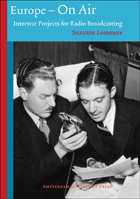 Europe - On Air: Interwar Projects for Radio Broadcasting
Suzanne Lommers
Amsterdam University Press, 2012 During the interwar years, broadcast radio became a popular way for Europeans to consume local, national, and international news. The medium not only began to shape European policy and politics, but also laid the foundation for European unification and global interconnectedness. In Europe On Air, Suzanne Lommers has documented the rich and often underexposed history of broadcast radio through the lens of international European relations. She specifically explores the roles of Radio Moscow, Radio Luxembourg, Vatican Radio, and the International Broadcasting Union as institutions that played an important role in national identities and establishing standards for broadcasting. The radio also offered new opportunities to politicians, who seized upon a vibrant and more direct way to communicate with their constituents.
Essential reading for scholars of technology and European history, Europe–On Air reveals broadcast radio to be a technology that revolutionized international relations during the brief respite between the chaos of war in Europe.
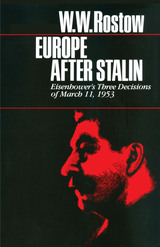 Europe after Stalin: Eisenhower's Three Decisions of March 11, 1953
By W.W. Rostow
University of Texas Press, 1982 Stalin's death on March 6, 1953, reopened the debate within the Eisenhower administration over whether or not the United States should propose and actively promote the reunification of Germany at a summit conference. Written by an insider, this is the only published firsthand account of this foreign policy decision—a decision that illuminated the dilemmas of the Cold War at an important moment.
W. W. Rostow examines the origins of Eisenhower's "peace speech" of April 16, 1953, and of the National Security Council's debate on the German question between John Foster Dulles and presidential adviser C. D. Jackson. Jackson proposed immediate high-level diplomatic contact with the Soviet Union and the countries of Western Europe to discuss German reunification, as well as proposals for the general control of armaments and special security arrangements for Europe. Dulles, however, argued for a more reserved posture, which ruled out summitry and immediate negotiation with the Soviets. Dulles prevailed, but Eisenhower made his famous "peace speech."
In his concluding chapter, Rostow explores the question of whether or not anything was lost by this outcome. Was an opportunity for a united Germany forfeited when Eisenhower rejected Churchill's suggestion for a prompt summit meeting and backed Dulles against Jackson in the National Security Council meeting of March 11?
This is the third in a series of volumes by the author that probe the relationship between ideas and action in the making of major policy decisions. In this series, Rostow examines historic decision making from an insider's point of view while exploiting fully the rich documentary evidence.
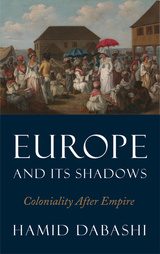 Europe and Its Shadows: Coloniality after Empire
Hamid Dabashi
Pluto Press, 2019 Europe has long imagined itself as the centre of the universe, although its precise geographical, cultural and social terrains have always been amorphous. Exploring the fear and fascination associated with the continent as an allegory, Hamid Dabashi considers Europe to be a historically formed barricade against the world.
Frantz Fanon’s assessment that 'Europe is literally the creation of the Third World' is still true today; but in more than one sense for the colonial has always been embedded in the capital, and the capital within the colonial. As the condition of coloniality shifts, so have the dividing lines between coloniser and colonised, and this shift calls for a reappraisal of our understanding of nationalism, xenophobia and sectarianism as the dangerous indices of the emerging worlds.
As the far-right populists captivate minds across Europe and Brexit upsets the balance of power in the European Union, this book, from a major scholar of postcolonial thought, is a timely and transformative intervention.
Europe and Love in Cinema
Edited by Luisa Passerini, Jo Labanyi, and Karen Diehl
Intellect Books, 2012 Europe and Love in Cinema explores the relationship between love and Europeanness in a wide range of films from the 1920s to the present. A critical look at the manner in which love—in its broadest sense—is portrayed in cinema from across Europe and the United States, this volume exposes constructed notions of "Europeanness" that both set Europe apart and define some parts of it as more "European" than others. Through the international distribution process, these films in turn engage with ideas of Europe from both outside and within, while some, treated extensively in this volume, even offer alternative models of love. A bracing collection of essays from top film scholars, Europe and Love in Cinema demonstrates the centrality of desire to film narrative and explores multiple models of love within Europe's frontiers.
Europe and the End of Medieval Japan
Mark Hudson
Arc Humanities Press, 2024 Japan’s transition from medieval to early modern occurred at the time of an emerging global Europe. In the 1540s European traders and missionaries began a century of dynamic cultural and economic interaction with the Japanese Islands. In the midst of civil war, over 300,000 Japanese converted to Christianity and Japan became an influential location in the Counter-Reformation’s reinvention of Christianity as the first global religion. At the beginning of the seventeenth century, however, unification of Japan by the Tokugawa shoguns led to persecutions and strict limits on European presence in the country. Examining a range of topics, including the relationship between Christianity and folk religion, the introduction of firearms, new crops and cuisines, and treponemal disease, this book re-evaluates Japan’s transformation from medieval to early modern in a global context.
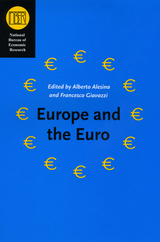 Europe and the Euro
Edited by Alberto Alesina and Francesco Giavazzi
University of Chicago Press, 2010 It is rare for countries to give up their currencies and thus their ability to influence such critical aspects of their economies as interest and exchange rates. Yet ten years ago a number of European countries did exactly that when they adopted the euro. Despite some dissent, there were a number of arguments in favor of this policy change: it would facilitate exchange of goods, money, and people by decreasing costs; it would increase trade; and it would enhance efficiency and competitiveness at the international level.
A decade is an ideal time frame over which to evaluate the success of the euro and whether it has lived up to expectations. To that aim, Europe and the Euro looks at a number of important issues, including the effects of the euro on reform of goods and labor markets; its influence on business cycles and trade among members; and whether the single currency has induced convergence or divergence in the economic performance of member countries. While adoption of the euro may not have met the expectations of its most optimistic proponents, the benefits have been many, and there is reason to believe that the euro is robust enough to survive recent economic shocks. This volume is an essential reference on the first ten years of the euro and the workings of a monetary union.
Europe, Byzantium, and the "Intellectual Silence" of Rus' Culture
Donald Ostrowski
Arc Humanities Press, 2018 This book sets out to answer the question of why Eastern Church writers showed no interest in analytical reasoning - the so-called "intellectual silence" of Rus' culture - while Western Church writers, by the time of the Scholastics, routinely incorporated analytical reasoning into their defences of the faith.Donald Ostrowski suggests that Western, post-Enlightenment- trained, analytical scholars often miss the point, not because of an inability to comprehend cultural ideas which seem abstract and ineffable, but because the agenda is different.
Europe (c.1400-1458)
Aeneas Silvius Piccolomini
Catholic University of America Press, 2013 This popular text circulated widely in manuscript form and was printed in several editions between the late 15th and the early 18th centuries, in Latin, German, and Italian. The present volume represents the first time this work has been translated into English, bringing its colorful narrative to the attention of a wider audience. This edition also provides extensive footnotes, an appendix of rulers, and a lengthy introduction to Aeneas?s life and the context and relevance of this work.
Europe Faces Europe: Narratives from Its Eastern Half
Edited by Johan Fornäs
Intellect Books, 2017 Europe Faces Europe examines Eastern European perspectives on European identity. The contributors to this volume map narratives of Europe rooted in Eastern Europe, examining their relationship to philosophy, journalism, social movements, literary texts, visual art, and popular music. Moving the debate and research on European identity beyond the geographical power center, the essays explore how Europeanness is conceived of in the dynamic region of Eastern Europe. Offering a fresh take on European identity, Europe Faces Europe comes at an important time, when Eastern Europe and European identity are in an important and vibrant phase of transition.
Europe in Black and White: Immigration, Race, and Identity in the ‘Old Continent'
Edited by Manuela Ribeiro Sanches, Fernando Clara, João Ferreira Duarte, and Leonor Pires Martins
Intellect Books, 2011 The essays in Europe in Black and White offer new critical perspectives on race, immigration, and identity on the Old Continent. In reconsidering the various forms of encounters with difference, such as multiculturalism and hybridity, the contributors address a number of issues, including the cartography of postcolonial Europe, its relation to the production of "difference" and "race," and national and identity politics and their dependence on linguistic practices inherited from imperial times. Featuring scholars from a wide variety of nationalities and disciplinary areas, this collection will speak to an equally wide readership.
Europe in the Eighteenth Century: Aristocracy and the Bourgeois Challenge
George Rude
Harvard University Press, 1985 Europe in the Eighteenth Century is a social history of Europe in all its aspects: economic, political, diplomatic military, colonial-expansionist. Crisply and succinctly written, it describes Europe not through a history of individual countries, but in a common context during the three quarters of a century between the death of Louis XIV and the industrial revolution in England and the social and political revolution in France. It presents the development of government, institutions, cities, economies, wars, and the circulation of ideas in terms of social pressures and needs, and stresses growth, interrelationships, and conflict of social classes as agents of historical change, paying particular attention to the role of popular, as well as upper- and middle-class, protest as a factor in that change.
“Europe” in the Middle Ages
Klaus Oschema
Arc Humanities Press, 2023 From the nineteenth century onwards, historians described the Middle Ages as the "cradle" of the nation state—then, after World War II, they increasingly identified the period as the "cradle" of Europe. A close look at the sources demonstrates that both interpretations are misleading: while "Europe" was not a rare word, its use simply does not follow modern expectations. This volume contrasts modern historians' constructions of "Europe in the Middle Ages" with a fresh analysis of the medieval sources and discourses. The results force us to recognize that medieval ideas of ordering the world differ from modern expectations, thereby inviting us to reflect upon the use and limits of history in contemporary political discourse.
Europe in the Sixteenth Century
H. G. Koenigsberger, George L. Mosse, and G. Q. Bowler
University of Wisconsin Press, 2026 The revised and updated edition of a seminal text, Europe in the Sixteenth Century weaves the distinct histories of the diverse European states into a vivid and complex tapestry. Focusing on similarities of experience across borders, including the centralization of town life and development of market economics, the authors reexamine familiar subjects of the era—from religious upheaval to imperial conflict to artistic revolutions—creating a dynamic, unified narrative of change. This third edition features a new introduction by Magda Teter, tracing the influence of H. G. Koenigsberger, George L. Mosse, and G. Q. Bowler’s work on the historiography of Europe well into the twenty-first century.
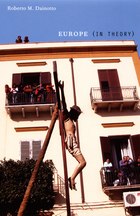 Europe (in Theory)
Roberto M. Dainotto
Duke University Press, 2007 Europe (in Theory) is an innovative analysis of eighteenth- and nineteenth-century ideas about Europe that continue to inform thinking about culture, politics, and identity today. Drawing on insights from subaltern and postcolonial studies, Roberto M. Dainotto deconstructs imperialism not from the so-called periphery but from within Europe itself. He proposes a genealogy of Eurocentrism that accounts for the way modern theories of Europe have marginalized the continent’s own southern region, portraying countries including Greece, Italy, Spain, and Portugal as irrational, corrupt, and clan-based in comparison to the rational, civic-minded nations of northern Europe. Dainotto argues that beginning with Montesquieu’s The Spirit of Laws (1748), Europe not only defined itself against an “Oriental” other but also against elements within its own borders: its South. He locates the roots of Eurocentrism in this disavowal; internalizing the other made it possible to understand and explain Europe without reference to anything beyond its boundaries. Dainotto synthesizes a vast array of literary, philosophical, and historical works by authors from different parts of Europe. He scrutinizes theories that came to dominate thinking about the continent, including Montesquieu’s invention of Europe’s north-south divide, Hegel’s “two Europes,” and Madame de Staël’s idea of opposing European literatures: a modern one from the North, and a pre-modern one from the South. At the same time, Dainotto brings to light counter-narratives written from Europe’s margins, such as the Spanish Jesuit Juan Andrés’s suggestion that the origins of modern European culture were eastern rather than northern and the Italian Orientalist Michele Amari’s assertion that the South was the cradle of a social democracy brought to Europe via Islam.
Europe: or Up and Down with Schreiber and Baggish
Richard Stern
Northwestern University Press, 2007 Originally published in 1961, this shrewd, smartly written novel follows two American men traveling in Europe. Though both have struck out for the same continent, each man’s methods of and motives for travel lead him to have a very different experience than the other. Underlying it all is the premise that Europe--the contrast, the otherness of it--can be a refiner’s fire, deeply affecting a person’s character. Europe represents a crucial step in Stern’s development as a writer and stands as a witty, sharp point of entry into his writings and the writings of novelists who rose to prominence in the 1960s.
 European Christian Democracy
Thomas Kselman
University of Notre Dame Press, 2002 European Christian Democracy presents a series of essays by leading experts that analyze the importance of Christian Democracy in European politics. This interdisciplinary volume features contributions from American and European historians and political scientists. In this book, scholars explore the historical roots of the European Christian Democratic movement in Catholic social doctrine and political practice, and use Christian Democracy as a means to analyze the relationship between religion and politics, church and state.
Essays in this important collection include both case studies and comparative analyses. They offer a comprehensive assessment of Christian Democracy and the key role it played in establishing constitutional government and social policy in western Europe.
THOMAS KSELMAN is professor of history and fellow of the Nanovic Institute for European Studies at the University of Notre Dame. He is the author of numerous books and editor of Belief in History, also published by the University of Notre Dame Press.
JOSEPH A. BUTTIGIEG is William R. Kenan, Jr. Professor of Literature and fellow of the Nanovic Institute for European Studies at the University of Notre Dame.
Contributors: Winfried Becker, Martin Conway, Michael Gehler, Raymond Grew, Wolfram Kaiser, Stathis Kalyvas, Emiel Lamberts, Paul Misner, Maria Mitchell, Antonio Santucci, Carl Strikwerda, Carolyn Warner, and Steven White.
----------
"This set of well-written, detailed essays is useful for specialists in European politics. Recommended." --Choice
"This highly relevant, very timely interdisciplinary volume offers a comprehensive analysis of European Christian Democracy in all its complexity and diversity." --Jose Casanova, New School for Social Research
"This collection is striking for its high quality, accessibility, and cohesion. It does an excellent job of taking stock across the different disciplines of recent scholarship on this topic." --Marcus Kreuzer, Villanova University
"European Christian Democracy is a distinguished collection that takes the long view, not only of Christian Democracy's roots in nineteenth century ultramontanism, but of our common future in a world where state and religion are bound to intersect. That the viewpoints of the authors are often in conflict makes this volume especially stimulating." --Margaret Lavinia Anderson, University of California, Berkeley
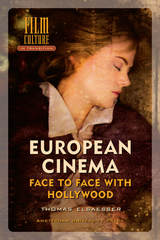 European Cinema: Face to Face with Hollywood
Thomas Elsaesser
Amsterdam University Press, 2005 Has European cinema, in the age of globalization, lost contact not only with the world at large, but with its own audiences? Between the thriving festival circuit and the obligatory late-night television slot, is there still a public or a public sphere for European films? Can the cinema be the appropriate medium for a multicultural Europe and its migrating multitudes? Is there a division of representational labor, with Hollywood providing stars and spectacle, the Asian countries exotic color and choreographed action, and Europe a sense of history, place and memory?
This collection of essays by an acclaimed film scholar examines how independent filmmaking in Europe has been reinventing itself since the 1990s, faced by renewed competition from Hollywood and the challenges posed to national cinemas by the fall of the Wall in 1989. Elsaesser reassesses the debates and presents a broader framework for understanding the forces at work since the 1960s. These include the interface of "world cinema" and the rise of Asian cinemas, the importance of the international film festival circuit, the role of television, and the changing aesthetics of auteur cinema. New audiences have different allegiances, and new technologies enable networks to reshape identities, but European cinema still has an important function in setting critical and creative agendas, even as its economic and institutional bases are in transition.
European Coasts of Bohemia: Negotiating the Danube-Oder-Elbe Canal in a Troubled Twentieth Century
Jirí Janác
Amsterdam University Press, 2012 The Danube-Oder-Elbe Canal promised to create an integrated waterway system across Europe, linking Black Sea ports to Atlantic markets and giving landlocked Czech nation its own connections to the ocean. The fascinating history of this never-completed project, European Coasts of Bohemia tells the story of the experts who confronted and contributed to different and often conflicting geopolitical visions of Europe. Jíra Janác shows how the canal-backers adapted themselves to various political developments, such as the break-up of the Austrian–Hungarian Empire and the integration into the Soviet Bloc, while still managing to keep the canal project alive.
European Culture and the Media
Edited by Ib Bondebjerg and Peter Golding
Intellect Books, 2004 European Culture and the Media presents new research and thinking on cultural globalisation, with special focus on and in-depth analysis of a number of cases and dimensions in European media culture and its broader social, political and economic context. The book is written by some of the most prominent European media researchers from both the humanities and social sciences. It offers a provocative and new interdisciplinary look at the modern European media culture, and at the same time introduces new theories, empirical data and analysis of media communciation, genres and media institutions.
 European Elections and Domestic Politics: Lessons from the Past and Scenarios for the Future
Wouter van der Brug
University of Notre Dame Press, 2007
This book analyzes how the behavior of voters, parties, and the mass media in European Parliament elections affects domestic politics and how, in turn, domestic politics affects those behaviors. The contributors discuss election turnout and party choice, the contract between the European Parliament and national elections, the importance of citizens' attitudes toward European integration, the relationship between political parties' domestic policies and their stances on European integration, and the ways in which the mass media and election campaigns affect electoral outcomes. On the basis of this information, the authors present possible scenarios for future European elections and their relationship to the domestic politics of the EU member-states.
The product of superb empirical research, European Elections and Domestic Politics is based on a unique combination of data from voter surveys, party manifestos, and mass media reports across all members of the European Union. This book will be essential for anyone interested in the future of the EU.
“The definitive analysis of elections to the European Parliament, by a first-rate line-up of scholars, this study provides a masterclass on understanding the way that European elections, national politics, and the process of EU integration interact in complex and unexpected ways. An invaluable study for those interested in elections and voting behavior, European democracy, comparative politics, political communications, and political parties.” —Pippa Norris, Director, Democratic Governance Group, United Nations Development Program and John f. Kennedy School of Government, Harvard University
“This book represents the best of the intersection on EU studies and the study of comparative European politics. This sort of scholarship is the cornerstone of those interested in the domestic politics of European integration … a work of the first order of quality.” —Paul Taggart, University of Sussex
“This is the most comprehensive book ever written on European Parliament elections. For the first time, the latest research on voter turnout, voting behavior, party manifestos, election outcomes, the effect of the elections on national politics, and media coverage of European Parliament elections has been brought together in a single volume.” —Simon Hix, London School of Economics
European Energy Challenge: East and West
George W. Hoffman
Duke University Press, 1985 By examining all of Europe in a single study, an eminent geographer and expert on European development makes, in this volume, a unique contribution to the understanding of the changing energy relations of the European countries, east and west. The book examines the problem of establishing a reliable energy supply base in western Europe through structural changes and alternate and substitute energy sources. The volume also evaluates western European security problems arising from present and future reliance on Soviet energy and relates this to North Sea supplies of gas and oil, indigenous and import supplies, and nuclear power generation.
European Expansion and the Contested Borderlands of Late Medieval Podillya, Ukraine
Vitaliy Mykhaylovskiy
Arc Humanities Press, 2019 This book focuses on a key zone within the eastern frontier of medieval Europe: Podillya in modern-day Ukraine. Vitaliy Mykhaylovskiy offers a definitive guide to the region, which experienced great cultural and religious diversity, together with a continuous influx of newcomers. This is where Christian farmers met Muslim nomads. This is where German town residents and Polish nobles met urban Armenians and Tatars serving in the military. Podillya offers a unique opportunity to see interaction of so many peoples, principalities, and cultures – the eastern frontier of Europe at its most dynamic.
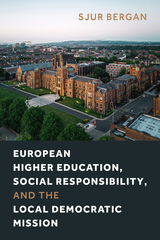 European Higher Education, Social Responsibility, and the Local Democratic Mission
Sjur Bergan
Temple University Press, 2025 Education is about more than preparing students for the labor market; it is about preparing them to be active citizens in democratic societies, to engage in personal growth, and to develop a broad, advanced knowledge base. As Sjur Bergan emphasizes in European Higher Education, Social Responsibility, and the Local Democratic Mission, advocacy is required to ensure that higher education institutions meet these goals through cooperation with their local communities.
Bergan outlines the political and institutional complexity of European universities. He explains how history, cultural traditions, and national identities impact education across Europe. He also describes the roles of the Council of Europe and U.S. higher education in the development of a transatlantic cooperation on the democratic mission of higher education. Other chapters explore education programs for developing and maintaining democracy and human rights, pragmatic and creative ways that European universities are working with their local communities, and the development of education opportunities for refugees.
Ultimately, Bergan’s book explores not only the local democratic mission of higher education as it has developed in Europe, but also how it could continue to develop, and why it is important it does so.
In the series Higher Education, Place, and Social Responsibility.
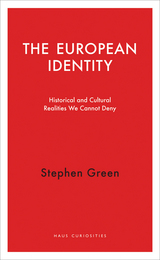 The European Identity: Historical and Cultural Realities We Cannot Deny
Stephen Green
Haus Publishing, 2015 What—if anything—do the twenty-eight member states of the European Union have in common? Amidst all the variety, can one even speak of a European identity? In this timely book, Stephen Green explores these questions and argues for the necessity of the European voice in the international community.
Green points out that Europeans can readily define the differences that separate them from others around the globe, but they have yet to clearly define their own similarities across member states. He argues that Europe has something distinctive and vitally important to offer: the experience of a unique journey through centuries of exploration and conflict, errors and lessons, soul-searching and rebuilding—an evolution of universal significance.
Coming at a time when the divisions in European culture have been laid bare by recent financial crises and calls for independence, The European Identity identifies one of the biggest challenges for all of the member states of the European Union.
 European Identity in Cinema
Edited by Wendy Everett
Intellect Books, 1995 The identity of European cinema, like the identity of Europe itself, is multiple, complex, and fascinating. Providing both a general survey of contemporary European cinema production, distribution and exhibition and detailed critical analysis of specific films, directors, and national cinemas, this volume offers a stimulating and thought-provoking contribution to current film debate.
While the book’s critical essays offer keen insight into the complex identities of European cinema, its combination of breadth and detail, and its interdisciplinary focus and background ensure its wider relevance to anyone interested in questions of contemporary culture and European affairs in general. Its stylistic clarity and freedom from jargon make it readable and accessible. The essays have been written by respected academics working in a number of disciplines including Film and Media Studies, Modern Languages, and Cultural Studies.
Topics include questions of memory and identity; filmic autobiography and first-person narration; cultural identity; peripheral voices; popular film and political film. Individual directors, and different national cinemas, including those of France, Germany, Northern Ireland, Russia, Scotland and Spain, are viewed in a wider pan- European context.
European Immigrations: Trends, Structures and Policy Implications
Edited by Marek Okólski
Amsterdam University Press, 2012 This volume of the latest research in European migration embraces a continent-wide outlook on migration processes and accounts particularly from Southern and Eastern European perspectives. This is accomplished by analyzing the long-term transition that countries undergo from net emigration to net immigration, as well as developments in their migrant inflows, integration, and policy. The mix of authors—representing several academic centers across Europe yet pursuing a common vision of European migration past, present, and future—utilize new empirical evidence, specially designed and collected.
European Journalism Education
Edited by Georgios Terzis
Intellect Books, 2009 This book is the first comprehensive directory of the journalism education and training offered in thirty-three European countries. The volume, organized by country, discusses the history of journalism education and includes an analysis of all the current university programs and training provided by private media and professional organizations in each location. In addition, each section includes a thorough examination of the historical, political, economic and social framework of journalism in each country that looks towards the future of journalism education and media in Europe. European Journalism Education will be an asset to scholars of international communication studies and to media policy makers around the world.
European Liberalism and 'the Muslim Question'
Bhikhu Parekh
Amsterdam University Press, 2008 A large section of European opinion believes that Muslims present a long term political and cultural threat. Professor Parekh argues that this view is deeply mistaken. There is, nevertheless, a small underclass, mainly young, which is deeply alienated from both their parental and European cultures. They are in Europe but not of it, and have no commitment to it. A dialogue between the Muslim communities in general and the host societies is therefore necessary. It has its limits and weshould not expect too much from it. However, there is no alternative to it.
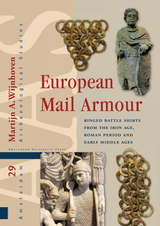 European Mail Armour: Ringed Battle Shirts from the Iron Age, Roman Period and Early Middle Ages
Martijn A. Wijnhoven
Amsterdam University Press, 2022 Mail armour (commonly mislabelled 'chainmail') was used for more than two millennia on the battlefield. After its invention in the Iron Age, mail rapidly spread all over Europe and beyond. The Roman army, keen on new military technology, soon adopted mail armour and used it successfully for centuries. Its history did not stop there and mail played a vital role in warfare during the Middle Ages up to the Early Modern Period.
Given its long history, one would think mail is a well-documented material, but that is not the case. For the first time, this books lays a solid foundation for the understanding of mail armour and its context through time. It applies a long-term multi-dimensional approach to extract a wealth of as yet untapped information from archaeological, iconographic and written sources. This is complemented with technical insights on the mail maker’s chaîne opératoire.
 European Media Governance: National and Regional Dimensions
Georgios Terzis
Intellect Books, 2013 A multitude of factors affect how the European media industry is governed, including commercialisation, concentration, convergence and globalisation. George Terzis’ collection, European Media Governance, is the first volume to concentrate on analysing and explaining how European countries are slowly conceding control of the media from the government to the market, professional and public forces.
This impressive volume provides a detailed examination of all aspects of media governance, including media ownership structures, government policies, citizen’s organisations and union’s accountability systems, for 32 European countries. European Media Governance includes recent research into technological developments and provides sources for more information in each country. In addition to this incredibly diverse scale of research and analysis, the book provides a companion website with regular updates. Terzis’ European Media Governance addresses all aspects of media governance in Europe, reflecting contemporary developments in both the countries analysed and their media, creating a comprehensive and reliable source.
European Media Governance: The Brussels Dimension
Edited by Georgios Terzis
Intellect Books, 2008 European governments are gradually ceding control of national media to international organizations such as the EU. In light of this trend, European Media Governance investigates how the print, broadcast, film, and advertising industries lobby in Brussels. Contributors examine the work of the European Commission and the European Consumers’ Association as well as the roles played in media governance by such organizations as the Federation of European Film Directors. Offering a detailed analysis of media-related debates that will affect Europeans for decades to come, this volume is an essential read for media professionals and scholars.
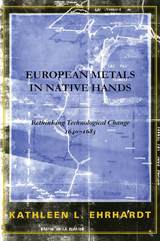 European Metals in Native Hands: Rethinking Technological Change 1640-1683
Kathleen L. Ehrhardt
University of Alabama Press, 2005 The first detailed analysis of Native metalworking in the Protohistoric/Contact Period
From the time of their earliest encounters with European explorers and missionaries, Native peoples of eastern North America acquired metal trinkets and utilitarian items and traded them to other aboriginal communities. As Native consumption of European products increased, their material culture repertoires shifted from ones made up exclusively of items produced from their own craft industries to ones substantially reconstituted by active appropriation, manipulation, and use of foreign goods. These material transformations took place during the same time that escalating historical, political, economic, and demographic influences (such as epidemics, new types of living arrangements, intergroup hostilities, new political alliances, missionization and conversion, changes in subsistence modes, etc.) disrupted Native systems. Ehrhardt's research addresses the early technological responses of one particular group, the Late Protohistoric Illinois Indians, to the availability of European-introduced metal objects. To do so, she applied a complementary suite of archaeometric methods to a sample of 806 copper-based metal artifacts excavated from securely dated domestic contexts at the Illiniwek Village Historic Site in Clark County, Missouri. Ehrhardt's scientific findings are integrated with observations from historical, archaeological, and archival research to place metal use by this group in a broad social context and to critique the acculturation perspective at other Contact Period sites. In revealing actual Native practice, from material selection and procurement to ultimate discard, the author challenges technocentric explanations for Native material and cultural change at contact.
 European Others: Queering Ethnicity in Postnational Europe
Fatima El-Tayeb
University of Minnesota Press, 2011 European Others offers an interrogation into the position of racialized communities in the European Union, arguing that the tension between a growing nonwhite, non-Christian population and insistent essentialist definitions of Europeanness produces new forms of identity and activism. Moving beyond disciplinary and national limits, Fatima El-Tayeb explores structures of resistance, tracing a Europeanization from below in which migrant and minority communities challenge the ideology of racelessness that places them firmly outside the community of citizens. Using a notable variety of sources, from drag performances to feminist Muslim activism and Euro hip-hop, El-Tayeb draws on the largely ignored archive of vernacular culture central to resistance by minority youths to the exclusionary nationalism that casts them as threatening outcasts. At the same time, she reveals the continued effect of Europe’s suppressed colonial history on the representation of Muslim minorities as the illiberal Other of progressive Europe. Presenting a sharp analysis of the challenges facing a united Europe seen by many as a model for twenty-first-century postnational societies, El-Tayeb combines theoretical influences from both sides of the Atlantic to lay bare how Europeans of color are integral to the continent’s past, present, and, inevitably, its future.
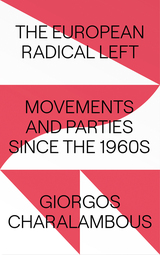 The European Radical Left: Movements and Parties since the 1960s
Giorgos Charalambous
Pluto Press, 2021 Is today’s left really new? How has the European radical left evolved?
Giorgos Charalambous answers these questions by looking at three moments of rapid political change - the late 1960s to late 1970s; the turn of the millennium; and post-2008. He challenges the conventional understanding of a ‘new left’, drawing out continuities with earlier movements and parties.
Charalambous examines the ‘Long ‘68’, symbolised by the May uprisings in France, which saw the rise of new left forces and the widespread criticism by younger radical activists of traditional communist and socialist parties. He puts this side by side with the turn of the millennium when the Global Justice Movement rose to prominence and changed the face of the international left, and also the period after the financial crash of 2008 and the rise of anti-austerity politics which initiated the most recent wave of new left parties such as Podemos in Spain and Syriza in Greece.
With a unique ‘two-level’ perspective, Charalambous approaches the left through both social movements and party politics, looking at identities, rhetoric and organization, and bringing a fresh new approach to radical history, as well as assessing challenges for both activists and scholars.
The European Repository Landscape : Inventory study into present type and level of OAI compliant Digital Repository activities in the EU
Maurits van der Graaf
Amsterdam University Press, 2008 What is the current state of digital repositories for research output in the European Union? What should be the next steps to stimulate an infrastructure for digital repositories at a European level? To address these key questions, an inventory study into the current state of digital repositories for research output in the European Union was carried out as part of the DRIVER Project. The study produces a complete inventory of the state of digital repositories in the 27 countries of the European Union as per 2007 and provides a basis to contemplate the next steps in driving forward an interoperable infrastructure at a European level. This title is available in the OAPEN Library - http://www.oapen.org.
European Review of Philosophy, 6: The Structure of Nonconceptual Content
Edited by Christine van Geen and Frédérique de Vignemont
CSLI, 2006
Can concepts represent subtleties in emotions, bodily sensations, and perceptions? What is the nature of mental representations in nonlinguistic and prelinguistic creatures? The European Review of Philosophy, Volume 6 tackles issues such as these by asking how far the analogy between conceptual and nonconceptual content can be carried. By bringing together contributions from both conceptualists and nonconceptualists, this volume sheds new light on an issue sure to interest cognitive scientists and philosophers of mind.
The European Revolutions of 1848 and the Americas
Edited by Guy Thomson
University of London Press, 2002 Very little has been written on the impact of the European revolutions of 1848 on the Americas. Nevertheless, their influence, particularly in the case of France, as palpable. The revolutions of 1848 renewed and extended democratic vocabulary and republican symbolism from Canada to Chile. This collection looks at the catalytic effect of Europe's 'springtime of the peoples' in the Americas, prompting the disenfranchised to demand representative institutions and to conceive of themselves as sovereign people, and giving rise to radical and progressive liberal parties - the Free Soil Movement/Free Democrats in the United States, the Reform Liberals in Mexico, the 'progresista' liberal parties in Colombia and Peru, the 'Society of Equality' and the Radical Party in Chile - that challenged the political groupings that had served since Independence.
The European Second Generation Compared: Does the Integration Context Matter?
Edited by Maurice Crul, Jens Schneider, and Frans Lelie
Amsterdam University Press, 2012 One of the foremost challenges for contemporary Europe is the integration of new immigrants and their children. The second generation constitutes a rapidly growing and highly visible group of metropolitan youth that faces the dilemma of navigating their ethnic identities in a world that puts a premium on assimilation. This volume examines the lives of the second generation in fifteen European cities, from their educational background to their professional lives to their own cultural and religious identities
“This book is both theoretically and empirically important, as no other work has been able to compare these second-generation groups along key indices of integration in so many European countries.”—Miri Song, University of Kent
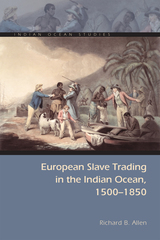 European Slave Trading in the Indian Ocean, 1500–1850
Richard B. Allen
Ohio University Press, 2015 Between 1500 and 1850, European traders shipped hundreds of thousands of African, Indian, Malagasy, and Southeast Asian slaves to ports throughout the Indian Ocean world. The activities of the British, Dutch, French, and Portuguese traders who operated in the Indian Ocean demonstrate that European slave trading was not confined largely to the Atlantic but must now be viewed as a truly global phenomenon. European slave trading and abolitionism in the Indian Ocean also led to the development of an increasingly integrated movement of slave, convict, and indentured labor during the late eighteenth and early nineteenth centuries, the consequences of which resonated well into the twentieth century.
Richard B. Allen’s magisterial work dramatically expands our understanding of the movement of free and forced labor around the world. Drawing upon extensive archival research and a thorough command of published scholarship, Allen challenges the modern tendency to view the Indian and Atlantic oceans as self-contained units of historical analysis and the attendant failure to understand the ways in which the Indian Ocean and Atlantic worlds have interacted with one another. In so doing, he offers tantalizing new insights into the origins and dynamics of global labor migration in the modern world.
 European Socialists Across Borders: Transnational Cooperation and Alternative Visions of Europe After 1945
Edited by Mélanie Torrent and Andrew J. Williams
University of London Press, 2024 An assessment of the influence of socialist networks on European social and political reconstruction, as well as European peacebuilding across continental borders.
From postwar debates on institutionalized cooperation in Western Europe to the current dynamics of the European Union in the post-Cold War era, European Socialists Across Borders investigates the impact of socialist networks on European construction and integration, and the role of European socialism in international (dis)orders. It assesses how socialist networks were influenced by socialist groups outside Europe, and how they navigated domestic and global politics. Collectively, the chapters explore four main areas: the relationship between European ideals of cooperation, daily routine, and domestic politics; the shifting definitions of political elites in Europe—including African, Caribbean, and Asian influence on the transformation of European socialist thought, policies, and practices; the extent to which European socialists attempted to propose a post-colonial, post-imperial agenda for Europe; and how European institutions were used by socialists and their contacts.
Reflecting on the successes and failures of the transnational processes of socialization, the role of cultural bridge-builders, and the reasons behind missed opportunities for peace and equality, this book examines how socialist politicians and activists conceived of Europe’s role in worldmaking in its transition out of conflict and empire. Through this reflection, the book contributes to a better understanding of cooperation across borders.
 European Transformations: The Long Twelfth Century
Thomas F. X. Noble
University of Notre Dame Press, 2012
The “long twelfth century”—1050 to 1215—embraces one of the transformative moments in European history: the point, for some, at which Europe first truly became “Europe.” Historians have used the terms “renaissance,” “reformation,” and “revolution” to account for the dynamism of intellectual, religious, and structural renewal manifest across schools, monasteries, courts, and churches. Complicating the story, more recent historical work has highlighted manifestations of social crisis and oppression. In European Transformations: The Long Twelfth Century, nineteen accomplished medievalists examine this pivotal era under the rubric of “transformation”: a time of epoch-making change both good and ill, a release of social and cultural energies that proved innovative and yet continuous with the past.
Their collective reappraisal, although acknowledging insights gained from over a century of scholarship, fruitfully adjusts the questions and alters the accents. In addition to covering such standard regions as England and France, and such standard topics as feudalism and investiture, the contributors also address Scandinavia, Iberia, and Eastern Europe, women’s roles in medieval society, Jewish and Muslim communities, law and politics, and the complexities of urban and rural situations. With their diverse and challenging contributions, the authors offer a new point of departure for students and scholars attempting to grasp the dynamic puzzle of twelfth-century Europe.
"In European Transformations: The Long Twelfth Century, Thomas F. X. Noble and John Van Engen have assembled an impressive array of distinguished medievalists to explore geographical regions and a variety of themes to expose the best current thinking about what was and what was not distinctive about the twelfth century. Their collective efforts will be much cited for the innovative and well-argued contributions in this volume." —Paul Hyams, Cornell University
 The European Union: A Critical Guide
Steven P. McGiffen
Pluto Press, 2006 The political dynamics of the European Union can often appear confusing, shrouded as they are in complex legislative processes. This book offers a clear and thorough critical introduction to the origins, development and current direction of the EU, and pinpoints the major policy debates animating decision-makers.
This revised and updated edition offers a well-illustrated analysis of each of the EU¹s major policy areas, and covers arguments both for and against the EU. McGiffen explores subjects including enlargement, internal and external security, the Euro, trade, the environment, employment, transport and regional policy. He explains how and why the debate about membership is frequently and falsely presented as if it were a conflict between 'nationalism' and Œinternationalism', and argues instead that the EU is merely one of a number of possible solutions to the the economic and political problems facing Europe.
Published in association with Spectre.
Steve McGiffen is a writer, author and consultant. Until recently he worked for the United Left Group in the European Parliament and the Socialist Party of the Netherlands. He is editor of Spectre, a radical left website which can be read at www.spectrezine.org, His previous books include Biotechnology (Pluto Press, 2005).
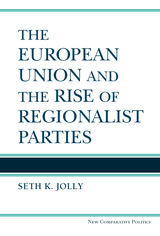 The European Union and the Rise of Regionalist Parties
Seth K. Jolly
University of Michigan Press, 2015 Rather than weakening the forces of nationalism among member states, the expanding power of the European Union actually fosters conditions favorable to regionalist movements within traditional nation-states. Using a cross-national, quantitative study of the advent of regionalist political parties and their success in national parliamentary elections since the 1960s, along with a detailed case study of the fortunes of the pro-independence Scottish National Party, Seth K. Jolly demonstrates that supranational integration and subnational fragmentation are not merely coincidental but related in a theoretical and predictable way. At the core of his argument, Jolly posits the Viability Theory: the theory that the EU makes smaller states more viable and more politically attractive by diminishing the relative economic and political advantages of larger-sized states. European integration allows regionalist groups to make credible claims that they do not need the state to survive because their regions are part of the EU, which provides access to markets, financial institutions, foreign policy, and other benefits. Ultimately, Jolly emphasizes, scholars and policy-makers must recognize that the benefits of European integration come with the challenge of increased regionalist mobilization that has the potential to reshape the national boundaries of Europe.
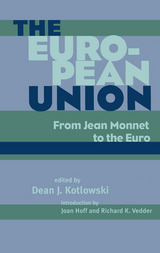 The European Union: From Jean Monnet to the Euro
Dean Kotlowski
Ohio University Press, 2000 The transformation of Europe since the end of World War II has been astounding. In 1945, a battle–scarred continent lay in ruins. Today, it has achieved a level of integration, prosperity, and stability that few people could have anticipated. The life and career of the French statesman Jean Monnet and the recent adoption of the “euro” as Europe's common currency represent the bookends of this half–century–long metamorphosis.
This collection of essays, drawn from the lectures of the 1999 Baker Conference at Ohio University, explores Monnet's vision of an integrated Europe, its gradual implementation, and the social, economic, and international consequences. The scholarship focuses upon Monnet's life, personality, and legacy, the development of social policy within the European Union (EU), the economic and national security implications of the EU, and the continuation of an American presence in Europe through the North Atlantic Treaty Organization.
This significant collection fuses biography with comparative political economy and policy studies to help political scientists, sociologists, economists, international lawyers, and historians on both sides of the Atlantic understand important aspects of Europe's post–1945 development.
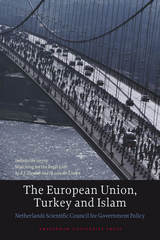 The European Union, Turkey and Islam
The Netherlands Scientific Council for Government Policy (WRR)
Amsterdam University Press, 2005 The relationship between Turkey and Islam is a hotly debated issue that dominates discussion over the country's bid to join the European Union. The European Union, Turkey and Islam examines here the role of religion in Turkey and the EU and offers arguments on why Turkish Islam will not be an obstacle to Turkey's EU membership.
The distinguished contributors analyze Turkish Islam and attempt to determine how significant a factor it is in Turkey's compatibility with the democratic and humanitarian aims of EU member states. Their incisive essays argue that Islamic religious forces will not undermine the autonomy of the secular Turkish state. They also contend that Islam-inspired political parties actually support the secular government. Included in the volume is the thought-provoking study "Searching for the Fault-Line" by E. J. Zürcher and H. van der Linden that examines Turkey's current religious landscape and ultimately dismisses the notion of an inevitable clash between Turkish Islam and European cultures.
A valuable study for political scientists, European scholars, and interested observers, The European Union, Turkey and Islam offers a timely and masterfully argued case for why Islam as practiced in Turkey should not be an impediment to the nation's membership in the European Union.
 European Urbanization: 1500-1800
Jan De Vries
Harvard University Press, 1984 In European Urbanization Jan de Vries provides the first comprehensive data base for understanding the nature of the changes that took place in European cities from 1500 to 1800. The book is based on an immense systematic survey of the population history of 379 European cities with 10,000 or more inhabitants analyzed at fifty-year intervals.
Using a wide range of economic, demographic, and geographic models, de Vries illustrates patterns of urban growth, draws conclusions about the significance of migratory behavior, and shows the effects of urbanization on the history of Europe as a whole. In presenting these broad measures of urbanization, de Vries makes a case that the cities of Europe gradually came to form a single urban system. The properties of this system are analyzed with the use of several geographical concepts: rank-size distribution, transition matrices, and potential surfaces, among others. This examination of the fortunes of cities of different sizes and regions and the economic and political factors that affected their development is fundamentally important for understanding modern Europe and the contemporary problems of urban development. De Vries mines these rich, complex data to give us a rounded view of the dynamics of change in urban preindustrial society.
European Urbanization will be of great value to readers interested in social, economic, and demographic history, geography, architecture, and urban studies.
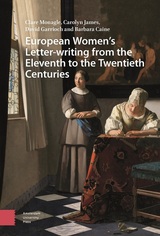 European Women's Letter-writing from the 11th to the 20th Centuries
Clare Monagle
Amsterdam University Press, 2023 This book reveals the importance of personal letters in the history of European women between the year 1000 and the advent of the telephone. It explores the changing ways that women used correspondence for self-expression and political mobilization over this period, enabling them to navigate the myriad gendered restrictions that limited women’s engagement in the world. Whether written from the medieval cloister, or the renaissance court, or the artisan’s workshop, or the drawing room, letters crossed geographical and social distance and were mobile in ways that women themselves could not always be. Women wrote to govern, to argue, to plead, and to demand. They also wrote to express love and intimacy, and in so doing, to explain and to understand themselves. This book argues that the personal letter was a crucial place for European women’s self-fashioning, and that exploring the history of their letters offers a profound insight into their subjectivity and agency over time.
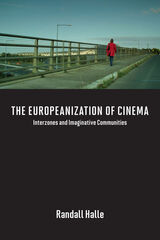 The Europeanization of Cinema: Interzones and Imaginative Communities
Randall Halle
University of Illinois Press, 2014 In this innovative study, German and film studies scholar Randall Halle advances the concept of "interzones"--geographical and ideational spaces of transit, interaction, transformation, and contested diversity--as a mechanism for analyzing European cinema.
He focuses especially on films about borders, borderlands, and cultural zones as he traces the development of interzones from the inception of central European cinema to the avant-garde films of today. Throughout, he shows how cinema both reflects and engenders interzones that explore the important questions of Europe's social order: imperialism and nation-building in the late nineteenth and early twentieth centuries; "first contact" between former adversaries (such as East and West Germany) following World War II and the Cold War; and migration, neo-colonialism, and cultural imperialism in the twenty-first century.
Ultimately, Halle argues that today's cinema both produces and reflects imaginative communities. He demonstrates how, rather than simply erasing boundaries, the European Union instead fosters a network of cultural interzones that encourage cinematic exploration of the new Europe's processes and limits of connectivity, tolerance, and cooperation.
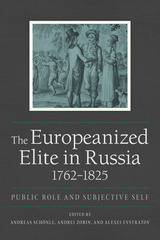 The Europeanized Elite in Russia, 1762–1825: Public Role and Subjective Self
Edited by Andreas Schönle, Andrei Zorin, and Alexei Evstratov
Northern Illinois University Press, 2016 This illuminating volume provides a new understanding of the subjective identity and public roles of Russia’s Europeanized elite between the years of 1762 and 1825. Through a series of rich case studies, the editors reconstruct the social group’s worldview, complex identities, conflicting loyalties, and evolving habits. The studies explore the institutions that shaped these nobles, their attitude to state service, the changing patterns of their family life, their emotional world, religious beliefs, and sense of time.
The creation of a Europeanized elite in Russia was a state-initiated project that aimed to overcome the presumed “backwardness” of the country. The evolution of this social group in its relations to political authority provides insight into the fraught identity of a country developing on the geopolitical periphery of Europe. In contrast to postcolonial studies that explore the imposition of political, social, and cultural structures on colonized societies, this multidisciplinary volume explores the patterns of behavior and emotion that emerge from the processes of self-Europeanization.
The Europeanized Elite in Russia, 1762–1825 will appeal to scholars and general readers interested in Russian history and culture, particularly in light of current political debates about globalization and widening social inequality in Europe.
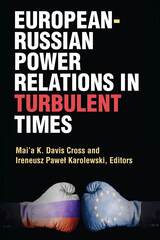 European-Russian Power Relations in Turbulent Times
Mai’a K. Davis Cross and Ireneusz Pawel Karolewski, Editors
University of Michigan Press, 2021 The Russia-Europe relationship is deteriorating, signaling the darkest era yet in security on the continent since the end of the Cold War. In addition, the growing influence of the Trump administration has destabilized the transatlantic security community, compelling Europe—especially the European Union—to rethink its relations with Russia.
The volume editors’ primary goal is to illuminate the nature of the deteriorating security relationship between Europe and Russia, and the key implications for its future. While the book is timely, the editors and contributors also draw out long-term lessons from this era of diplomatic degeneration to show how increasing cooperation between two regions can devolve into rapidly escalating conflict. While it is possible that the relationship between Russia and Europe can ultimately be restored, it is also necessary to understand why it was undermined in the first place. The fact that these transformations occur under the backdrop of an uncertain transatlantic relationship makes this investigation all the more pressing.
Each chapter in this volume addresses three dimensions of the problem: first, how and why the power status quo that had existed since the end of the Cold War has changed in recent years, as evidenced by Russia’s newly aggressive posturing; second, the extent to which the EU’s power has been enabled or constrained in light of Russia’s actions; and third, the risks entailed in Europe’s reactive power—that is, the tendency to act after-the-fact instead of proactively toward Russia—in light of the transatlantic divide under Trump.
Europeans Engaging the Atlantic: Knowledge and Trade, 1500-1800
Edited by Susanne Lachenicht
Campus Verlag, 2014 Europeans Engaging the Atlantic offers innovative perspectives on historical European knowledge concerning the “New World” and on trade and commerce therewith. In so doing, it enhances our understanding of how, when, and why early modern Europeans made sense of the Atlantic world, and how they tried to connect with Atlantic trade and commerce. Featuring case studies that discuss these issues from the sixteenth to the eighteenth centuries, this volume explores both the degree to which the Atlantic was (or was not) part of the European worldview—or just one part of a worldview with many centers of interest—and how European engagement with the Atlantic world evolved.
Europe's Alliance with Israel: Aiding the Occupation
David Cronin
Pluto Press, 2010 In carefully crafted official statements, the European Union presents itself as an honest broker in the Middle East. In reality, however, the EU’s 27 governments have been engaged in a long process of accommodating Israel’s occupation of Palestinian territories.
Journalist David Cronin interrogates the relationship and its outcomes. A recent agreement for 'more intense, more fruitful, more influential co-operation' between the EU and Israel has meant that Israel has become a member state of the Union in all but name. Cronin shows that rather than using this relationship to encourage Israeli restraint, the EU has legitimised actions such as the ill-treatment of prisoners and the Gaza invasion.
Concluding his revealing and shocking account, Cronin calls for a continuation and deepening of international activism and protest to halt the EU's slide into complicity.
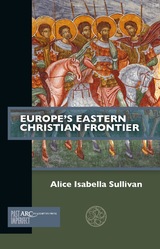 Europe's Eastern Christian Frontier
Alice Isabella Sullivan
Arc Humanities Press, 2024 Within the shifting political landscapes of Eastern Europe during the late Middle Ages, the principality of Moldavia (extending over today's northeastern third of Romania and the Republic of Moldova) emerged as an eastern Christian frontier—indeed, a bastion, a “gate of Christianity”—in the face of the advancing Ottoman armies and Tatar forces. Moldavia’s leaders—among them Peter I Mușat, Alexander I, and Stephen III—established political, military, and economic contacts in efforts to strengthen and protect their domain, and, by extension, the rest of Europe. After the fall of Constantinople in 1453, Moldavia under Stephen III also refashioned Byzantine traditions in a new context, thereby preserving and transforming the legacies of the former Byzantine Empire to the north of the Danube River. This book argues for Moldavia’s central role in the political, military, economic, and cultural spheres of Eastern Europe from the second half of the fourteenth century to the turn of the sixteenth century.
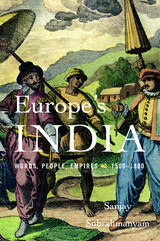 Europe’s India: Words, People, Empires, 1500–1800
Sanjay Subrahmanyam
Harvard University Press, 2017 When Portuguese explorers first rounded the Cape of Good Hope and arrived in the subcontinent in the late fifteenth century, Europeans had little direct knowledge of India. The maritime passage opened new opportunities for exchange of goods as well as ideas. Traders were joined by ambassadors, missionaries, soldiers, and scholars from Portugal, England, Holland, France, Italy, and Germany, all hoping to learn about India for reasons as varied as their particular nationalities and professions. In the following centuries they produced a body of knowledge about India that significantly shaped European thought.
Europe’s India tracks Europeans’ changing ideas of India over the entire early modern period. Sanjay Subrahmanyam brings his expertise and erudition to bear in exploring the connection between European representations of India and the fascination with collecting Indian texts and objects that took root in the sixteenth century. European notions of India’s history, geography, politics, and religion were strongly shaped by the manuscripts, paintings, and artifacts—both precious and prosaic—that found their way into Western hands.
Subrahmanyam rejects the opposition between “true” knowledge of India and the self-serving fantasies of European Orientalists. Instead, he shows how knowledge must always be understood in relation to the concrete circumstances of its production. Europe’s India is as much about how the East came to be understood by the West as it is about how India shaped Europe’s ideas concerning art, language, religion, and commerce.
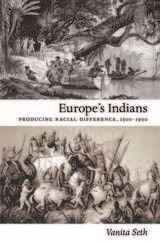 Europe's Indians: Producing Racial Difference, 1500–1900
Vanita Seth
Duke University Press, 2010 Europe’s Indians forces a rethinking of key assumptions regarding difference—particularly racial difference—and its centrality to contemporary social and political theory. Tracing shifts in European representations of two different colonial spaces, the New World and India, from the late fifteenth century through the late nineteenth, Vanita Seth demonstrates that the classification of humans into racial categories or binaries of self–other is a product of modernity. Part historical, part philosophical, and part a history of science, her account exposes the epistemic conditions that enabled the thinking of difference at distinct historical junctures. Seth’s examination of Renaissance, Classical Age, and nineteenth-century representations of difference reveals radically diverging forms of knowing, reasoning, organizing thought, and authorizing truth. It encompasses stories of monsters, new worlds, and ancient lands; the theories of individual agency expounded by Hobbes, Locke, and Rousseau; and the physiological sciences of the nineteenth century. European knowledge, Seth argues, does not reflect a singular history of Reason, but rather multiple traditions of reasoning, of historically bounded and contingent forms of knowledge. Europe’s Indians shows that a history of colonialism and racism must also be an investigation into the historical production of subjectivity, agency, epistemology, and the body.
Europe's Inner Demons: The Demonization of Christians in Medieval Christendom
Norman Cohn
University of Chicago Press, 2000 Europe's Inner Demons is a fascinating history of the irrational need to imagine witches and an investigation of how those fantasies made the persecutions of the middle ages possible. In addition, Norman Cohn's discovery that some influential sources on European witch trials were forgeries has revolutionized the field of witchcraft, making this one of the most essential books ever written on the subject.
Europe's Steppe Frontier, 1500-1800
William H. McNeill
University of Chicago Press, 1964 In Europe’s Steppe Frontier, acclaimed historian William H. McNeill analyzes the process whereby the thinly occupied grasslands of southeastern Europe were incorporated into the bodies-social of three great empires: the Ottoman, the Austrian, and the Russian. McNeill benefits from a New World detachment from the bitter nationality quarrels of the late nineteenth and early twentieth century which inspired but also blinded most of the historians of the region. Moreover, the unique institutional adjustments southeastern Europeans made to the frontier challenge cast indirect light upon the peculiarities of the North American frontier experience.
Europolis
Jean Bart
Central European University Press, 2025 Set in the decaying, multicultural port town of Sulina at the edge of the Danube Delta, Europolis is a hauntingly atmospheric novel that captures a world on the brink of vanishing. In this isolated outpost, where Greek, Romanian, Ukrainian, Jewish, Turkish, and Armenian characters coexist amid steamships and faded empires, the return from America of Nikola Marulis—rumored to be a wealthy émigré—sparks a wave of gossip, ambition, and dreams.
But Nikola’s homecoming is not what it seems. As illusions unravel, passions flare, and destinies collide, Europolis transforms from a tapestry of port life into a poignant meditation on disillusionment, mortality, and the slow erosion of a once-vital community.
First published in 1933 and now available in English for the first time, Bart’s masterpiece is an elegy for a town, a time, and the lost promise of modernity.
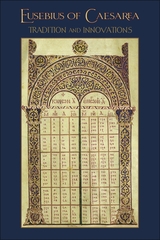 Eusebius of Caesarea: Tradition and Innovations
Aaron Johnson
Harvard University Press, 2013 Eusebius of Caesarea was one of the most significant and voluminous contributors to the development of late antique literary culture. Despite his significance, Eusebius has tended to receive attention more as a source for histories of early Christianity and the Constantinian empire than as a writer and thinker in his own right. He was a compiler and copyist of pagan and Christian texts, collator of a massive chronographical work, commentator on scriptural texts, author of apologetic, historical, educational, and biographical works, and custodian of one of the greatest libraries in the ancient world. As such, Eusebius merits a primary place in our appreciation of the literary culture of late antiquity for both his self-conscious conveyance of multiple traditions and his fostering of innovative literary and intellectual trajectories. By focusing on the full range of Eusebius’s literary corpus, the collection of essays in Eusebius of Caesarea offers new and innovative studies that will change the ways classicists, theologians, and ancient historians think about this major figure.
Eusebius of Emesa: Church and Theology in the Mid-Fourth Century
Robert E. Winn
Catholic University of America Press, 2011 Through a careful examination of his extant sermons, some of which survive in Latin and others in classical Armenian, this book invites readers to hear a bishop's voice from the mid- fourth century, an important period in late antique Christianity
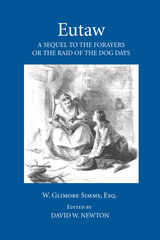 Eutaw: A Sequel to The Forayers, or The Raid of the Dog Days
William Gilmore Simms
University of Arkansas Press, 2006 William Gilmore Simms’s (1806–1870) body of work, which provides a sweeping fictional portrait of the colonial and antebellum South in all its regional diversity, complete with its literary and intellectual issues, is probably more comprehensive than that of any other nineteenth-century southern author. By the mid–1840s his novels were so famous that Edgar Allan Poe wrote that Simms was “the best novelist which this country has, on the whole, produced.” Simms wrote eight novels that were set in his home state of South Carolina during the Revolutionary War, and Eutaw, the sixth, was published in 1856, the same year Simms had a disastrous lecture tour in the North, in which he voiced strong pro–South Carolina and pro-Southern views.
Eutaw was a sequel to his very successful 1855 novel, The Forayers, and thus completed the most comprehensive saga of the war in our literary history. It focuses on the battle of Eutaw Springs in 1781, which ended British domination of South Carolina. Prominent in this significant battle were Nathanael Greene, Light-Horse Harry Lee, and Francis Marion, about whom Simms would later write a biography. As with other volumes in the Arkansas Edition of Simms’s work, this volume includes a critical introduction by the editor and a Simms chronology, as well as appendices dealing with textual matters.
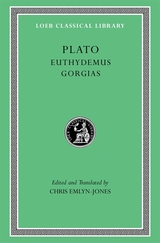 Euthydemus. Gorgias
Plato
Harvard University Press, 2025 Socrates against sophistry.
Plato of Athens, who laid the foundations of the Western philosophical tradition and in range and depth ranks among its greatest practitioners, was born to a prosperous and politically active family circa 427 BC. In early life an admirer of Socrates, Plato later founded the first institution of higher learning in the West, the Academy, among whose many notable alumni was Aristotle. Traditionally ascribed to Plato are thirty-five dialogues developing Socrates’ dialectic method and composed with great stylistic virtuosity, together with the Apology and thirteen letters.
The two dialogues in this volume, Euthydemus and Gorgias, probably date from the end of Plato’s early period in the late 380s. They contrast Socrates’ aims and methods with those of sophists, rhetoricians, and others who claimed the ability to teach excellence (aretē), while illustrating Socrates’ own conception thereof not as worldly power or political success but as a personal search for wisdom leading to happiness. Gorgias also contains a classic refutation of the “might is right” philosophy represented by Callicles, a ruthless up-and-coming politician.
This edition, which replaces the original Loeb editions by Sir Walter R. M. Lamb, offers text, translation, and annotation that are fully current with modern scholarship.
 Euthyphro. Apology. Crito. Phaedo
Plato
Harvard University Press, 2017 The fundamental tetralogy on Socrates’ final days.
Plato of Athens, who laid the foundations of the Western philosophical tradition and in range and depth ranks among its greatest practitioners, was born to a prosperous and politically active family circa 427 BC. In early life an admirer of Socrates, Plato later founded the first institution of higher learning in the West, the Academy, among whose many notable alumni was Aristotle. Traditionally ascribed to Plato are thirty-five dialogues developing Socrates’ dialectic method and composed with great stylistic virtuosity, together with the Apology and thirteen letters.
The four works in this volume recount the circumstances of Socrates’ trial and execution in 399 BC. In Euthyphro, set in the weeks before the trial, Socrates and Euthyphro attempt to define holiness. In Apology, Socrates answers his accusers at trial and unapologetically defends his philosophical career. In Crito, a discussion of justice and injustice explains Socrates’ refusal of Crito’s offer to finance his escape from prison. And in Phaedo, Socrates discusses the concept of an afterlife and offers arguments for the immortality of the soul. This edition, which replaces the original Loeb edition by Harold North Fowler, offers text, translation, and annotation that are fully current with modern scholarship.
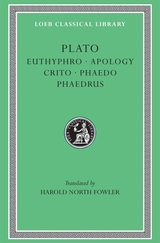 Euthyphro. Apology. Crito. Phaedo. Phaedrus
Plato
Harvard University Press Plato, the great philosopher of Athens, was born in 427 BCE. In early manhood an admirer of Socrates, he later founded the famous school of philosophy in the grove Academus. Much else recorded of his life is uncertain; that he left Athens for a time after Socrates' execution is probable; that later he went to Cyrene, Egypt, and Sicily is possible; that he was wealthy is likely; that he was critical of 'advanced' democracy is obvious. He lived to be 80 years old. Linguistic tests including those of computer science still try to establish the order of his extant philosophical dialogues, written in splendid prose and revealing Socrates' mind fused with Plato's thought.
In Laches, Charmides, and Lysis, Socrates and others discuss separate ethical conceptions. Protagoras, Ion, and Meno discuss whether righteousness can be taught. In Gorgias, Socrates is estranged from his city's thought, and his fate is impending. The Apology (not a dialogue), Crito, Euthyphro, and the unforgettable Phaedo relate the trial and death of Socrates and propound the immortality of the soul. In the famous Symposium and Phaedrus, written when Socrates was still alive, we find the origin and meaning of love. Cratylus discusses the nature of language. The great masterpiece in ten books, the Republic, concerns righteousness (and involves education, equality of the sexes, the structure of society, and abolition of slavery). Of the six so-called dialectical dialogues Euthydemus deals with philosophy; metaphysical Parmenides is about general concepts and absolute being; Theaetetus reasons about the theory of knowledge. Of its sequels, Sophist deals with not-being; Politicus with good and bad statesmanship and governments; Philebus with what is good. The Timaeus seeks the origin of the visible universe out of abstract geometrical elements. The unfinished Critias treats of lost Atlantis. Unfinished also is Plato's last work of the twelve books of Laws (Socrates is absent from it), a critical discussion of principles of law which Plato thought the Greeks might accept.
The Loeb Classical Library edition of Plato is in twelve volumes.
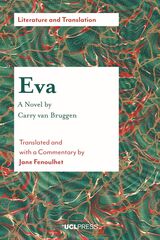 Eva: A Novel
Jane Fenoulhet
University College London, 2019 “I let these years slip through my fingers like a stream of dry, glinting sand.” Eva is a coming-of-age story told in fluid, stream-of-consciousness prose that takes readers through the eponymous main character’s orthodox Jewish girlhood to marriage to, finally, independence and sexual freedom. Originally published in 1927 by Dutch writer Carry van Bruggen (1881–1932), the experimental novel expresses Eva’s dawning sense of self and expanding subjectivity. Burdened all of her life by feelings of shame, Eva overcomes this legacy of her upbringing at the end of the novel and declares that it is “bodily desire that makes love acceptable.”
For the first time, Jane Fenoulhet has made this important, modernist novel accessible to English-language readers, her deft translation capturing the rich expressiveness of van Bruggen’s original Dutch. In insightful accompanying commentary, Fenoulhet describes how, just as the novel depicts the becoming of both Eva and her creator, so too can the translation be seen as the translator’s own becoming. Fenoulhet also describes the challenges of translating van Bruggen’s dynamic, intense narrative, which necessitated deep personal engagement with the novel.
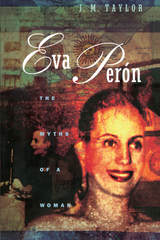 Eva Perón: The Myths of a Woman
Julie Taylor
University of Chicago Press, 1981 Eva Perón, one of the most powerful women in the world at the time of her death in 1952, rose from humble origins to international renown as First Lady of Argentina and the force behind the throne of her husband Juan Perón. Despite her immense popularity, she was inaccessible to the people of Argentina, and so images were constructed around her to fill that void. According to Julie M. Taylor, these "myths" around Eva Perón reflect Argentine culture and political history at the time of her seven-year reign. With a brief biography of Eva Perón serving as a backdrop, Taylor offers a detailed analysis of the principle myths that grew around this enigmatic woman.
"Taylor shows that she is remembered by different classes and political factions as saint, a revolutionary, or a whore, depending on whether she was interpreted as an embodiment or as a violation of the Argentine feminine ideal."—Booklist
"Highly commendable . . . it deliberately eschews the sensationalism that characterizes earlier [biographies]. . . . Taylor instead concentrates on the myths that have lingered since her death. . . . [This book] transcends biography."—Gentlemen's Quarterly
"[A] concise and brilliant examination of the legends that arose in Argentina during the lifetime . . . of a woman who broke with Argentine tradition and became a political figure in her own right."—New Yorker
 Evacuation: The Politics and Aesthetics of Movement in Emergency
Peter Adey
Duke University Press, 2024 In Evacuation, Peter Adey examines the politics, aesthetics, and practice of moving people and animals from harm during emergencies. He outlines how the governance and design of evacuation are recursive, operating on myriad political, symbolic, and affective levels in ways that reflect and reinforce social hierarchies. Drawing on a wide range of case studies, from the retrieval of wounded soldiers from the battlefield during World War I and escaping the World Trade Center on 9/11 to the human and animal evacuations in response to the 2009 Australian bushfires and the 2010 Haiti earthquake, Adey demonstrates that evacuation is not an equal process. Some people may choose not to move while others are forced; some may even be brought into harm through evacuation. Often the poorest, racialized, and most marginalized communities hold the least power in such moments. At the same time, these communities can generate compassionate, creative, and democratic forms of care that offer alternative responses to crises. Ultimately, Adey contends, understanding the practice of evacuation illuminates its importance to power relations and everyday governance.
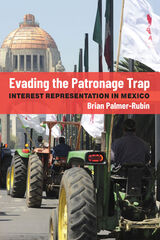 Evading the Patronage Trap: Interest Representation in Mexico
Brian Palmer-Rubin
University of Michigan Press, 2022 Why have Latin American democracies proven unable to confront the structural inequalities that cripple their economies and stymie social mobility? Brian Palmer-Rubin contends that we may lay the blame on these countries’ systems of interest representation, which exhibit “biased pluralism,” a system in which the demands of organizations representing economic elites—especially large corporations—predominate. A more inclusive model of representation would not only require a more encompassing and empowered set of institutions to represent workers, but would also feature spaces for non-eliteproducers—such as farmers and small-business owners to have a say in sectoral economic policies. With analysis drawing on over 100 interviews, an original survey, and official government data, this book focuses on such organizations and develops an account of biased pluralism in developing countries typified by the centrality of patronage—discretionarily allocated state benefits. Rather than serving as conduits for demand-making about development models, political parties and interest organizations often broker state subsidies or social programs, augmenting the short-term income of beneficiaries, but doing little to improve their long-term economic prospects. When organizations become diverted into patronage politics, the economic demands of the masses go unheard in the policies that most affect their lives, and along the way, their economic interests go unrepresented.
 Evagrius and His Legacy
Joel Kalvesmaki
University of Notre Dame Press, 2016 Evagrius of Pontus (ca. 345-399) was a Greek-speaking monastic thinker and Christian theologian whose works formed the basis for much later reflection on monastic practice and thought in the Christian Near East, in Byzantium, and in the Latin West. His innovative collections of short chapters meant for meditation, scriptural commentaries in the form of scholia, extended discourses, and letters were widely translated and copied. Condemned posthumously by two ecumenical councils as a heretic along with Origen and Didymus of Alexandria, he was revered among Christians to the east of the Byzantine Empire, in Syria and Armenia, while only some of his writings endured in the Latin and Greek churches.
A student of the famed bishop-theologians Gregory of Nazianzus and Basil of Caesarea, Evagrius left the service of the urban church and settled in an Egyptian monastic compound. His teachers were veteran monks schooled in the tradition of Clement of Alexandria, Origen, and Anthony, and he enriched their legacy with the experience of the desert and with insight drawn from the entire Greek philosophical tradition, from Plato and Aristotle through Iamblichus.
Evagrius and His Legacy brings together essays by eminent scholars who explore selected aspects of Evagrius’s life and times and address his far-flung and controversial but long-lasting influence on Latin, Byzantine, and Syriac cultures in antiquity and the Middle Ages. Touching on points relevant to theology, philosophy, history, patristics, literary studies, and manuscript studies, Evagrius and His Legacy is also intended to catalyze further study of Evagrius within as large a context as possible.
"The scholarship on Evagrius Ponticus has seen a veritable explosion in the last ten to fifteen years. Now recognized as a major fourth-century intellectual figure, Evagrius and his role within contemporary networks continue to be reassessed. Evagrius and His Legacy is a valuable contribution to that effort; focused and excellently structured, this splendid volume represents the state of the art of Evagrian scholarship while leading the way toward further inquiry." —Susanna Elm, professor of history and classics, University of California, Berkeley
"Joel Kalvesmaki, Robin Darling Young, and their colleagues have been leading a renaissance in the study of Evagrius of Pontus. These outstanding essays model an approach to Evagrius’s thought and its appropriation that moves beyond the categories of orthodoxy and heresy to a renewed appreciation for one of early Christianity’s most creative theologians. A collection that ranges as widely as its subject’s fertile mind." —David Brakke, Joe R. Engle Chair in the History of Christianity and Professor of History, The Ohio State University
"These rich essays, disrupting standard classifications of Evagrius as either 'monk' or 'heretic,' convincingly demonstrate the long reach—temporal and geographical—of his influence. This ground-breaking book opens new avenues in Evagrian scholarship and sets agendas for the future." —Elizabeth A. Clark, John Carlisle Kilgo Professor of Religion, Emerita, Duke University
Evagrius's Kephalaia Gnostika: A New Translation of the Unreformed Text from the Syriac
Ilaria L.E. Ramelli
SBL Press, 2015 A new English translation for scholars and students of church history
Evagrius exerted a striking impact on the development of spirituality, of Origenism, and of the spiritual interpretation of the Bible in Greek, Syriac, and Latin Christianity. This English translation of the most complete Syriac version of Kephalaia Gnostika makes Evagrius Ponticus's thoughts concerning reality, God, protology, eschatology, anthropology, and allegorical exegesis of Scripture widely available.
Features:
- English translation of the longer Syriac version discovered by Antoine Guillaumont
- Commentary provides an integrated analysis of Evagrius's ascetic and philosophical writings
- Extensive introduction on the importance of Evagrius and the context of his writings
Evaluating Alternative Cancer Therapies: A Guide to the Science and Politics of an Emerging Medical Field
David J. Hess, Ph.D.
Rutgers University Press, 1998 In Evaluating Alternative Cancer Therapies, David Hess has interviewed the major opinion leaders in the alternative cancer therapy field - clinicians, researchers, patient advocacy leaders, and journalists - who explain their philosophy of evaluation, their therapeutic preferences, and the political and economic hurdles to getting the necessary research done. Both a guide to the guides and a survey of the field, this innovative book provides a framework for evaluation problems that clinicians and patients face - from patient needs and the quality of potential clinical care givers to research methods, proposed policy reforms, and the therapies themselves.
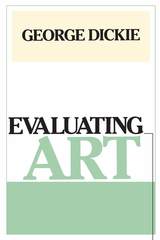 Evaluating Art
George Dickie
Temple University Press, 1989 "Those who think they know George Dickie's views should be sure to read this book. They are in for some interesting surprises. Of course, those unfamiliar with Dickie's views will also learn a lot."
--Anita Silvers, San Francisco State University
In this book George Dickie presents a theory about how to judge a work of art--as opposed to a theory that explains why a particular work is defined as art. Focusing mainly on the writings of Monroe Beardsley and critically examining the views of seven other philosophers and art critics--Paul Ziff, Frank Sibley, Nelson Goodman, Nicholas Wolterstorff, David Hume, Bruce Vermazen, and J. O. Urmson--Dickie synthesizes their insights to discover what can be derived from their theories. On this basis, he attempts to work out a theory of art evaluation--the first such book on this topic by a contemporary philosopher.
Initially, the author outlines all possible theories of art evaluation, assuming that traditional evaluative notions are used. He identifies seven theory-types that fall under four general headings: imitation value theory, objective intrinsic value theories, subjective intrinsic value theory, and instrumental value theories. Dickie then discusses the historical development of the theory of art evaluation, examining the ways in which eighteenth- and nineteenth-century philosophers treated representation and other cognitive dimensions of art as artistic values. His thorough analysis of the work of other contemporary theorists argues for a theory of art evaluation derived from various strands of thought.
Evaluating Science and Scientists
Mark S. Frankel
Central European University Press, 1997 The shift to a market economy in post-communist Eastern Europe has had a profound impact on science and scientists across the region, leading to reforms in research management practices and to drastic cuts in funding levels everywhere. Many countries are moving to a system of competitive research grants awarded on the basis of peer review. The introduction of peer review is not simply a technical matter. It signifies a fundamental change in the social structure of science, enhancing profession-al autonomy and giving working scientists a voice in the allocation of resources. This book combines first-hand accounts of the reform process with analyses of the strengths and weaknesses of both peer review and quantitative indicators.
Evaluating the Legacy of Robert W. Funk: Reforming the Scholarly Model
Andrew D. Scrimgeour
SBL Press, 2018 Enter the world of an academic trailblazer
Robert W. Funk, professor of New Testament, former Executive Secretary of the Society of Biblical Literature, and founder of Scholars Press and the Jesus Seminar, was one of the most gifted, controversial figures in modern biblical scholarship. The volume includes nineteen of his essays, correspondences, interviews, and administrative papers pertaining to the Society of Biblical Literature and Scholars Press. Colleagues introduce each section with reflections on the life and contributions of Funk.
Features:
- Evaluation of the changes to scholarly societies and to scholarly research that Funk advocated
- Exploration of the shift in the interpretation of Jesus’s parables initiated by Funk
- Previously unpublished writings
 Evaluating Welfare and Training Programs
Charles F. Manski
Harvard University Press, 1992 Almost everyone would like to see the enactment of sound, practical measures to help disadvantaged people get off welfare and find jobs at decent wages, and over the past quarter-century federal and state governments have struggled to develop just such programs. How do we know whether they are having the hoped-for effect? How do we know whether these vast outlays of money are helping the people they are designed to reach?
All welfare and training programs have been subject to professional evaluations, including social experiments and demonstrations designed to test new ideas. This book reviews what we have discovered from past assessments and suggests how welfare and training programs should be planned for the 1990s. The authors of this volume, each a recognized expert in the evaluation of social programs, do more than summarize what we have learned so far. They clarify why the issue of the proper conduct and interpretation of evaluations has itself been a subject of continuing controversy. In part, the problem is organizational, requiring the integrated efforts of social scientists, public officials, and the professionals who execute evaluations. In addition, there is a dispute about scientific method: should evaluators try to understand the complex social processes that make programs succeed (or fail), or should they focus on inputs and outputs, treating the programs themselves as “black boxes” whose machinery remains hidden?
Evaluating Welfare and Training Programs will be important for policy researchers and evaluation professionals, social scientists concerned with evaluation methods, public officials working in social policy, and students of public policy, economics, and social work.
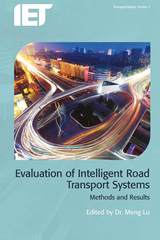 Evaluation of Intelligent Road Transport Systems: Methods and results
Meng Lu
The Institution of Engineering and Technology, 2016 Intelligent Transport Systems (ITS) use information and communications technologies (ICT) to deliver transport improvements instead of extending physical infrastructure, thereby saving money and reducing environmental impact. This book provides an overview of ICT-based intelligent road transport systems with an emphasis on evaluation methods and recent evaluation results of ITS development and deployment. Topics covered include: ITS evaluation policy; frameworks and methods for ITS evaluation; ITS impact evaluation; the network perspective; field operational tests (FOTs); assessing transport measures using cost-benefit and multicriteria analysis; technical assessment of the performance of in-vehicle systems; opportunities and challenges in the era of new pervasive technology; evaluation of automated driving functions; user-related evaluation of ADAS (Advanced Driver Assistance Systems) and automated driving; evaluation of traffic management; performance assessment of a wet weather pilot system; case studies from China; heavy vehicle overload control benefit and cost. With chapters from an international panel of leading experts, this book is essential reading for researchers and advanced students from academia, industry and government working in intelligent road transport systems.
Evaluation of Intelligent Road Transport Systems: Methods and results
Meng Lu
The Institution of Engineering and Technology, 2024 Intelligent transport systems (ITS) use ICT to deliver transport system improvements as an alternative to expanding physical infrastructure, thereby saving on investments and reducing environmental impact. ITS applications contribute to cleaner and safer transport, enhance economic growth, and hold the promise for sustainable mobility solutions for a future flourishing society.
Evaluative Research: Principles and Practice in Public Service and Social Action Progr
Edward Suchman
Russell Sage Foundation, 1968 Describes the techniques used to determine the extent to which social goals are being achieved, to locate the barriers to these goals, and to discover the unanticipated results of social actions. The book is divided into three main sections: the conceptual, methodological, and administrative aspects of evaluation.
Eva-Mary
Linda McCarriston
Northwestern University Press, 1994 Finalist, 1991 National Book Award for Poetry Winner, Terrence Des Pres Prize for Poetry "I lean into my own loving/touch, for which no wound/is too ugly,' Linda McCarriston says at the end of 'Healing the Mare,' one of the many poems of extraordinary poignancy and power in Eva-Mary. These unflinching poems of violence and violation and loss earn her the right to such a claim. It's a survivor's claim and these are the poems of a survivor, as scrupulous in their language and art as they are in their quest to register honestly the familial unspoken, a life inside a life." --Stephen Dunn
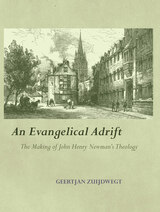 An Evangelical Adrift: The Making of John Henry Newman's Theology
Geertjan Zuijdwegt
Catholic University of America Press, 2022 An Evangelical Adrift is a theological biography of John Henry Newman (1801-1890) that reconstructs the most formative period in his development: the years between his teenage conversion to evangelicalism in 1816 and the beginning of the Tractarian Movement in 1833. By the early 1830s, Newman had explicitly rejected much of the theology he espoused in the late 1810s and early 1820s, and developed a highly original, deeply personal, and quite radical alternative, whose fundamental notions continued to shape his thought in later life. To date, there is neither a historically accurate nor a theologically sophisticated account of this change: the period in which it occurred is neglected, its significance is overlooked, its nature and content are misrepresented, and its scope is narrowed.
Besides being modelled on Newman’s own brief treatment of the period in his autobiographical Apologia pro vita sua (1864), later scholarly accounts are burdened by a persistent assumption that Newman’s catholic sensibility and anti-liberal convictions were constants throughout his life. This assumption was problematized by Frank Turner’s revisionist biography of the Anglican Newman (2002) and the ensuing debate about its reception. Zuijdwegt argues that Turner rightly identified evangelicalism as a key polemical target of the Anglican Newman, but stretched his argument too far by reducing Newman’s self-proclaimed lifelong battle against liberalism as a much later gloss on this earlier history.
The present study offers a compelling alternative to both mainline and revisionist interpretations. Based on detailed historical and theological analysis of the whole range of primary sources (including much neglected published and unpublished material), it meticulously reconstructs Newman’s youthful adoption of, gradual departure from, and theological alternative to evangelicalism. Against most mainline studies, it argues that this was a fundamental transformation, affecting nearly every aspect of Newman’s theology. Against Turner and other revisionists, it argues that this change was the product of careful and consistent theological reasoning and reflection, and that anti-liberalism was just as integral to it as anti-evangelicalism.
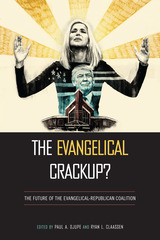 The Evangelical Crackup?: The Future of the Evangelical-Republican Coalition
Edited by Paul Djupe and Ryan L. Claassen
Temple University Press, 2019 Why did Donald Trump attract a record number of white evangelical voters without unified support—and despite nontrivial antipathy from evangelical leaders? The editors and leading scholars that contribute to the timely volume The Evangelical Crackup? answer this question and provide a comprehensive assessment of the status of evangelicals and the Christian Right in the Republican coalition.
The expected “crackup” with the Republican Party never happened. Each chapter in this cogent volume includes analyses of the 2016 election to explain why—and why that is critical. Chapters examine policy priorities, legal advocacy, and evangelical loyalty to the Republican Party; rhetoric, social networks, and evangelical elite influence; and the political implications of movements within evangelicalism, such as young evangelicals, Hispanics, and the Emergent Church movement.
Contributors include: Daniel Bennett, Mark Brockway, Ryan P. Burge, Brian R. Calfano, Jeremy Castle, Kimberly Conger, Daniel A. Cox, Kevin den Dulk, Sarah Allen Gershon, Tobin Grant, Robert P. Jones, Geoffrey Layman, Andrew R. Lewis, Ronald J. McGauvran, Joshua Mitchell, Juhem Navarro-Rivera, Jacob R. Neiheisel, Elizabeth Oldmixon, Adrian D. Pantoja, David Searcy, Anand Edward Sokhey, J. Benjamin Taylor, Robert Wuthnow, and the editors.
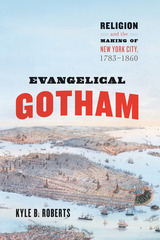 Evangelical Gotham: Religion and the Making of New York City, 1783-1860
Kyle B. Roberts
University of Chicago Press, 2016 At first glance, evangelical and Gotham seem like an odd pair. What does a movement of pious converts and reformers have to do with a city notoriously full of temptation and sin? More than you might think, says Kyle B. Roberts, who argues that religion must be considered alongside immigration, commerce, and real estate scarcity as one of the forces that shaped the New York City we know today.
In Evangelical Gotham, Roberts explores the role of the urban evangelical community in the development of New York between the American Revolution and the Civil War. As developers prepared to open new neighborhoods uptown, evangelicals stood ready to build meetinghouses. As the city’s financial center emerged and solidified, evangelicals capitalized on the resultant wealth, technology, and resources to expand their missionary and benevolent causes. When they began to feel that the city’s morals had degenerated, evangelicals turned to temperance, Sunday school, prayer meetings, antislavery causes, and urban missions to reform their neighbors. The result of these efforts was Evangelical Gotham—a complicated and contradictory world whose influence spread far beyond the shores of Manhattan.
Winner of the 2015 Dixon Ryan Fox Manuscript Prize from the New York State Historical Association
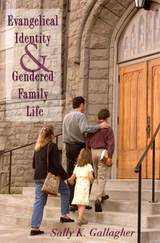 Evangelical Identity and Gendered Family Life
Gallagher, Sally K
Rutgers University Press, 2003 Evangelical Identity and Gendered Family Life provides a sociological and historical analysis of gender, family, and work among evangelical Protestants. In this innovative study, Sally Gallagher traces two lines of gender ideals—one of husbands’ authority and leadership, the other of mutuality and partnership in marriage—from the Puritans to the Promise Keepers into the lives of ordinary evangelicals today. Rather than simply reacting against or accommodating themselves to “secular society,” Gallagher argues that both traditional and egalitarian evangelicals draw on longstanding beliefs about gender, human nature, and the person of God.
The author bases her arguments on an analysis of evangelical family advice literature, data from a large national survey and personal interviews with over 300 evangelicals nationwide. No other work in this area draws on such a range of data and methodological resources. Evangelical Identity and Gendered Family Life establishes a standard for future research by locating the sources, strategies, and meaning of gender within evangelical Protestantism.
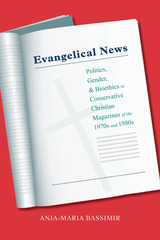 Evangelical News: Politics, Gender, and Bioethics in Conservative Christian Magazines of the 1970s and 1980s
Anja-Maria Bassimir
University of Alabama Press, 2022 A comprehensive study of evangelical magazine discourse during the 1970s and 1980s and how it navigated and sustained religious convictions in a time of dramatic social change
The 1970s and 1980s were a tumultuous period in US history. In tandem with a dramatic political shift to the right, evangelicalism also entered the public discourse as a distinct religious movement and was immediately besieged by cultural appropriations and internal fragmentations. Americans in general and evangelicals in particular grappled with issues and ideas such as feminism, abortion, birth control, and restructuring traditional roles for women and the family. During this time, there was a surge in readership for evangelical periodicals such as Christianity Today, Moody Monthly, Eternity, and Post-Americans/Sojourners as well as the feminist newsletter Daughters of Sarah.
While each of these magazines—and other publications and media—contributed to and participated in the overall dissemination of evangelical ideology, they also had their own outlooks and political leanings concerning hot-button issues. In Evangelical News: Politics, Gender, and Bioethics in Conservative Christian Magazines of the 1970s and 1980s, Anja-Maria Bassimir presents a nuanced view of evangelicalism in the late twentieth century through the lens of the movement’s own media.
Bassimir argues that community can be produced in discourse, especially when shared rhetoric, concepts, and perspectives signal belonging. To accomplish this, Evangelical News traces the emergence of evangelical social and political awareness in the 1970s to the height of its power as a political program. The chapters investigate such topics as how evangelicals reenvisioned gender norms and relations in light of the feminist movement, the use of childhood as a symbol of unspoiled innocence, and the place of evangelicals as political actors.
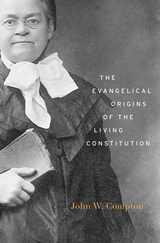 The Evangelical Origins of the Living Constitution
John W. Compton
Harvard University Press, 2014 The New Deal is often said to represent a sea change in American constitutional history, overturning a century of precedent to permit an expanded federal government, increased regulation of the economy, and eroded property protections. John Compton offers a surprising revision of this familiar narrative, showing that nineteenth-century evangelical Protestants, not New Deal reformers, paved the way for the most important constitutional developments of the twentieth century.
Following the great religious revivals of the early 1800s, American evangelicals embarked on a crusade to eradicate immorality from national life by destroying the property that made it possible. Their cause represented a direct challenge to founding-era legal protections of sinful practices such as slavery, lottery gambling, and buying and selling liquor. Although evangelicals urged the judiciary to bend the rules of constitutional adjudication on behalf of moral reform, antebellum judges usually resisted their overtures. But after the Civil War, American jurists increasingly acquiesced in the destruction of property on moral grounds.
In the early twentieth century, Oliver Wendell Holmes and other critics of laissez-faire constitutionalism used the judiciary’s acceptance of evangelical moral values to demonstrate that conceptions of property rights and federalism were fluid, socially constructed, and subject to modification by democratic majorities. The result was a progressive constitutional regime—rooted in evangelical Protestantism—that would hold sway for the rest of the twentieth century.
Evangelicalism: The Coming Generation
James Davison Hunter
University of Chicago Press, 1987 "Looking at what he calls 'The Coming Generation' of Evangelical opinion leaders and elites . . . Hunter draws a nuanced and finely detailed portrait of young Evangelicals who, while certainly more conservative than the mainstream of American Protestants, are at least ambivalent about some important aspects of fundamentalism and at most ready to repudiate elements of fundamentalist faith, politics, and practice. . . . With this book, James Hunter confirms his position as one of the most informed and informing writers on American Evangelicalism."—Samuel C. Heilman, This World
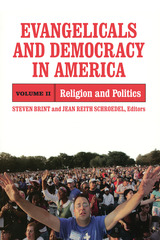 Evangelicals and Democracy in America: Religion and Politics
Steven G. Brint
Russell Sage Foundation, 2009 Separation of church and state is a bedrock principal of American democracy, and so, too, is active citizen engagement. Since evangelicals comprise one of the largest and most vocal voting blocs in the United States, tensions and questions naturally arise. In the two-volume Evangelicals and Democracy in America, editors Steven Brint and Jean Reith Schroedel have assembled an authoritative collection of studies of the evangelical movement in America. Religion and Politics, the second volume of the set, focuses on the role of religious conservatives in party politics, the rhetoric evangelicals use to mobilize politically, and what the history of the evangelical movement reveals about where it may be going. Part I of Religion and Politics explores the role of evangelicals in electoral politics. Contributor Pippa Norris looks at evangelicals around the globe and finds that religiosity is a strong predictor of ideological leanings in industrialized countries. But the United States remains one of only a handful of post-industrial societies where religion plays a significant role in partisan politics. Other chapters look at voting trends, especially the growing number of higher-income evangelicals among Republican ranks, how voting is influenced both by "values" and race, and the management of the symbols and networks behind the electoral system of moral-values politics. Part II of the volume focuses on the mobilizing rhetoric of the Christian Right. Nathaniel Klemp and Stephen Macedo show how the rhetorical strategies of the Christian Right create powerful mobilizing narratives, but frequently fail to build broad enough coalitions to prevail in the pluralistic marketplace of ideas. Part III analyzes the cycles and evolution of the Christian Right. Kimberly Conger looks at the specific circumstances that have allowed evangelicals to become dominant in some Republican state party committees but not in others. D. Michael Lindsay examines the "elastic orthodoxy" that has allowed evangelicals to evolve into a formidable social and political force. The final chapter by Clyde Wilcox presents a new framework for understanding the relationship between the Christian Right and the GOP based on the ecological metaphor of co-evolution. With its companion volume on religion and society, this second volume of Evangelicals and Democracy in America offers the most complete examination yet of the social circumstances and political influence of the millions of Americans who are white evangelical Protestants. Understanding their history and prospects for the future is essential to forming a comprehensive picture of America today.
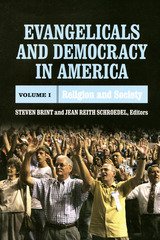 Evangelicals and Democracy in America: Religion and Society
Steven G. Brint
Russell Sage Foundation, 2009 By the end of the nineteenth century, the vast majority of U.S. churches were evangelical in outlook and practice. America's turn toward modernism and embrace of science in the early twentieth century threatened evangelicalism's cultural prominence. But as confidence in modern secularism wavered in the 1960s and 1970s, evangelicalism had another great awakening. The two volumes of Evangelicals and Democracy in America trace the development and current role of evangelicalism in American social and political life. Volume I focuses on who evangelicals are today, how they relate to other groups, and what role they play in U.S. social institutions. Part I of Religion and Society examines evangelicals' identity and activism. Contributor Robert Wuthnow explores the identity built around the centrality of Jesus, church and community service, and the born-again experience. Philip Gorski explores the features of American evangelicalism and society that explain the recurring mobilization of conservative Protestants in American history. Part II looks at how evangelicals relate to other key groups in American society. Individual chapters delve into evangelicals' relationship to other conservative religious groups, women and gays, African Americans, and mainline Protestants. These chapters show sources of both solidarity and dissension within the "traditionalist alliance" and the hidden strengths of mainline Protestants' moral discourse. Part III examines religious conservatives' influence on American social institutions outside of politics. W. Bradford Wilcox, David Sikkink, Gabriel Rossman, and Rogers Smith investigate evangelicals' influence on families, schools, popular culture, and the courts, respectively. What emerges is a picture of American society as a consumer marketplace with a secular legal structure and an arena of pluralistic competition interpreting what constitutes the public good. These chapters show that religious conservatives have been shaped by these realities more than they have been able to shape them. Evangelicals and Democracy in America, Volume I is one of the most comprehensive examinations ever of this important current in American life and serves as a corrective to erroneous popular representations. These meticulously balanced studies not only clarify the religious and social origins of evangelical mobilization, but also detail both the scope and limits of evangelicals' influence in our society. This volume is the perfect complement to its companion in this landmark series, Evangelicals and Democracy in America, Volume II: Religion and Politics.
 Evangelicals Incorporated: Books and the Business of Religion in America
Daniel Vaca
Harvard University Press, 2019 A new history explores the commercial heart of evangelical Christianity.
American evangelicalism is big business. For decades, the world’s largest media conglomerates have sought out evangelical consumers, and evangelical books have regularly become international best sellers. In the early 2000s, Rick Warren’s The Purpose Driven Life spent ninety weeks on the New York Times Best Sellers list and sold more than thirty million copies. But why have evangelicals achieved such remarkable commercial success?
According to Daniel Vaca, evangelicalism depends upon commercialism. Tracing the once-humble evangelical book industry’s emergence as a lucrative center of the US book trade, Vaca argues that evangelical Christianity became religiously and politically prominent through business activity. Through areas of commerce such as branding, retailing, marketing, and finance, for-profit media companies have capitalized on the expansive potential of evangelicalism for more than a century.
Rather than treat evangelicalism as a type of conservative Protestantism that market forces have commodified and corrupted, Vaca argues that evangelicalism is an expressly commercial religion. Although religious traditions seem to incorporate people who embrace distinct theological ideas and beliefs, Vaca shows, members of contemporary consumer society often participate in religious cultures by engaging commercial products and corporations. By examining the history of companies and corporate conglomerates that have produced and distributed best-selling religious books, bibles, and more, Vaca not only illustrates how evangelical ideas, identities, and alliances have developed through commercial activity but also reveals how the production of evangelical identity became a component of modern capitalism.
Evangelizing Korean Women and Gender in the Early Modern World: The Power of Body and Text
Susan Broomhall
Arc Humanities Press, 2023 This monograph examines how Korean women and men came to engage with Catholic missions during Europe’s late sixteenth and seventeenth centuries, a profoundly volatile period in East Asian history during which political, cultural, and social disruption created opportunities for new interactions in the region. It analyzes the nature of that engagement, as women and men became both subjects for, and agents of, catechizing practices. As their evangelization, experience of faith, proselytizing, and suffering were recorded in mission archives, the monograph explores contact between Catholic Christianity and Korean women in particular. Broomhall demonstrates how gender ideologies shaped interactions between missionary men and Korean women, and how women’s experiences would come to be narrated, circulated, and memorialized.
 Evans Carlson, Marine Raider: The Man Who Commanded America's First Special Forces
Duane Schultz
Westholme Publishing, 2014 On August 17, 1942, ten days after American marines had stormed Guadalcanal in the Solomon Islands, two U.S. submarines secretly delivered a small force from the newly formed 2nd Marine Raider Battalion to Japanese-occupied Makin Island one thousand miles to the north. The raid was intended to gather intelligence and divert attention from the main American attack to the south. News of the success of this special operation took hold of the American imagination and provided a much needed boost to morale. The battalion’s leader was Evans Carlson, a forty-six-year-old career marine office who had most recently served in China as a military observer. Carlson was also a friend of President Franklin D. Roosevelt and he had proposed to him the creation of a small elite raider force similar to the British Commandos. Having accompanied Chinese guerrillas in their war against Japan, Carlson incorporated some of their tactics into his raider training, including a method of esprit de corps called “gung ho,” a word still used today for loyal enthusiasm. Carlson’s raiders went on to conduct a lengthy operation behind enemy lines in Guadalcanal, contributing to the American victory. After months of exertion, Carlson fell ill and returned stateside. Despite his notoriety and willingness to return to the front, this decorated officer would never command again.
In Evans Carlson, Marine Raider: The Man Who Commanded America’s First Special Forces, psychologist and acclaimed history writer Duane Schultz presents a fascinating and absorbing portrait of this complex officer. Son of a Congregational preacher, Carlson left home at an early age, and when he was just seventeen, the tall, lanky underage teenager bluffed his way into the army. He began his eventful military career against Pancho Villa, and continued through World War I and the unrest in Central America and in China. Despite Carlson’s personal bravery, loyalty, and long service, Schultz reveals that his active career was cut short by the Marine command who were envious of the attention he and his men received from the press and public; foreshadowing the paranoia of the McCarthy era, he was also rumored to be a communist. His raiders remained staunchly loyal to their former commander, and when he died in 1947, they ensured he would be buried in Arlington National Cemetery. Famed army and political cartoonist Bill Mauldin said, “There were only two brass hats whom ordinary GIs respected: Dwight Eisenhower and Evans Carlson.” This is Carlson’s story.
 Eve
Charles Peguy
St. Augustine's Press, 2024 Charles Peguy (1873–1914) is a French poet and essayist, whom Pierre Manent refers to as "one of the most penetrating critics of the historical and sociological points of view which dominate modern consciousness." Praised by T.S. Eliot and Geoffrey Hill, among many others, Peguy's contemporary influence and importance has increased despite the infrequency with which readers find his work translated into English. As Roger Kimball remarks, Peguy was certainly "a creature of his time…[but] also a writer whose insights continue to resonate today" largely in part to Peguy's confrontation of modern hubris and his "rootedness in lived experience."
Kathleen Curran Sweeney provides the English reader with a much needed translation of Peguy's long poem, Eve, first published in 1914. Considering Peguy's length and depth in Eve and its syllabic poetic meter, this is not an easy undertaking. Yet Sweeney manages to convey an authentic Peguy in English and at last provides access to Christ's discourse with Eve, an epic encounter that conveys literary genius enthralled with memory, charity, and the transformation of this contemplation in light of the theological perspective of the Incarnation and the redemption of man by God.
Eve of the Festival: Making Myth in Odyssey 19
Olga Levaniouk
Harvard University Press, 2011 Eve of the Festival is a study of Homeric myth-making in the first and longest dialogue of Penelope and Odysseus (Odyssey 19). This study makes a case for seeing virtuoso myth-making as an essential part of this conversation, a register of communication important for the interaction between the two speakers. At the core of the book is a detailed examination of several myths in the dialogue in an attempt to understand what is being said and how. The dialogue as a whole is interpreted as an exchange of performances that have the eve of Apollo’s festival as their occasion and that amount to activating, and even enacting, the myth corresponding within the Odyssey to the ritual event of the festival.
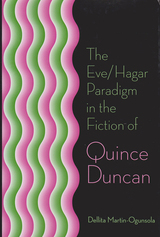 The Eve/Hagar Paradigm in the Fiction of Quince Duncan
Dellite Martin-Ogunsola
University of Missouri Press, 2004
Born in Costa Rica in 1940, Quince Duncan has penned an impressive body of work, including novels, short stories, essays, and literary and cultural criticism. Despite his reputation as Costa Rica’s leading novelist, Duncan remains one of the least studied writers. Dellita Martin-Ogunsola seeks to remedy this inequity with The Eve/Hagar Paradigm in the Fiction of Quince Duncan.
In this first book-length study in English devoted to Duncan’s work, Martin-Ogunsola explores the issues of race, class, and gender in five of Duncan’s major works published during the 1970s. Focusing primarily on the roles of women, Martin-Ogunsola uses the figures of Eve and the Egyptian slave Hagar to provide, through metaphor, an in-depth analysis of the female characters portrayed in Duncan’s prose. Specifically, the Eve/Hagar paradigm is employed to examine how the essential characteristics of femininity play out in the context of ethnicity and caste. The book begins with Dawn Song (1970), the story of Antillean immigrants struggling with migration, oppression, and resistance while adapting to a new environment, and continues through Dead-End Street (1979), a novel exploring the ramifications of the myth, perpetrated through history, that defines Costa Rica in terms of Euro-Hispanic culture.
Martin-Ogunsola illustrates Duncan’s use of a female presence that challenges the traditional treatment of women in literature. Spanning the period between the initial settlement of the Atlantic region of Costa Rica during the early years of the twentieth century to the 1948 Costa Rican Civil War, Martin-Ogunsola’s book invites the reader to view the world through the eyes of Duncan’s female characters.
TheEve/Hagar Paradigmin the Fiction of Quince Duncan examines some of the most compelling issues of contemporary Latin American literature and illustrates how a prominent Costa Rican writer deconstructs the stereotype of woman as wife/lover/slave. In the process, Duncan finds his own voice. Exposing aspects of Costa Rican society that have historically been kept in the shadows, this volume makes a significant contribution to our knowledge of the Latin American literary canon.
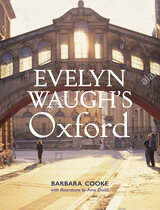 Evelyn Waugh's Oxford
Barbara Cooke
Bodleian Library Publishing, 2018 Evelyn Waugh’s Oxford years were so formative that the city never left him, appearing again and again in his novels in various forms. This book explores in rich visual detail the abiding importance of Oxford as both location and experience in Waugh’s works. Drawing on specially commissioned illustrations and previously unpublished photographic material, it provides a critically robust assessment of the author’s engagement with Oxford over the course of his literary career.
Following a brief overview of Waugh’s life and work, subsequent chapters examine the prose and graphic art Waugh produced as an undergraduate, together with his portrayal of Oxford in Brideshead Revisited and his memoir, A Little Learning. A specially commissioned, hand-drawn trail around Evelyn Waugh’s Oxford guides the reader around the city Waugh knew and loved through such iconic locations as the Botanic Garden, the Oxford Union, and the Chequers.
A unique literary biography, this book brings to life Waugh’s Oxford, exploring the lasting impression it made on one of the most accomplished literary craftsmen of the twentieth century.
 An Even Better Way to Zone: Achieving More Affordable, Equitable, and Sustainable Communities
Don Elliott
Island Press, 2025 Zoning is the tool that everyone loves to hate. It may also be the most important and least understood process affecting how US communities shape the lives of their residents. While almost every community comprehensive plan calls for more affordable, equitable, and sustainable development, zoning is often blamed for preventing that from happening. As US communities face an unprecedented housing affordability crisis, a long history of excluding the poor and disadvantaged from key opportunities, and a continuing climate disaster, zoning needs to change – a lot.
In An Even Better Way to Zone, planning expert Donald L. Elliott explains how outdated assumptions about development and unnecessary barriers in our current zoning regulations have contributed to development patterns that are not sustainable, affordable, or equitable to historically disadvantaged populations. It identifies what types of changes to zoning rules, procedures, and maps could improve outcomes in each of those areas. Importantly, it also helps the reader think through what to do when zoning changes that would improve outcomes for one of those challenges would undermine success in the others.
An Even Better Way to Zone also reorients the zoning discussion towards redevelopment and reuse rather than implicitly focusing on raw land development, because already developed areas represent the vast majority of the built environment where meaningful changes will need to be made. Instead of giving lip service to the importance of infill and reuse, zoning needs to actively remove the barriers that prevent innovative, equitable, and sustainable redevelopment.
With engaging, easy-to-understand prose, Elliott briefly explains the challenges of today’s zoning and then breaks down how this key legal tool can be used to reinvent our communities as places where housing is more affordable, everyone is treated fairly, and we do far less damage to the environment. From fixing zoning rules and incentives to fixing the procedures used to draft, implement, and change zoning, Elliott provides practical, sage advice on adapting zoning to address today’s most critical issues.
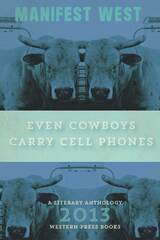 Even Cowboys Carry Cell Phones
Teresa Milbrodt
University Press of Colorado, 2013 Like any legendary figure, the cowboy is part myth and part reality, memorialized by history and Hollywood, envied by those who spend days at desks and dream of trading swivel chairs for saddles. The writings in this anthology serve as testament to the cultural love, bordering on obsession, of the American cowboy. These works cover the gamut, from the romanticized movie cowboy to ranchers, freelancers, and contemporary wranglers who wear hoodies and work in massive feedlot pens. The cowboy that emerges from this collection is multifaceted, as the book juxtaposes cowboys spraying longhorns at a car wash to cowboys advertising services on Craigslist and Pepsi-drinking cowboys riding Amtrak trains. There are portraits of the old cowboys, crotchety coffee-swigging men with too many stories about how things were better four decades ago. However, the figure remains one constructed of loyalties—loyalty to work, loyalty to family, loyalty to animals, loyalty to the land. The image of the cowboy is vivid in our imagination, insperable from Western mythology, a means to connect ourselves with the wild and rugged individuals we dream we used to be. In this age of computers and cubicles we want to touch and preserve that history, but we must allow for shifting traditions. As the thirty-five authors in this collection will remind you, even cowboys carry cell phones.
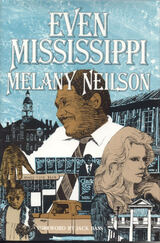 Even Mississippi
Melany Neilson
University of Alabama Press, 1989 Even Mississippi is a well-crafted and engaging account that is not only good reading but also a penetrating commentary on several social, political, and historical themes. This is the story of Robert Clark’s two unsuccessful campaigns for a Congressional seat, in 1982 and 1984, and is written by the young woman who served as the only white staff member during the first campaign and one of a few whites during the second. Using the campaign as a starting point, the author takes us on a journey into the Mississippi Delta, where the progress of the last two decades has eluded America’s truly forgotten poor, where blacks like Clark move from cotton rows to politics as they work toward a new way of life. Describing the isolation of a small town, Neilson recounts how the acculturation process worked in Mississippi and how it effectively molded blacks and whites. Even Mississippi is the story of a girl, a family, struggling with two powerful worlds, one dying and the other in the process of birth. Ole Miss, manners, and morals aside, there is something here that measure the heartbeat of what we once called “the South.” There are the genteel people and the plain folk, juke joints and Garden clubs, continuity and change, love and hate the good times and the bad. But it is Ed Tye, the author’s father, who is the personification of the struggle with the past that eventually loses out to the forces of change. Both black and white readers will appreciate his dilemma, his sense of loyalty, and his attachment to his family.
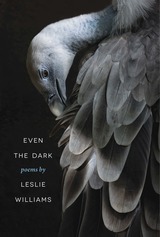 Even the Dark
Leslie Williams
Southern Illinois University Press, 2019 The speaker in this collection seeks an understanding of the darkness of suicide and mortal illness in the light of Christian faith. Poet Leslie Williams captures this light in tender and piercing poems that traverse a grieving world where healing is always possible but never assured: “my God can do this, but my God / might not.”
Through restless questioning, the speaker finds a balm for suffering in the divine beauty and mystery of the natural world. Seven prose poems woven into the collection deal with different aspects of a young girl’s life-threatening illness. Five additional poems wrestle with the grief of suicide and the emptiness afflicting those left behind. Other poems in the collection reflect on how to approach daily life while coping with heartbreak and express wonder about our responsibilities in a variety of roles: as parents, as neighbors, as an imagined anchoress, as children of God.
The language remains beautiful and precise throughout, whether the speaker lies “in a gully cracked / with stars” or tells herself, “It’s a handmade raft I live on.” The speaker entreats, as in Psalm 27, “teach me how to live.” Dwelling attentively in the abundance and mystery of creation, the book aims to offer a comfort and peace that might “even the dark.”
Even the Least of These
Anita Skeen
Michigan State University Press, 2024 Even the Least of These is a collaboration between two talented friends—award-winning poet Anita Skeen and renown printmaker Laura B. DeLind. Seeking to navigate the isolation and uncertainty of the covid-19 pandemic, they challenged each other’s ability to see the small things often neglected and unnoticed. The result is a thoughtful and often joyful collection of poetry and prints that celebrate an awareness of the world around us and reflect on past experiences, lessons learned (or not). This collaboration includes a collection of prints that evoke the feeling of the poems, ranging from humorous to heart-rendering.
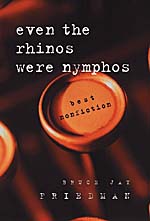 Even the Rhinos Were Nymphos: Best Nonfiction
Bruce Jay Friedman
University of Chicago Press, 2000 A few years ago, Christopher Buckley wrote of Bruce Jay Friedman in the New York Times Book Review that he "has been likened to everyone from J. D. Salinger to Woody Allen," but that "he is: Bruce Jay Friedman, sui generis, and no mean thing. No further comparisons are necessary." We are happy to report that he remains the same Bruce Jay Friedman in his unique, unblinking, and slightly tilted essays—collected here for the first time—in Even the Rhinos Were Nymphos.
A butler school in Houston, a livestock auction in Little Rock, a home for "frozen guys" in California, JFK's humidor in Manhattan—all are jumping off points for Friedman's baleful and sharply satirical scrutiny of American life and behavior in the second half of the twentieth century. Travel with Friedman from Harlem to Hollywood, from Port-au-Prince to Etta's Eat Shop in Chicago. In these pieces, which were published in literary and mass-circulation magazines from the 1960s to the 1990s, you'll meet such luminaries as Castro and Clinton, Natalie Wood and Clint Eastwood, and even Friedman's friends Irwin Shaw, Nelson Algren, and Mario Puzo. Friedman is a master of the essay, whether the subject is crime reporting ("Lessons of the Street"), Hollywood shenanigans ("My Life among the Stars"), or his outrageous adventures as the editor of pulp magazines (the classic "Even the Rhinos Were Nymphos"). We could sing his praises as a journalist, humorist, and social critic. But, as Buckley tells us, being Bruce Jay Friedman is enough.
Bruce Jay Friedman is the author of seven novels (including The Dick, Stern, and A Mother's Kisses), four collections of short stories, four full-length plays (including Scuba Duba and Steambath), and the screenplays for the movies Splash and Stir Crazy.
Even Then: Poems
Michael Wurster
University of Pittsburgh Press, 2019 A new collection of poetry from a founding member of the Pittsburgh Poetry Exchange.
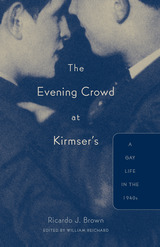 Evening Crowd at Kirmser’s: A Gay Life In The 1940S
Ricardo J. Brown
University of Minnesota Press, 2003 A surprising and vivid remembrance of gay life in the wake of World War II It is often difficult to imagine gay gathering places in the decades before the Stonewall riots of the 1960s, and nearly impossible to think of such communities outside the nation’s largest cities. Yet such places did exist, and their histories tell amazing stories of survival and the struggle for acceptance and self-respect. Kirmser’s was such a place. In the 1940s, this bar in downtown St. Paul was popular with blue-collar customers during the day, then became an unofficial home to working-class gay men and lesbians at night. After Ricardo J. Brown was discharged from the navy for revealing his sexual orientation in 1945, he returned home to Minnesota and discovered in Kirmser’s a space where he could develop his new self-awareness and fulfill his desire to find people like himself. The Evening Crowd at Kirmser’s is Brown’s compelling memoir of his experiences as a young gay man in St. Paul. In an engaging and open writing style, and through stories both humorous and tragic, Brown introduces us to his family, companions, and friends, such as Flaming Youth, a homely, sardonic man who carried the nickname from his youth ironically into middle age; Dale, who suddenly loses his job of six years after an anonymous note informed his employer that he was gay; and Bud York, an attractive and confident man with a fondness for young boys.
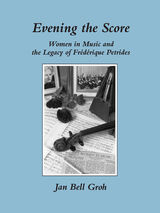 Evening the Score: Women in Music and the Legacy of Frédérique Petrides
Jan Bell Groh
University of Arkansas Press, 1994 Despite the suffragist activities of the 1920s and the heightened pressures brought to bear on traditionally “male-only” institutions in American society during the past three decades, many vocations remain sanctuaries of male dominance. One such area is the classical music world; though, as Jan Bell Groh asserts in Evening the Score, inroads into this field have bene made, sometimes at great cost. At the center of this work is a unique set of newsletters edited and published by Frédérique Petrides, one of America’s first and most influential female conductors. In Petride’s time, most women musicians were forced to ply their trade in all-female orchestras; through the thirty-seven issues of Women in Music published from 1935 to 1940, the achievements of these musicians were championed, and the prejudices, misconceptions, and deliberately discriminatory policies of many of their male counterparts were exposed and condemned. Evening the Score is an ambitious endeavor that seeks not only to preserve these early documents and explain them within the context of the 1930s music industry but also to garner for Petrides the long-overdue praise to which she is entitled. It is at once a celebration and a source of inspiration.
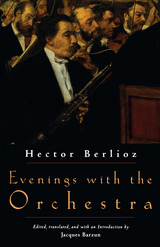 Evenings with the Orchestra
Hector Berlioz
University of Chicago Press, 1999 During the performances of fashionable operas in an unidentified but "civilized" town in northern Europe, the musicians (with the exception of the conscientious bass drummer) tell tales, read stories, and exchange gossip to relieve the tedium of the bad music they are paid to perform. In this delightful and now classic narrative written by the brilliant composer and critic Hector Berlioz, we are privy to twenty-five highly entertaining evenings with a fascinating group of distracted performers. As we near the two-hundredth anniversary of Berlioz's birth, Jacques Barzun's pitch-perfect translation of Evenings with the Orchestra —with a new foreword by Berlioz scholar Peter Bloom—testifies to the enduring pleasure found in this most witty and amusing book.
"[F]ull of knowledge, penetration, good sense, individual wit, stock humor, justifiable exasperation, understanding exaggeration, emotion and rhetoric of every kind."—Randall Jarrell, New York Times Book Review
"To succeed in [writing these tales], as Berlioz most brilliantly does, requires a combination of qualities which is very rare, the many-faceted curiosity of the dramatist with the aggressively personal vision of the lyric poet."—W. H. Auden, The Griffin
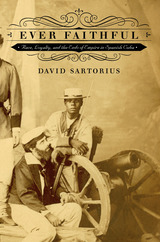 Ever Faithful: Race, Loyalty, and the Ends of Empire in Spanish Cuba
David Sartorius
Duke University Press, 2013 Known for much of the nineteenth century as "the ever-faithful isle," Cuba did not earn its independence from Spain until 1898, long after most American colonies had achieved emancipation from European rule. In this groundbreaking history, David Sartorius explores the relationship between political allegiance and race in nineteenth-century Cuba. Challenging assumptions that loyalty to the Spanish empire was the exclusive province of the white Cuban elite, he examines the free and enslaved people of African descent who actively supported colonialism. By claiming loyalty, many black and mulatto Cubans attained some degree of social mobility, legal freedom, and political inclusion in a world where hierarchy and inequality were the fundamental lineaments of colonial subjectivity. Sartorius explores Cuba's battlefields, plantations, and meeting halls to consider the goals and limits of loyalty. In the process, he makes a bold call for fresh perspectives on imperial ideologies of race and on the rich political history of the African diaspora.
Ever Green Is...: Selected Prose
Pavel Vilikovsky
Northwestern University Press, 2002 Hailed as one of the most important Eastern European writers of the post-Communist era, Pavel Vilikovsky actually began his career in 1965. But the political content of his writing and its straightforward treatment of such taboo topics as bisexuality kept him from publishing the works collected here until after the Velvet Revolution.
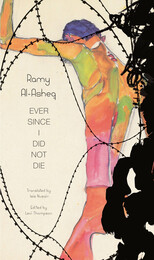 Ever Since I Did Not Die
Ramy Al-Asheq
Seagull Books, 2021 Through seventeen powerful testimonies, Syrian-Palestinian poet Ramy Al-Asheq's Ever SInce I Did Not Die is a poignant autobiographical journey that vividly depicts what it means to live through war.
The texts gathered in Ever Since I Did Not Die by Syrian-Palestinian poet Ramy Al-Asheq are a poignant record of a fateful journey. Having grown up in a refugee camp in Damascus, Al-Asheq was imprisoned and persecuted by the regime in 2011 during the Syrian Revolution. He was released from jail, only to be recaptured and imprisoned in Jordan. After escaping from prison, he spent two years in Jordan under a fake name and passport, during which he won a literary fellowship that allowed him to travel to Germany in 2014, where he now lives and writes in exile.
Through seventeen powerful testimonies, Ever Since I Did Not Die vividly depicts what it means to live through war. Exquisitely weaving the past with the present and fond memories with brutal realities, this volume celebrates resistance through words that refuse to surrender and continue to create beauty amidst destruction—one of the most potent ways to survive in the darkest of hours.
 Ever the Winds of Chance: POEMS
Carl Sandburg
University of Illinois Press, 1983 Now published for the first time, Ever the Winds of Chance is Sandburg's evocative sequel to Always the Young Strangers (1953), "the best autobiography ever written by an American" (Robert E. Sherwood, New York Times). Though left unfinished at his death, the sequel provides a wry, nostalgic chronicle of Sandburg's college years and early adulthood, a restless decade for a young man still in quest of his calling.
Ever the Winds of Chance opens in 1898 when the twenty-year-old Sandburg, recently returned from the Spanish-American war, enrolls at Lombard College in his native Galesburg, Illinois. Sandburg writes about his job at the fire station; his teachers, inspired or otherwise; his classmates and their camaraderie; his observations on great literary works and writers; and his own writings for the school newspaper, literary review, and yearbook and for the Galesburg Mail. But he also includes much about life between school years and after college, recounting his various brief careers as a fireman, salesman of stereoscopic views, advertising copywriter, vagabond, "jailbird," and budding poet and socialist. Together these reminiscences provide an intimate look at the formative years of a preeminent figure in American letters.
Ever Yours, Florence Nightingale: Selected Letters
Florence Nightingale
Harvard University Press, 1990 For many, Florence Nightingale is the most famous woman of her day, second only perhaps to Queen Victoria. Celebrated and beloved by the public and her friends, considered an irritant by politicians and bureaucrats, the great reformer remains a figure of considerable controversy. In this full 'life in letters' we see her at first hand. Martha Vicinus and Bea Nergaard weave together a narrative account and a selection of her letters in such a way as to create--in Nightingale's own words--a fascinating portrayal of the woman, her career, and her concerns.
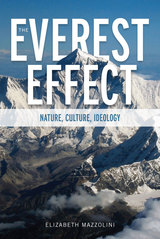 The Everest Effect: Nature, Culture, Ideology
Elizabeth Mazzolini
University of Alabama Press, 2015 The Everest Effect is an accessibly written cultural history of how nature, technology, and culture have worked together to turn Mount Everest into a powerful and ubiquitous physical measure of Western values. In The Everest Effect Elizabeth Mazzolini traces a series of ideological shifts in the status of Mount Everest in Western culture over the past century to the present day and links these shifts to technologies used in climbs. By highlighting the intersections of technology and cultural ideologies at this site of environmental extremity, she shows both how nature is shaped—physically and symbolically—by cultural values and how extreme natural phenomena shape culture. Nostalgia, myth, and legend are intrinsic features of the conversations that surround discussions of historic and contemporary climbs of Everest, and those conversations themselves reflect changing relations between nature, technology, and ideology. Each of the book’s chapters links a particular value with a particular technology to show how technology is implicated in Mount Everest’s cultural standing and commodification: authenticity is linked with supplemental oxygen; utility with portable foodstuffs; individuality with communication technology; extremity with visual technology; and ability with money. These technologies, Mazzolini argues, are persuasive—and increasingly so as they work more quickly and with more intimacy on our bodies and in our daily lives. As Mazzolini argues, the ideologies that situate Mount Everest in Western culture today are not debased and descended from a more noble time; rather, the material of the mountain and its surroundings and the technologies deployed to encounter it all work more immediately with the bodies and minds of actual and “armchair” mountaineers than ever before. By moving the analysis of a natural site and phenomenon away from the traditional labor of production and toward the symbolic labor of affective attachment, The Everest Effect shows that the body and nature have helped constitute the capitalization that is usually characterized as taking over Everest.
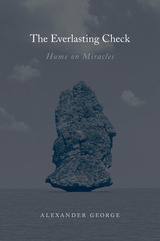 The Everlasting Check: Hume on Miracles
Alexander George
Harvard University Press, 2016 A touchstone of the Enlightenment dispute between rationality and religious belief, David Hume’s essay “Of Miracles” has elicited much commentary from proponents and critics ever since it was published over 250 years ago. Alexander George’s lucid and sustained interpretation of Hume’s essay provides fresh insights into this provocative, occasionally elusive, and always subtle text. The Everlasting Check will be read with interest by both students new to Hume and seasoned scholars.
George does justice to the letter and spirit of Hume’s essay, explaining the concepts and claims involved, making intelligible the essay’s structure, and clarifying remarks that have long puzzled readers. Properly interpreted, the essay’s central philosophical argument proves to be much hardier than Hume’s detractors suggest. George considers a range of objections to Hume—some recent, some perennial—and shows why most fail, either because they are based on misinterpretations or because the larger body of Hume’s philosophy answers them.
Beyond an analysis and defense of Hume’s essay, George also offers a critique of his own, appealing to Ludwig Wittgenstein’s thoughts on magic and ritual to demonstrate that Hume misconstrues the character of religious belief and its relationship to evidence and confirmation. Raising a host of important questions about the connection between religious and empirically verified beliefs, George discusses why Hume’s master argument can fail to engage with committed religious thought and why philosophical argumentation in general often proves ineffective in shaking people’s deeply held beliefs.
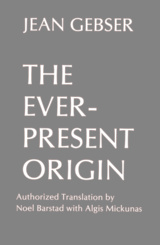 The Ever-Present Origin: Part One: Foundations Of The Aperspectival World
Jean Gebser
Ohio University Press, 1986 This English translation of Gebser’s major work, Ursprung und Gegenwart (Stuttgart, Deutsche Verlag, 1966), offers certain fundamental insights which should be beneficial to any sensitive scientist and makes it available to the English-speaking world for the recognition it deserves. “The path which led Gebser to his new and universal perception of the world is, briefly, as follows. In the wake of materialism and social change, man had been described in the early years of our century as the “dead end” of nature. Freud had redefined culture as illness—a result of drive sublimation; Klages had called the spirit (and he was surely speaking of the hypertrophied intellect) the “adversary of the soul,” propounding a return to a life like that of the Pelasgi, the aboriginal inhabitants of Greece; and Spengler had declared the “Demise of the West” during the years following World War I. The consequences of such pessimism continued to proliferate long after its foundations had been superseded. It was with these foundations—the natural sciences—that Gebser began. As early as Planck it was known that matter was not at all what materialists had believed it to be, and since 1943 Gebser has repeatedly emphasized that the so-called crisis of Western culture was in fact an essential restructuration.… Gebser has noted two results that are of particular significance: first, the abandonment of materialistic determinism, of a one-sided mechanistic-causal mode of thought; and second, a manifest “urgency of attempts to discover a universal way of observing things, and to overcome the inner division of contemporary man who, as a result of his one-sided rational orientation, thinks only in dualisms.” Against this background of recent discoveries and conclusions in the natural sciences Gebser discerned the outlines of a potential human universality. He also sensed the necessity to go beyond the confines of this first treatise so as to include the humanities (such as political economics and sociology) as well as the arts in a discussion along similar lines. This was the point of departure of The Ever-Present Origin. From In memoriam Jean Gebser by Jean Keckeis
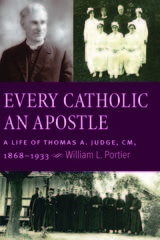 Every Catholic An Apostle: A Life of Thomas A. Judge, CM, 1868-1933
William L. Portier
Catholic University of America Press, 2017 Born in Boston of immigrant parents, Thomas A. Judge, CM (1868-1933) preached up and down the east coast on the Vincentian mission band between 1903 and 1915. Disturbed by the “leakage” of the immigrant poor from the church, he enlisted and organized lay women he met on the missions to work for the “preservation of the faith,” his watchword. His work grew apace with, and in some ways anticipated, the growing body of papal teaching on the lay apostolate. When he became superior of the godforsaken Vincentian Alabama mission in 1915, he invited the lay apostles to come south to help. “This is the layman’s hour,” he wrote in 1919. By then, however, many of his lay apostles had evolved in the direction of vowed communal life. This pioneer of the lay apostle founded two religious communities, one of women and one of men. With the indispensable help of his co-founder, Mother Boniface Keasey, he spent the last decade of his life trying to gain canonical approval for these groups, organizing them, and helping them learn “to train the work-a-day man and woman into an apostle, to cause each to be alert to the interests of the Church, to be the Church.” The roaring twenties saw the work expanded beyond the Alabama missions as far as Puerto Rico, which Judge viewed as a gateway to Latin America. The Great Depression ended this expansive mood and time and put agonizing pressure on Judge, his disciples, and their work. In 1932, the year before Judge’s death, the apostolic delegate, upon being appraised of Judge’s financial straits, described his work as “the only organized movement of its kind in the Church today that so completely meets the wishes of the Holy Father with reference to the Lay Apostolate.”
 Every Child a Wanted Child: Clarence James Gamble, M.D., and His Work in the Birth Control Movement
Doone Williams and Greer Williams; edited by Emily P. Flint
Harvard University Press, 1978 A pioneer in the birth control movement both in the United States and abroad, Dr. Clarence J. Gamble began his work as a volunteer in Philadelphia in 1929. Because he was convinced that the health and happiness of women and children and, in fact, entire families depended on adequate spacing of their babies, he helped to establish family planning clinics in a dozen American cities before he was forty years old.
Dr. Gamble's major concern was to provide a safe, reliable, and cheap contraceptive that poor women who had no access to running water or modern conveniences could use. After World War II and the population explosion that followed it, Dr. Gamble expanded his efforts in what he called the Great Cause to help those in the developing nations who wanted their people to be able to choose when to have children and how many to have.
Every Child a Wanted Child is more than the biography of a unique man. It is a record of the ups and downs of the birth control movement in the United States and in Italy, Japan, India, and parts of Asia and Africa.
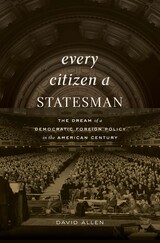 Every Citizen a Statesman: The Dream of a Democratic Foreign Policy in the American Century
David Allen
Harvard University Press, 2022 The surprising story of the movement to create a truly democratic foreign policy by engaging ordinary Americans in world affairs.
No major arena of US governance is more elitist than foreign policy. International relations barely surface in election campaigns, and policymakers take little input from Congress. But not all Americans set out to build a cloistered foreign policy “establishment.” For much of the twentieth century, officials, activists, and academics worked to foster an informed public that would embrace participation in foreign policy as a civic duty.
The first comprehensive history of the movement for “citizen education in world affairs,” Every Citizen a Statesman recounts an abandoned effort to create a democratic foreign policy. Taking the lead alongside the State Department were philanthropic institutions like the Ford and Rockefeller foundations and the Foreign Policy Association, a nonprofit founded in 1918. One of the first international relations think tanks, the association backed local World Affairs Councils, which organized popular discussion groups under the slogan “World Affairs Are Your Affairs.” In cities across the country, hundreds of thousands of Americans gathered in homes and libraries to learn and talk about pressing global issues.
But by the 1960s, officials were convinced that strategy in a nuclear world was beyond ordinary people, and foundation support for outreach withered. The local councils increasingly focused on those who were already engaged in political debate and otherwise decried supposed public apathy, becoming a force for the very elitism they set out to combat. The result, David Allen argues, was a chasm between policymakers and the public that has persisted since the Vietnam War, insulating a critical area of decisionmaking from the will of the people.
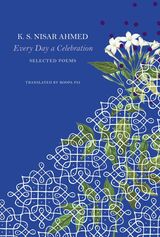 Every Day a Celebration: Selected Poems
K. S. Nisar Ahmed
Seagull Books, 2025 A poetic journey through five decades of Karnataka’s history, this collection brings K. S. Nisar Ahmed’s timeless verses to a new audience.
K. S. Nisar Ahmed captured the soul of Karnataka and the pulse of everyday life in verses that are as provocative as they are deeply lyrical. Every Day a Celebration gathers some of his finest poems, spanning over five decades, and introduces his voice to a wider audience through Roopa Pai’s sensitive translation. Steeped in both Romantic and Modernist traditions, his work fluidly interweaves Sanskrit and Urdu influences, blending intellectual rigor with heartfelt emotion.
Whether reflecting on the burdens of history or simply delighting in life’s fleeting joys, his words remain strikingly relevant across generations. With this landmark translation, English readers can now experience the brilliance of one of Kannada’s most beloved poets—a voice that continues to resonate with urgency and humanity.
Every Day A Holiday: A storyteller's memoir
Elizabeth Ellis
Parkhurst Brothers, Inc., 2014 “Elizabeth Ellis’s words jump off the page and into the secret part of your heart where you keep treasured memories and sacred feelings. She sings to you of her life and the lives of others with whom she intersects. Compassionate and thought provoking, an Appalachian/Texan with a whole-world point of view with a little rabble rousing thrown in, Elizabeth Ellis is a true master of the written and spoken word.”
--Robin Bady, Storyteller, Arts Educator, Brooklyn, New York
Every Day I Write the Book: Notes on Style
Amitava Kumar
Duke University Press, 2020 Amitava Kumar's Every Day I Write the Book is for academic writers what Annie Dillard's The Writing Life and Stephen King's On Writing are for creative writers. Alongside Kumar's interviews with an array of scholars whose distinct writing offers inspiring examples for students and academics alike, the book's pages are full of practical advice about everything from how to write criticism to making use of a kitchen timer. Communication, engagement, honesty: these are the aims and sources of good writing. Storytelling, attention to organization, solid work habits: these are its tools. Kumar's own voice is present in his essays about the writing process and in his perceptive and witty observations on the academic world. A writing manual as well as a manifesto, Every Day I Write the Book will interest and guide aspiring writers everywhere.
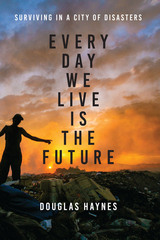 Every Day We Live Is the Future: Surviving in a City of Disasters
By Douglas Haynes
University of Texas Press, 2017 When she was only nine, Dayani Baldelomar left her Nicaraguan village with nothing more than a change of clothes. She was among tens of thousands of rural migrants to Managua in the 1980s and 1990s. After years of homelessness, Dayani landed in a shantytown called The Widows, squeezed between a drainage ditch and putrid Lake Managua. Her neighbor, Yadira Castellón, also migrated from the mountains. Driven by hope for a better future for their children, Dayani, Yadira, and their husbands invent jobs in Managua’s spreading markets and dumps, joining the planet’s burgeoning informal economy. But a swelling tide of family crises and environmental calamities threaten to break their toehold in the city. Dayani’s and Yadira’s struggles reveal one of the world’s biggest challenges: by 2050, almost one-third of all people will likely live in slums without basic services, vulnerable to disasters caused by the convergence of climate change and breakneck urbanization. To tell their stories, Douglas Haynes followed Dayani’s and Yadira’s families for five years, learning firsthand how their lives in the city are a tightrope walk between new opportunities and chronic insecurity. Every Day We Live Is the Future is a gripping, unforgettable account of two women’s herculean efforts to persevere and educate their children. It sounds a powerful call for understanding the growing risks to new urbanites, how to help them prosper, and why their lives matter for us all.
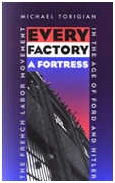 Every Factory a Fortress: The French Labor Movement in the Age of Ford and Hitler
Michael Torigian
Ohio University Press, 1999 French trade unions played a historical role in the 1930s quite unlike that of any other labor movement. Against a backdrop of social unrest, parliamentary crisis, and impending world war, industrial unionists in the great metal-fabricating plants of the Paris Region carried out a series of street mobilizations, factory occupations, and general strikes that were virtually unique in Western history. The unionization of the metal industry, following a series of anti-fascist demonstrations and plant seizures, would constitute the defining episode in modern French labor history and one of the great chapters in European social history. Yet little is known of these extraordinary events. With a style that captures the vivid character of these experiences, Every Factory a Fortress tells the story of the Paris metal workers, who succeeded in organizing the largest Communist union in the Western world, reshaping the parameters of French social relations, and, ultimately, altering the course of French destinies.
Every Farm Tells a Story: A Tale of Family Values
Jerry Apps
Wisconsin Historical Society Press, 2018 Jerry Apps details the virtues and hardships of rural living.
“Do your chores without complaining. Show up on time. Do every job well. Always try to do better. Never stop learning. Next year will be better. Care for others, especially those who have less than you. Accept those who are different from you. Love the land.”
In this paperback edition of a beloved Jerry Apps classic, the rural historian captures the heart and soul of life in rural America. Inspired by his mother’s farm account books—in which she meticulously recorded every farm purchase—Jerry chronicles life on a small farm during and after World War II. Featuring a new introduction exclusive to this 2nd edition, Every Farm Tells a Story reminds us that, while our family farms are shrinking in number, the values learned there remain deeply woven in our cultural heritage.
Every Form of Ruin: Poems
Erin Adair-Hodges
University of Pittsburgh Press, 2022 A rebuttal to Aeschylus’ Oresteia, Every Form of Ruin posits the Erinyes’ fury as righteous, understanding Clytemnestra’s rageful response to loss, and refusing Iphigenia’s relegation to a footnoted sacrifice. A fierce and darkly funny examination of anger, these lyrical poems push back against silencing by paying witness to a world where the experiences of women, nonbinary, and femme-identifying people are too often ignored, their responses dismissed as hysterical. These poems are also investigations into the loneliness of mid-life; the search for one’s own self when that self has given its life to service. Every Form of Ruin counters our culture’s erasure of women and resists the categorizations of maiden, mother, crone by blurring those distinctions through the creation of voices that are moved by rage and resistance.
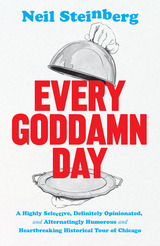 Every Goddamn Day: A Highly Selective, Definitely Opinionated, and Alternatingly Humorous and Heartbreaking Historical Tour of Chicago
Neil Steinberg
University of Chicago Press, 2022 A daily celebration of Chicago’s history, both known and obscure, and always entertaining.
Every day in Chicago is a day to remember. In a city so rich with history, every day is the anniversary of some storied historical or cultural moment, whether it’s the dedication of the Pablo Picasso sculpture downtown on August 15, or the arrest of Rod Blagojevich at his Ravenswood home on December 9, or a fire that possibly involved a cow on October 8.
In Every Goddamn Day, acerbic Chicago Sun-Times columnist Neil Steinberg takes the story of the city, pares away the dull, eat-your-peas parts, and provides 366 captivating daily readings in what makes Chicago Chicago and America America. It calls upon a wide cast of characters, from Oscar Wilde to Muhammad Ali, from Emma Goldman to Teddy Roosevelt, and from Richard M. Daley to Fred Hampton, to create a compelling narrative that can be read at a sitting or in a yearlong series of daily doses.
From New Year’s Day to New Years’ Eve, Steinberg takes us on a vivid and entertaining tour, illuminating the famous, obscure, tragic, and hilarious elements that make each day in Chicago memorable.
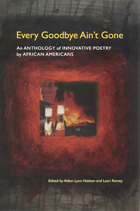 Every Goodbye Ain't Gone: An Anthology of Innovative Poetry by African Americans
Edited by Aldon Lynn Nielsen and Lauri Ramey
University of Alabama Press, 2006 Showcases brilliant and experimental work in African American poetry. Just prior to the Second World War, and even more explosively in the 1950s and 1960s, a far-reaching revolution in aesthetics and prosody by black poets ensued, some working independently and others in organized groups. Little of this new work was reflected in the anthologies and syllabi of college English courses of the period. Even during the 1970s, when African American literature began to receive substantial critical attention, the work of many experimental black poets continued to be neglected.
Every Goodbye Ain’t Gone presents the groundbreaking work of many of these poets who carried on the innovative legacies of Melvin Tolson, Gwendolyn Brooks, and Robert Hayden. Whereas poetry by such key figures such as Amiri Baraka, Tolson, Jayne Cortez, Clarence Major, and June Jordan is represented, this anthology also elevates into view the work of less studied poets such as Russell Atkins, Jodi Braxton, David Henderson, Bob Kaufman, Stephen Jonas, and Elouise Loftin. Many of the poems collected in the volume are currently unavailable and some will appear in print here for the first time.
Coeditors Aldon Lynn Nielsen and Lauri Ramey provide a critical introduction that situates the poems historically and highlights the ways such poetry has been obscured from view by recent critical and academic practices. The result is a record of experimentation, instigation, and innovation that links contemporary African American poetry to its black modernist roots and extends the terms of modern poetics into the future.
 Every Home a Fortress: Cold War Fatherhood and the Family Fallout Shelter
Thomas Bishop
University of Massachusetts Press, 2020 In Every Home a Fortress, Thomas Bishop details the remarkable cultural history and personal stories behind an iconic figure of Cold War masculinity—the fallout shelter father, who, with spade in hand and the canned goods he has amassed, sought to save his family from atomic warfare. Putting policy documents and presidential addresses into conversation with previously unmined personal letters, diaries, local media coverage, and antinuclear ephemera, Bishop demonstrates that the nuclear crisis years of 1957 to 1963 were not just pivotal for the history of international relations but were also a transitional moment in the social histories of the white middle class and American fatherhood. During this era, public concerns surrounding civil defense shaped private family conversations, and the fallout shelter emerged as a site at which ideas of nationhood, national security, and masculinity collided with the complex reality of trying to raise and protect a family in the nuclear age.
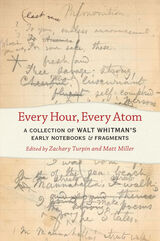 Every Hour, Every Atom: A Collection of Walt Whitman's Early Notebooks and Fragments
Walt Whitman, Zachary Turpin and Matt Miller
University of Iowa Press, 2020 Some of the dimmest years in Walt Whitman’s life precede the advent of Leaves of Grass in 1855, when he was working as a journalist and fiction writer. Starting around 1850, what he’d begun writing in his personal notebooks was far more enigmatic than anything he’d done before. One of Whitman’s most secretive projects during this timeframe was a novel, Life and Adventures of Jack Engle; serialized anonymously in the spring of 1852, and rediscovered and properly published in 2017. The key to the novel’s later discovery were plot notes Whitman had made in one of his private notebooks. Whitman’s invaluable notebooks have been virtually inaccessible to the public, until now. Maintaining the early notebooks’ wild, syncretic feel and sample illustrations of Whitman’s beautiful and unkempt pages, scholars Zachary Turpin and Matt Miller’s thorough transcriptions have made these notebooks available to all; sharing Whitman’s secret space for developing his poetry, his writing, his philosophy, and himself.
|
|
